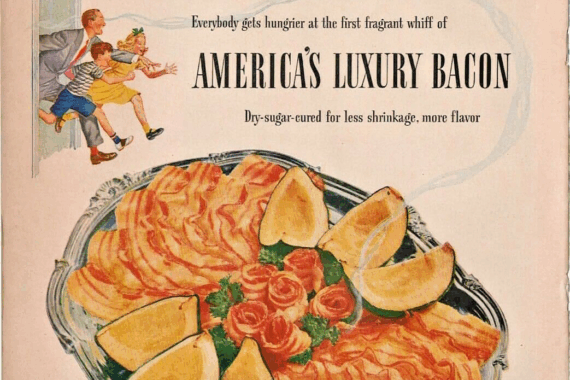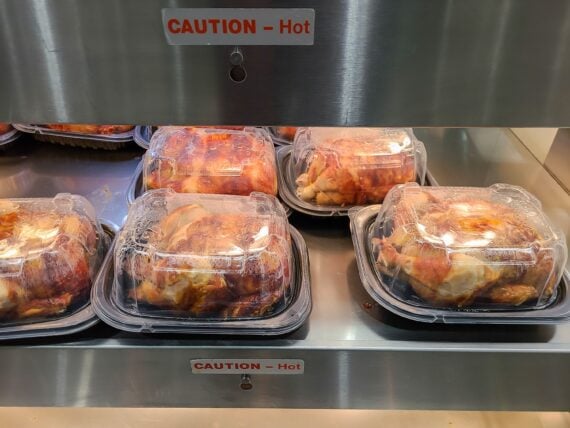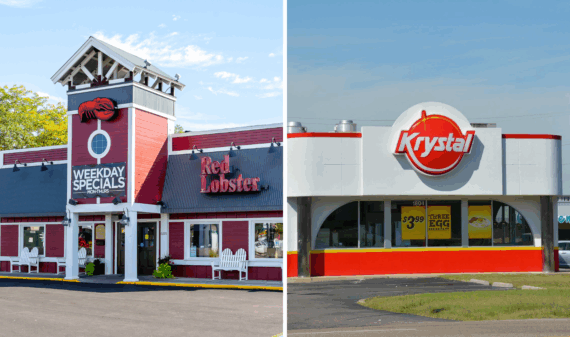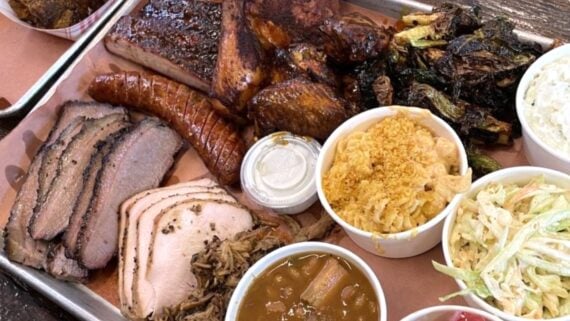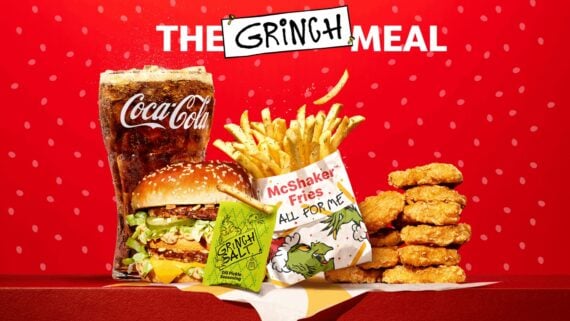It’s safe to say America is obsessed with bacon. We’ve long enjoyed delicious strips of bacon with our eggs and on our burgers, but now we’re finding increasingly creative ways to eat more bacon — from desserts to cocktails. Of course, anyone who’s been to the grocery store lately knows that, along with just about everything else, our favorite guilty pleasure has skyrocketed in price: A pound of bacon costs an average $7.21 in 2025. To find out how that compares to years past (spoiler alert — yes, it has cost even more) read on.
1940
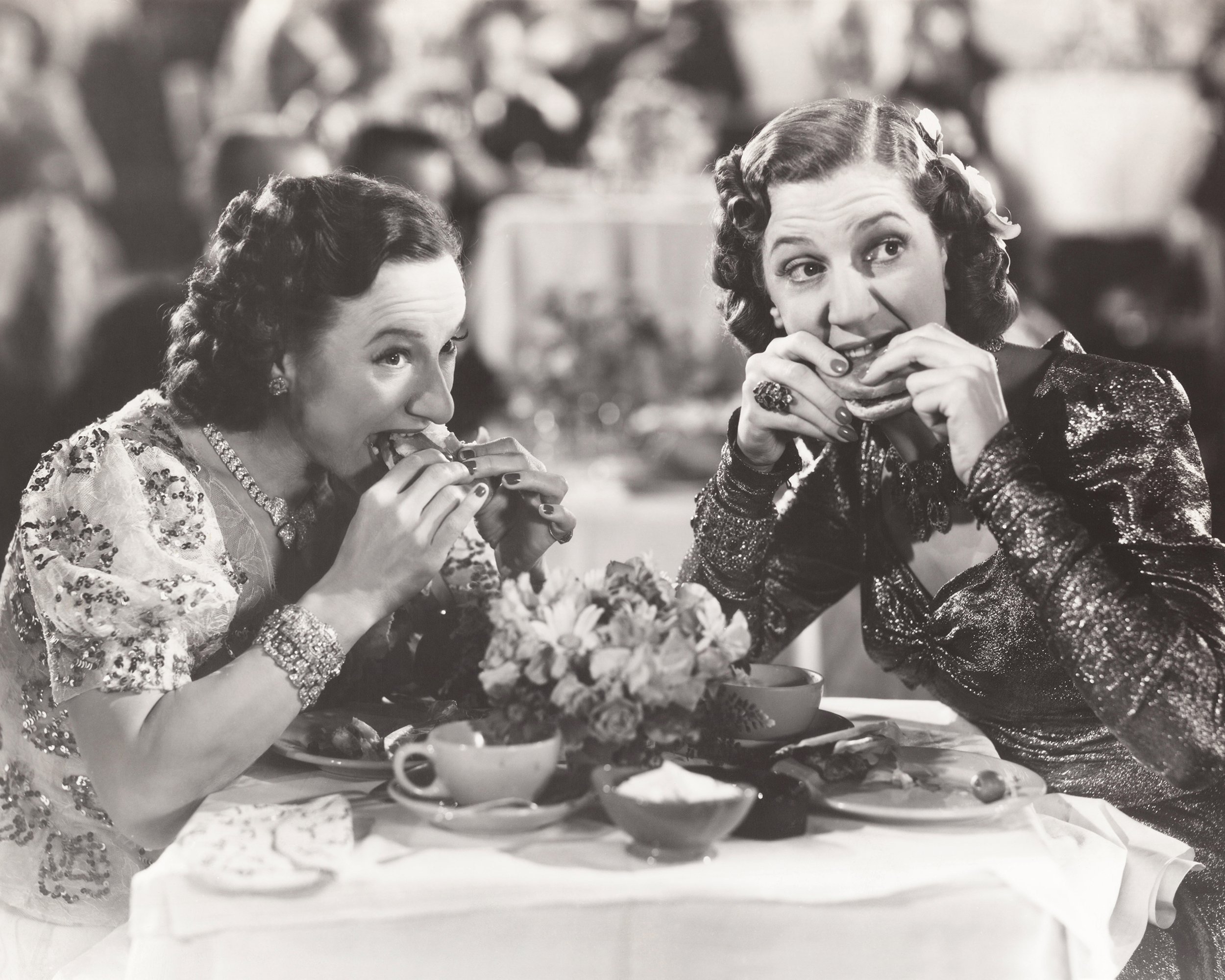
Cost of Bacon: $0.23
Inflation-Adjusted Cost (in 2025 dollars): $5.37
Having made it through the Great Depression when goods such as bacon were a luxury for many, Americans enjoyed a period of relatively low prices for the good stuff. But in the midst of World War II, the country’s resources — including meat — were redirected toward the war effort, and those prices began to rise.
1941
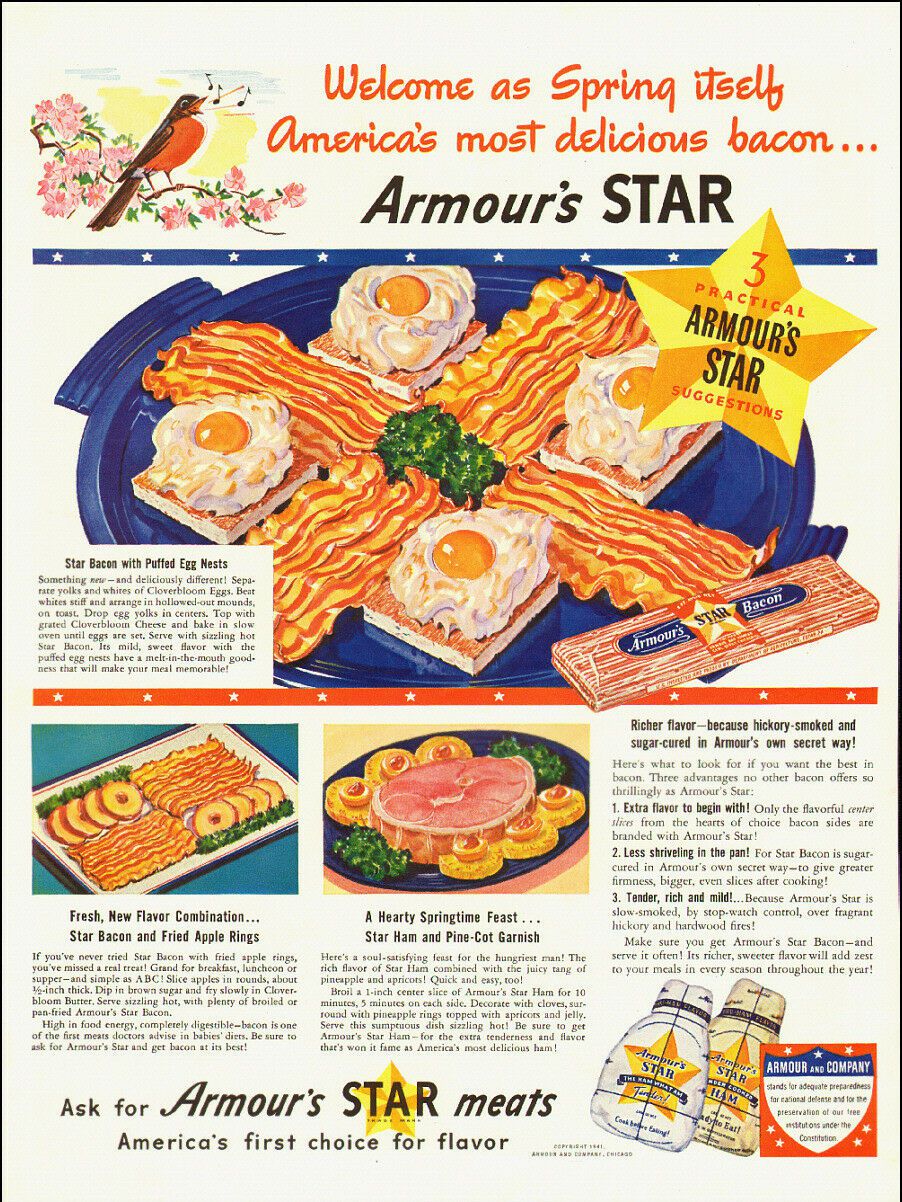
Cost of Bacon: $0.29
Inflation-Adjusted Cost: $6.68
1942
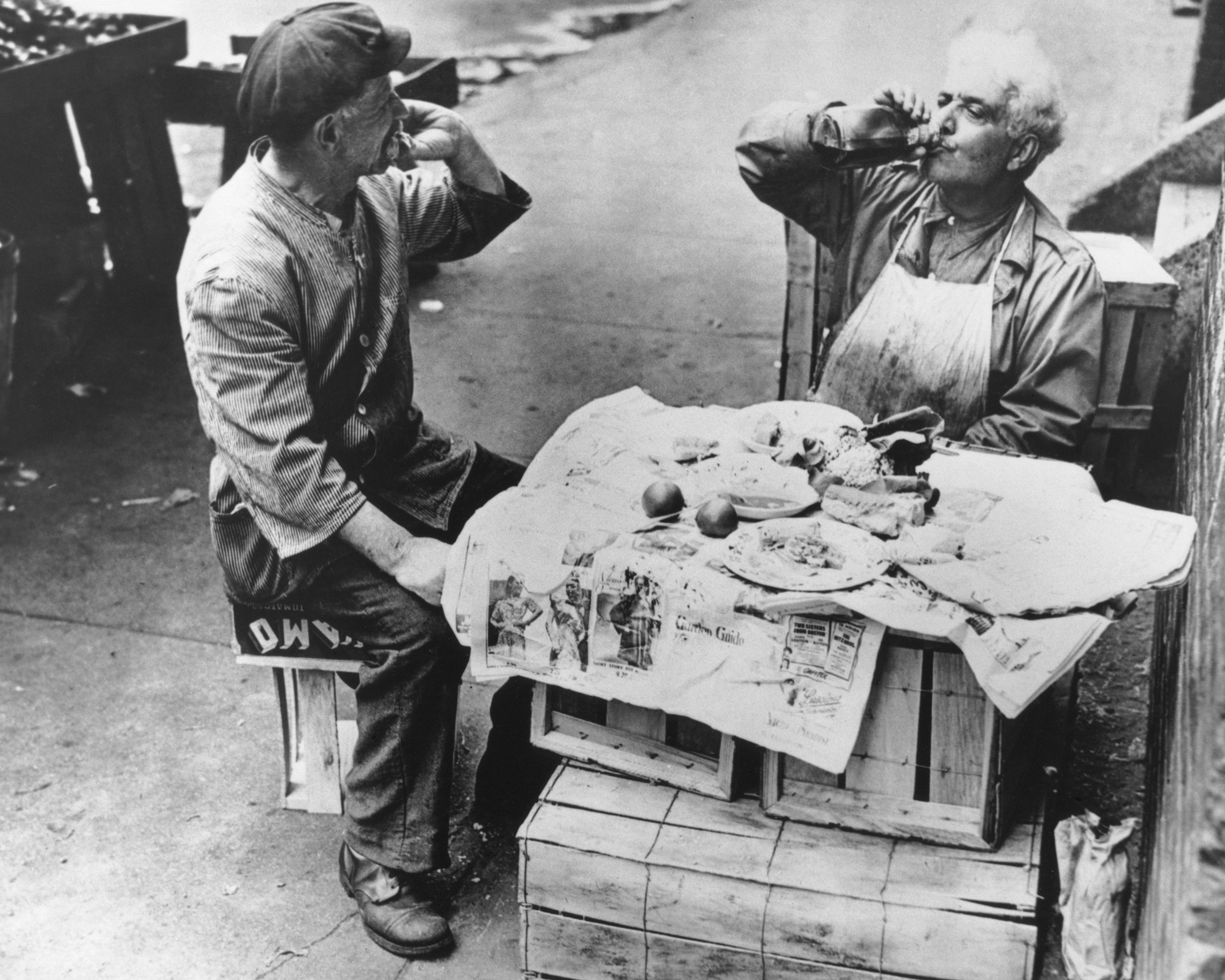
Cost of Bacon: $0.34
Inflation-Adjusted Cost: $7.03
The U.S. entry into World War II may have helped employ millions of Americans following the Depression, but that also meant that more people were able to afford bacon — and more of it — than before. Combined with the demands for food reserves for servicemen heading to the front lines, the price of bacon spiked.
1943
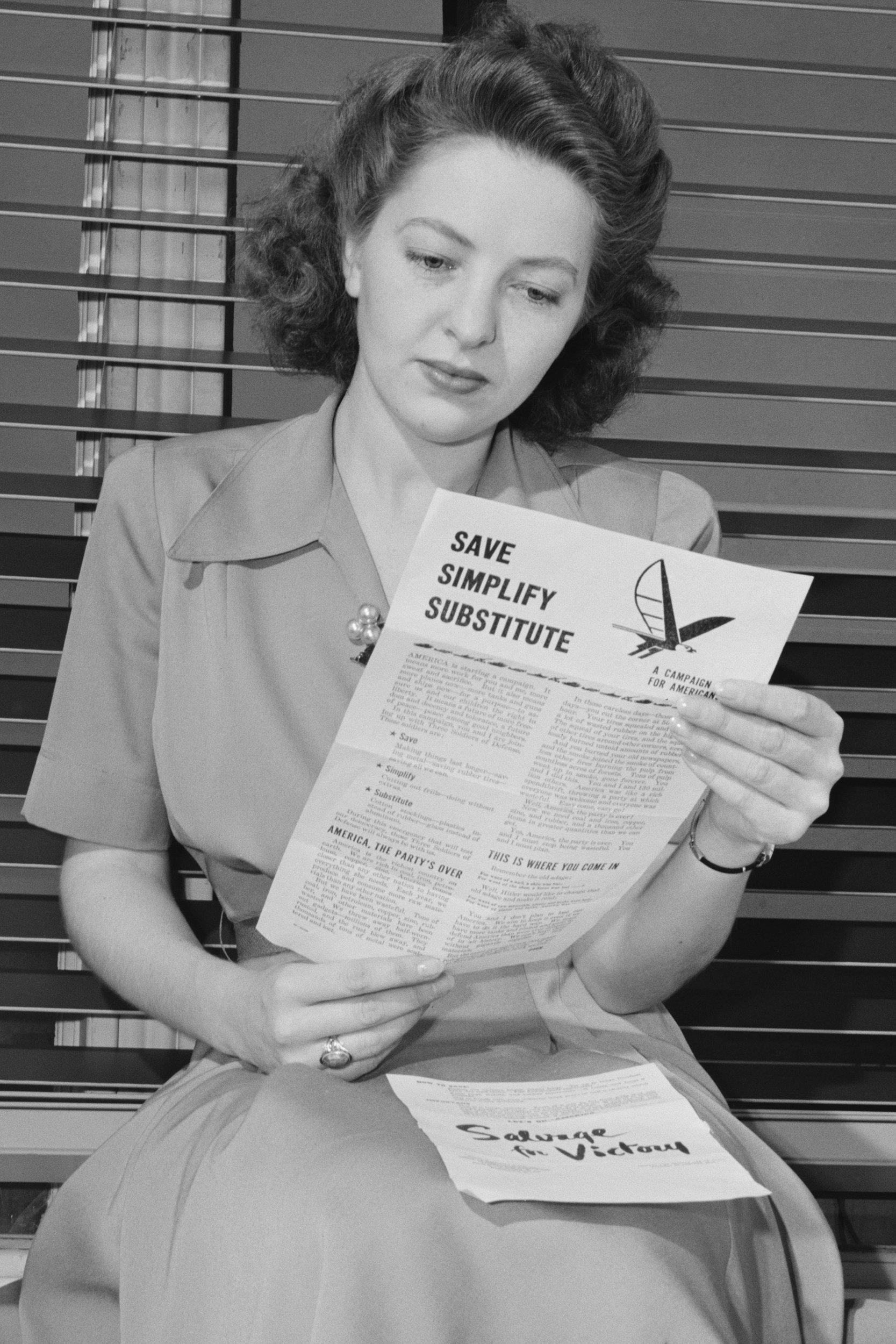
Cost of Bacon: $0.35
Inflation-Adjusted Cost: $6.73
To help counteract the rising prices of bacon and other goods during the war, the U.S. government instituted a complex rationing program. While it likely helped reduce bacon prices in the years to come, it meant shoppers often had to use stamps or points to buy things such as bacon and monitor changing prices constantly. It also meant that bacon was sometimes unavailable at the local market, and led to a black market of point trading and selling for some.
1944
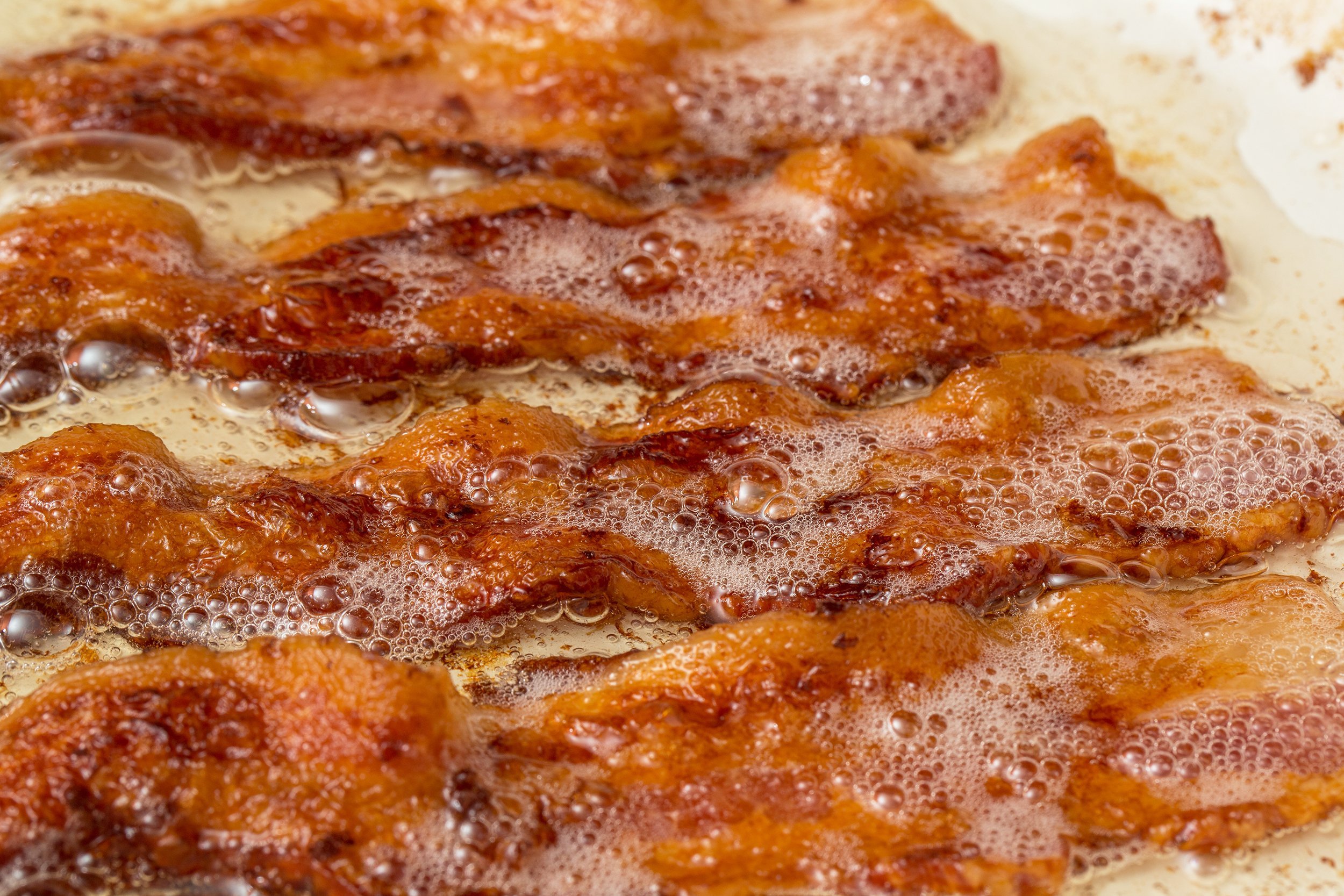
Cost of Bacon: $0.33
Inflation-Adjusted Cost: $6.16
While the price of bacon declined steadily during the war, those at home were encouraged to save their bacon grease for the war effort. The fat was converted into glycerin, which was used to make certain bombs. Only about half of Americans donated to the effort, however, as cooking fats and oils were in short supply, and Americans had long used bacon grease in the kitchen and were reluctant to give it up.
Trending on Cheapism
1945
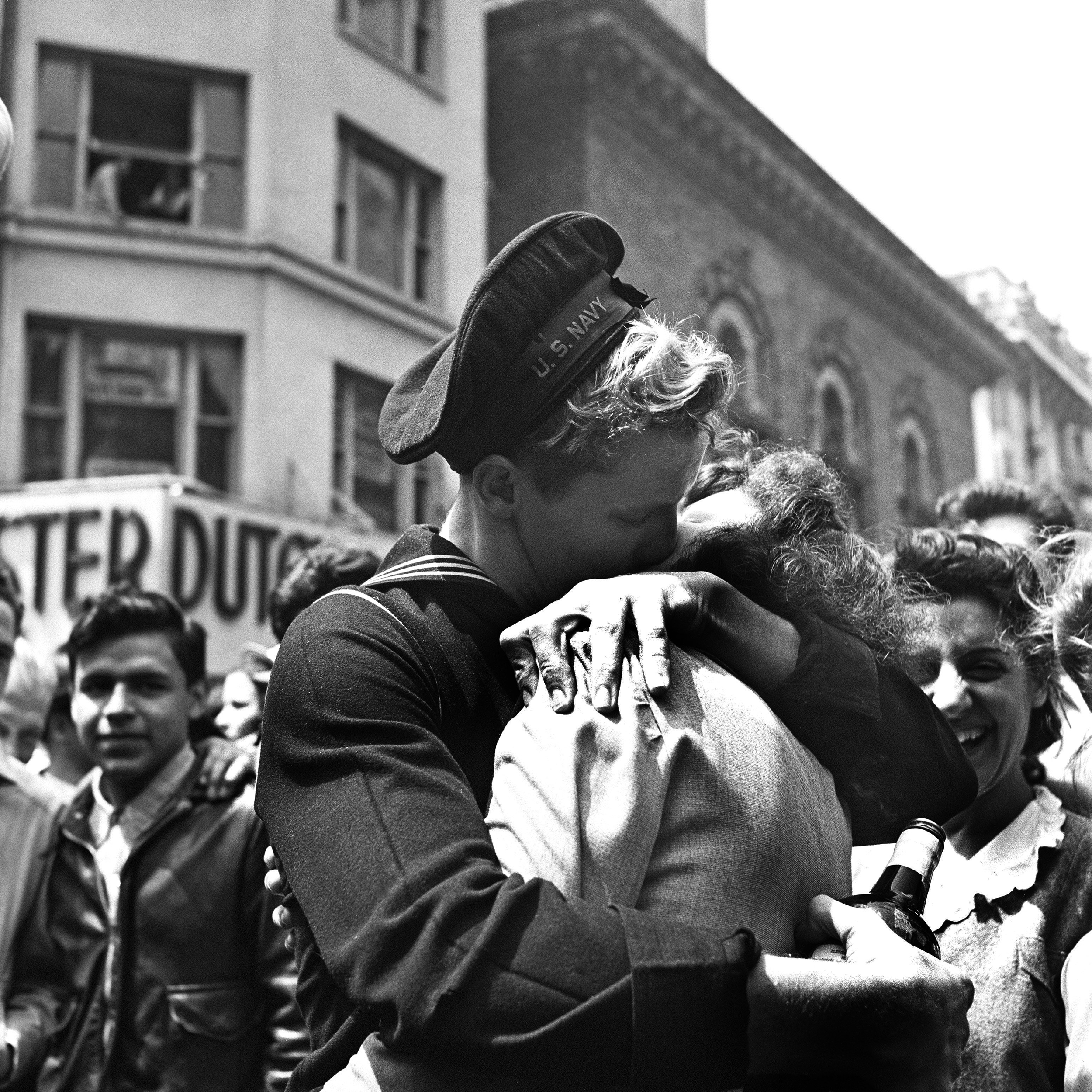
Cost of Bacon: $0.34
Inflation-Adjusted Cost: $6.20
1946
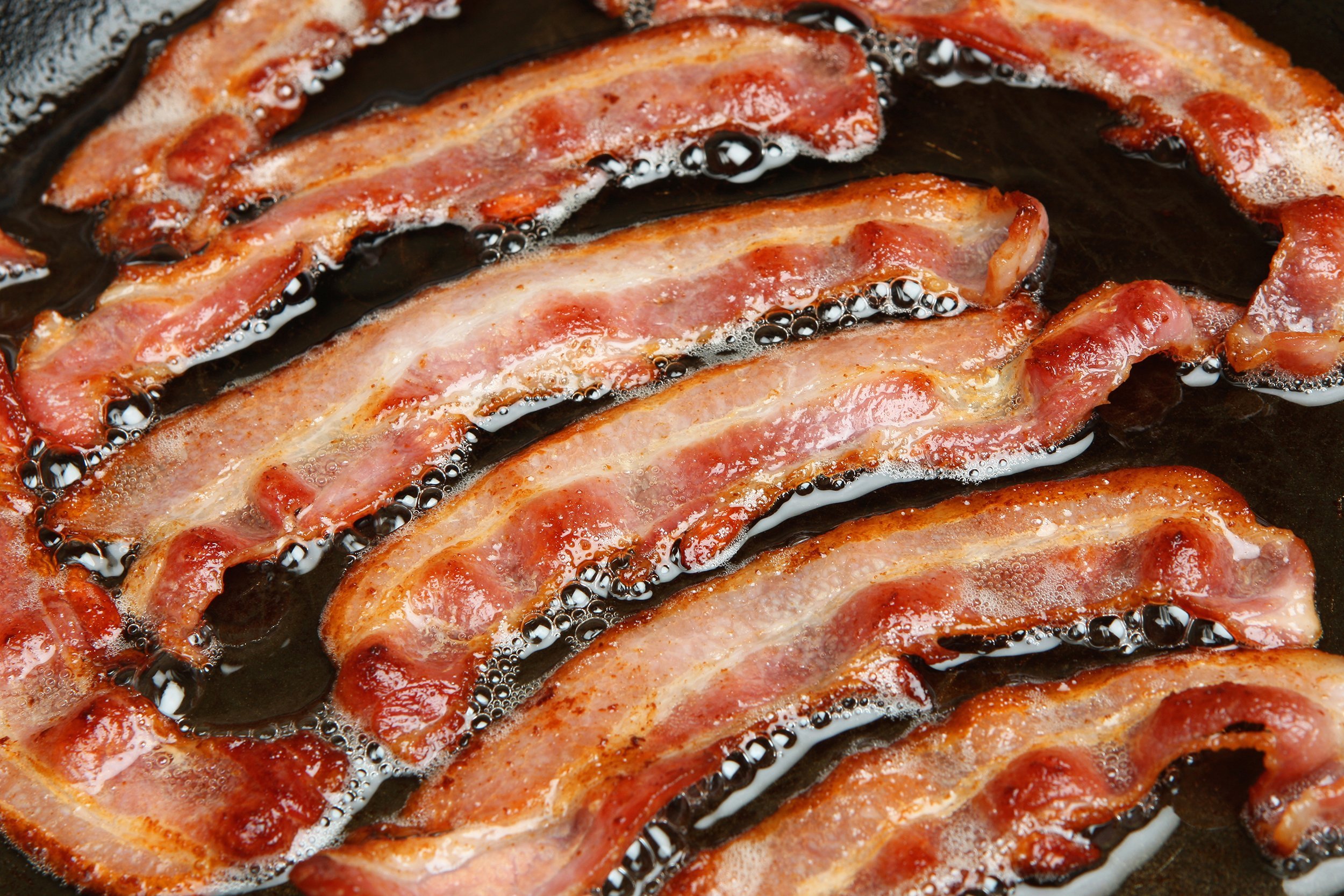
Cost of Bacon: $0.44
Inflation-Adjusted Cost: $7.85
1947
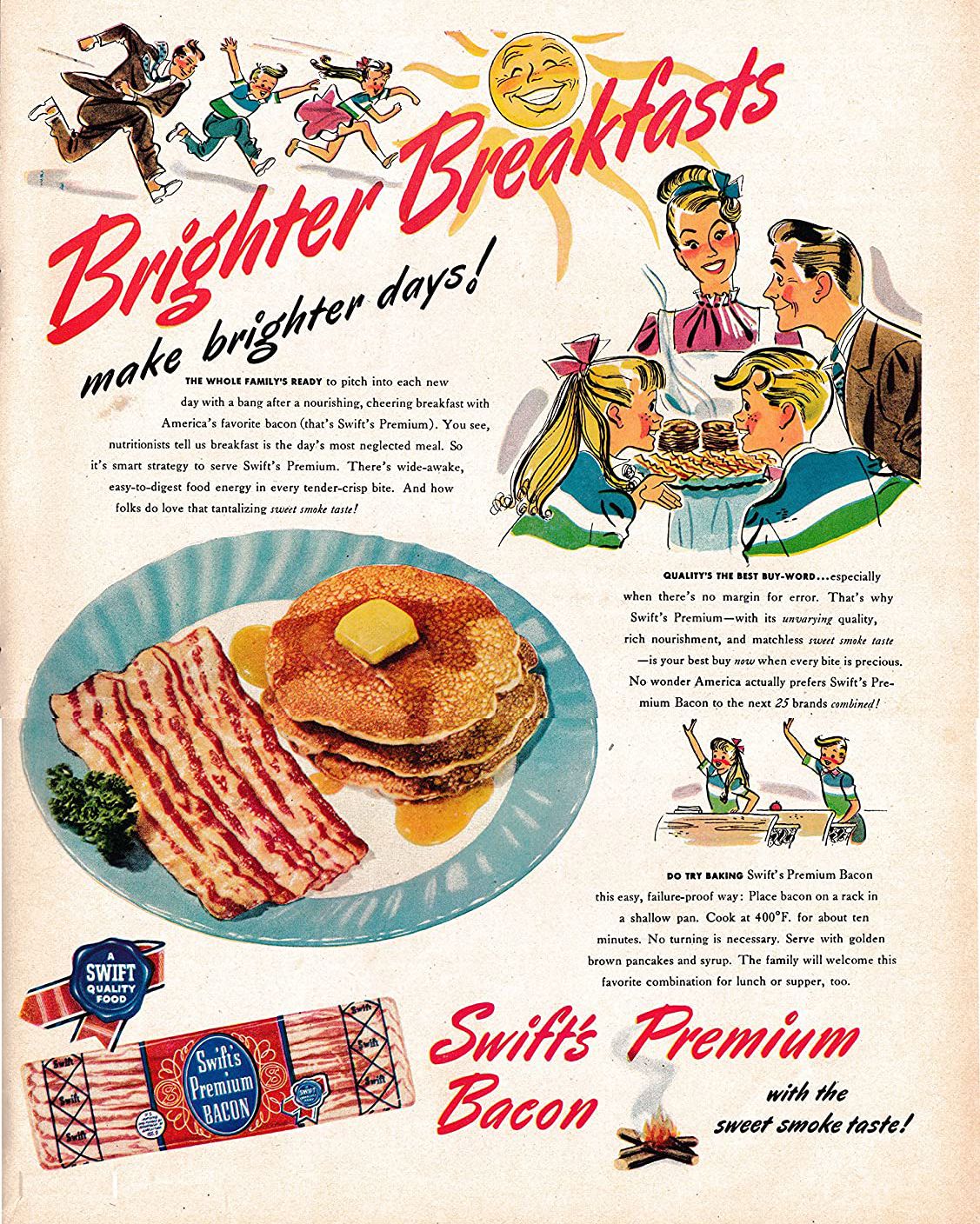
Cost of Bacon: $0.64
Inflation-Adjusted Cost: $9.67
The costs of goods and services often rise following a war, and bacon prices were no exception. When adjusted for inflation, bacon reached one of the highest prices in recent history, likely leading some bacon lovers to do without for a while.
Sign up for our newsletter
1948
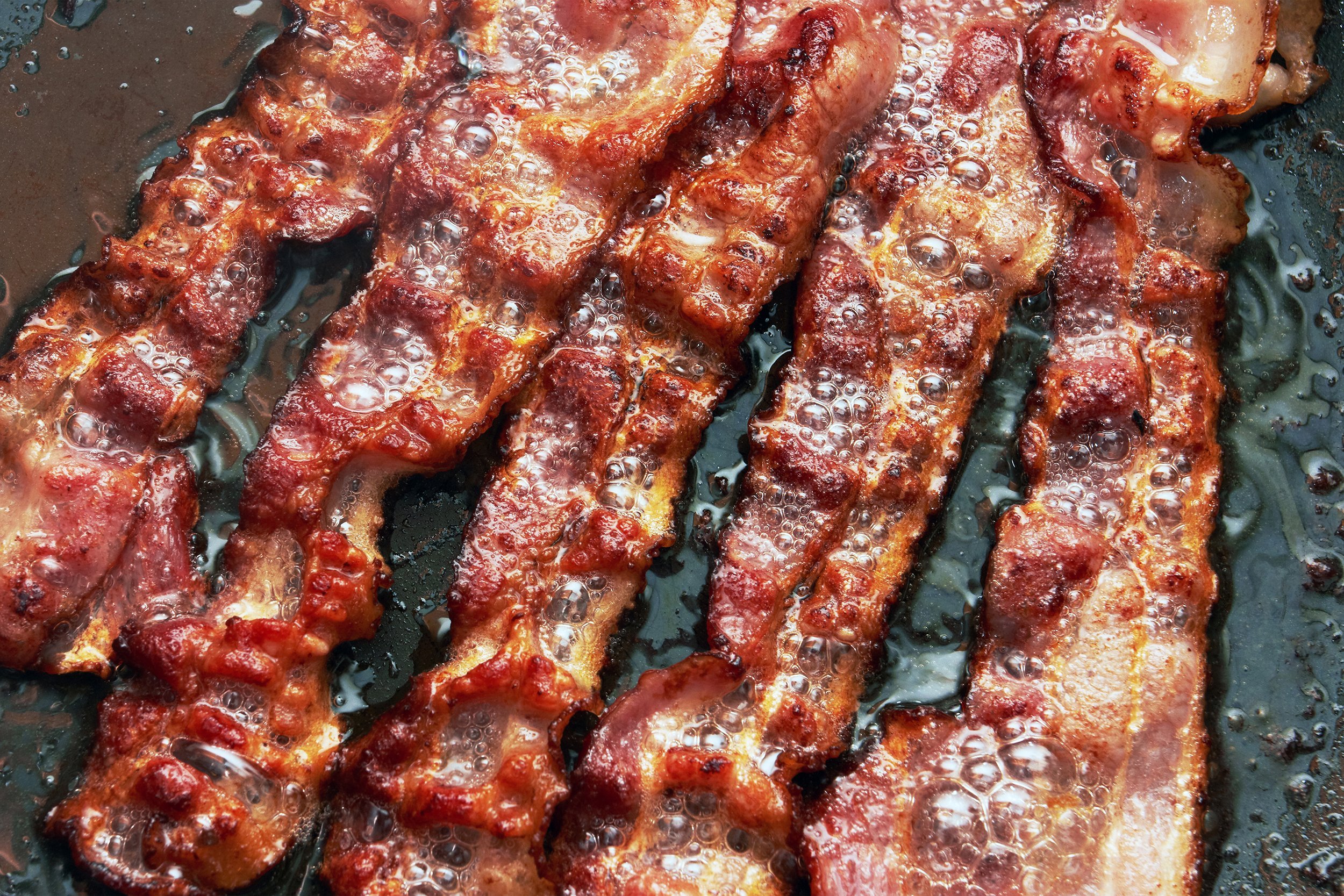
Cost of Bacon: $0.63
Inflation-Adjusted Cost: $8.63
1949
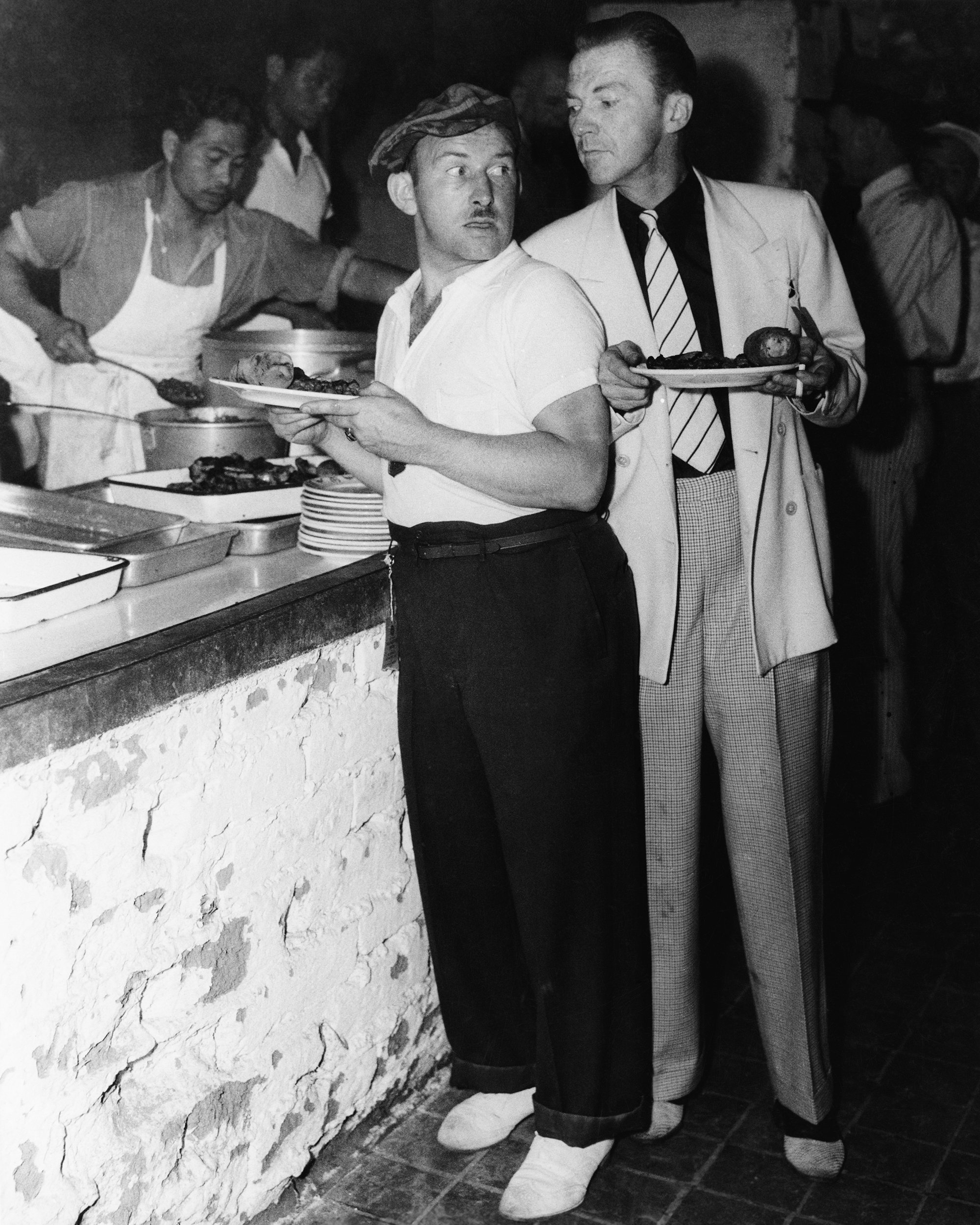
Cost of Bacon: $0.55
Inflation-Adjusted Cost: $7.44
1950
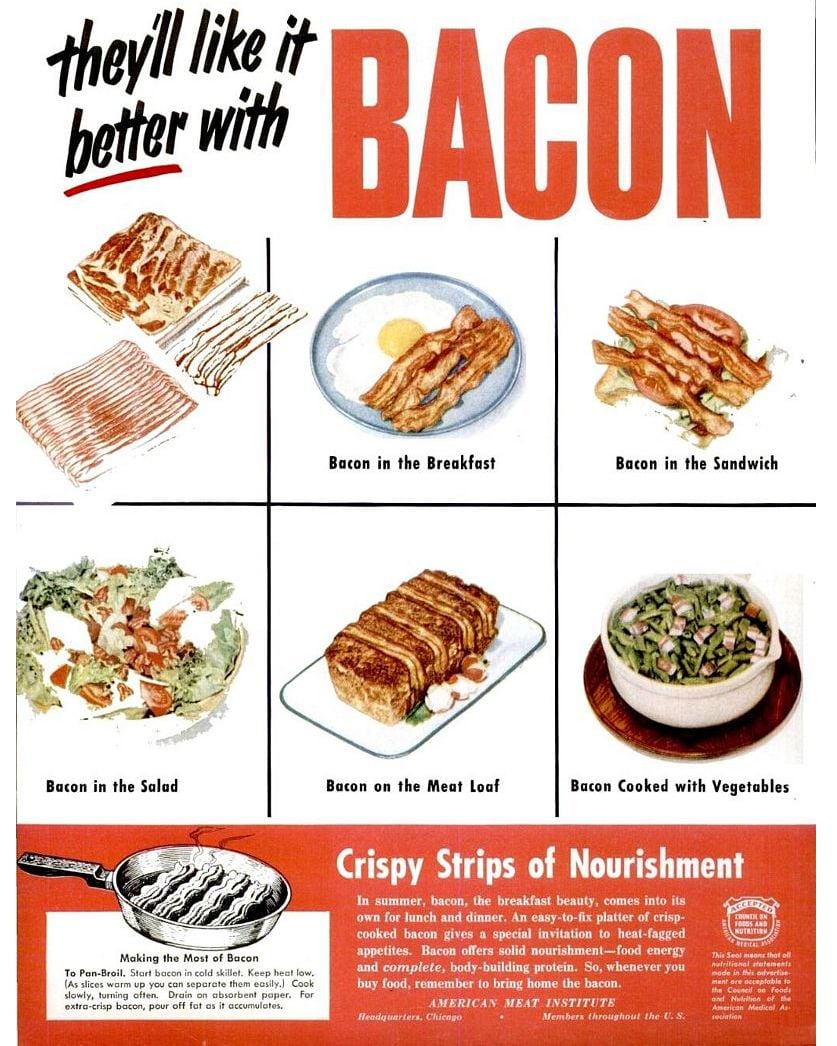
Cost of Bacon: $0.52
Inflation-Adjusted Cost: $7.19
1951
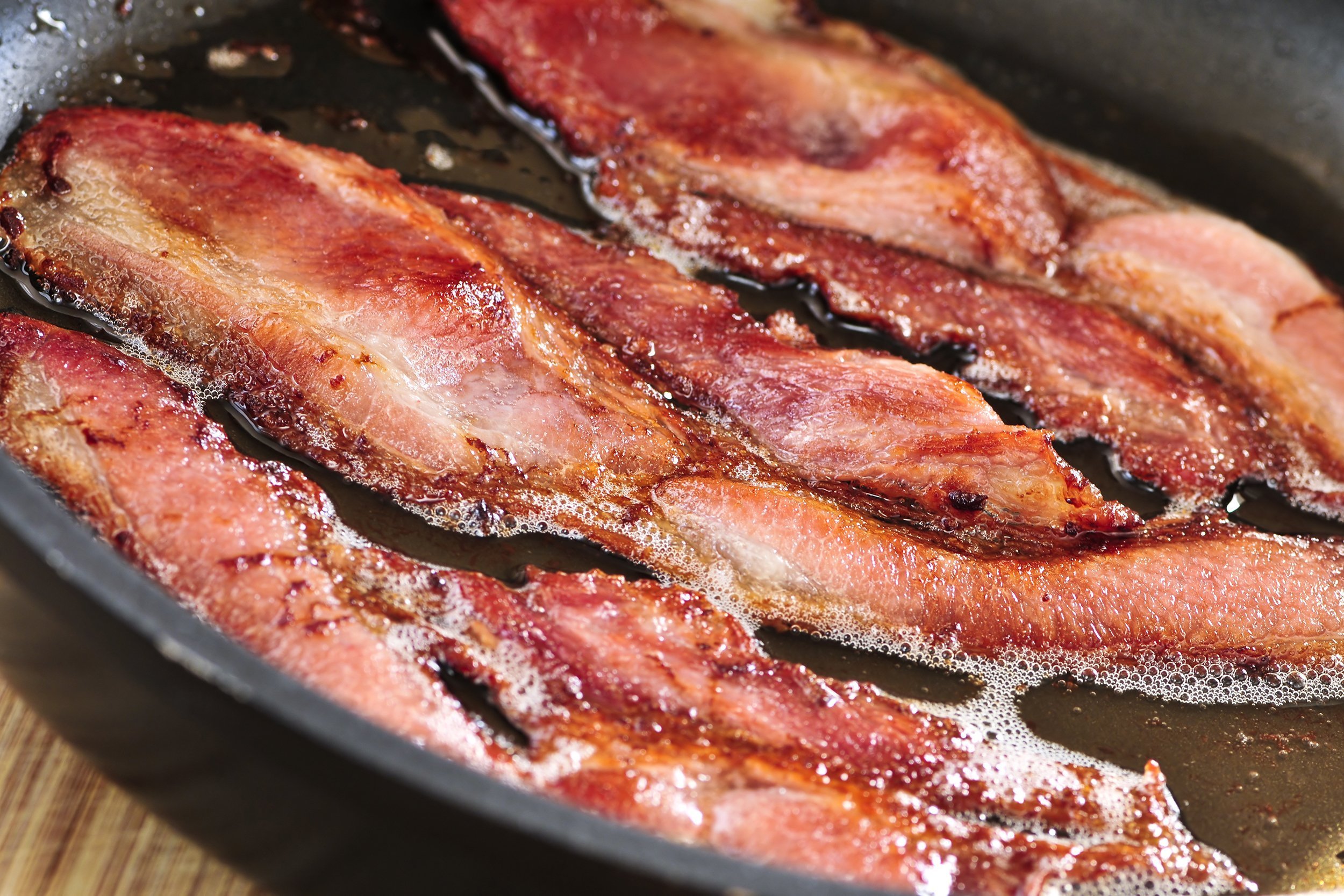
Cost of Bacon: $0.55
Inflation-Adjusted Cost: $7.03
1952
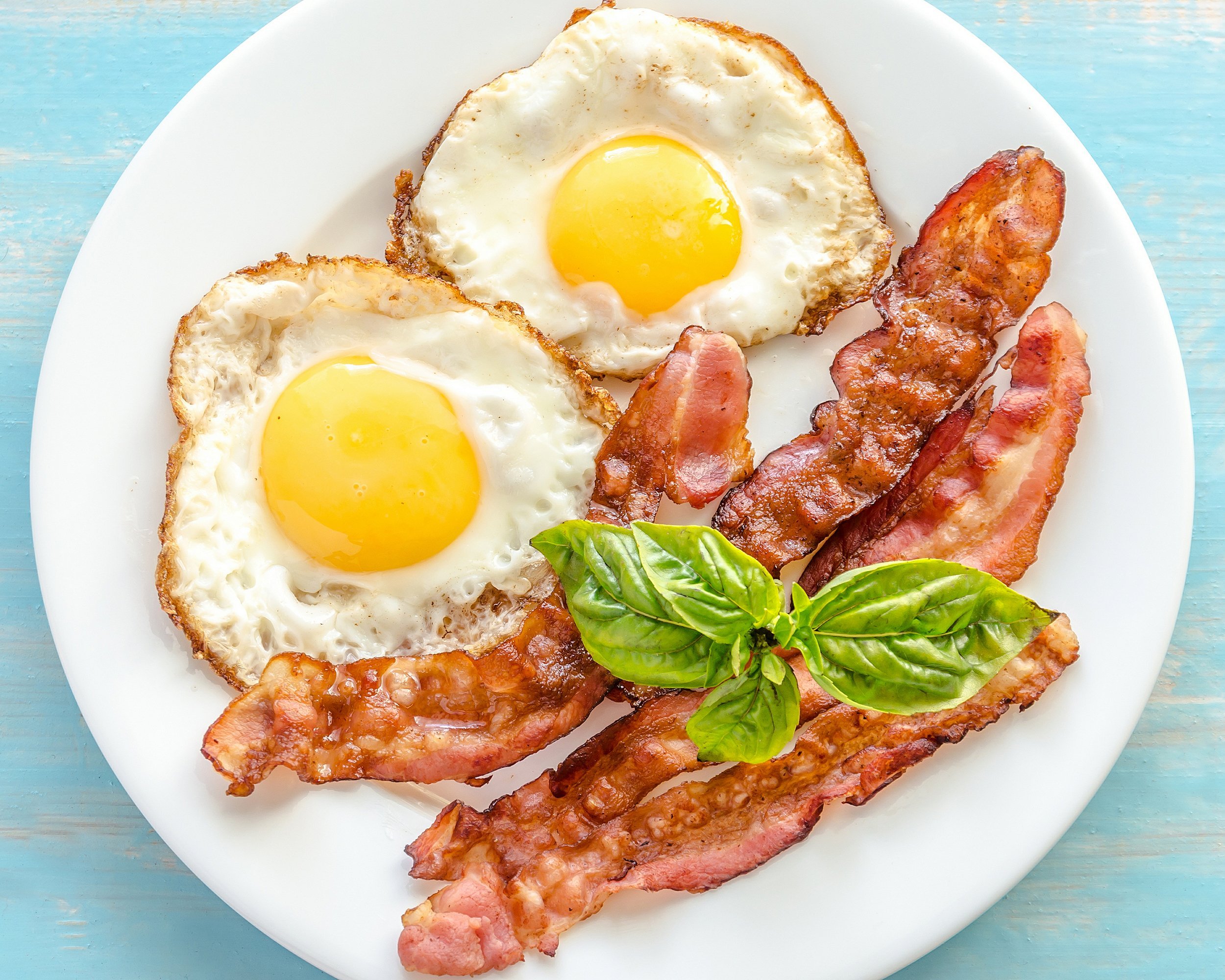
Cost of Bacon: $0.53
Inflation-Adjusted Cost: $6.50
As Americans settled back into business as usual following the war years, the cost of bacon also steadily declined and reached lows not seen in years. Bacon and eggs once again made regular appearances on breakfast tables around the country.
1953
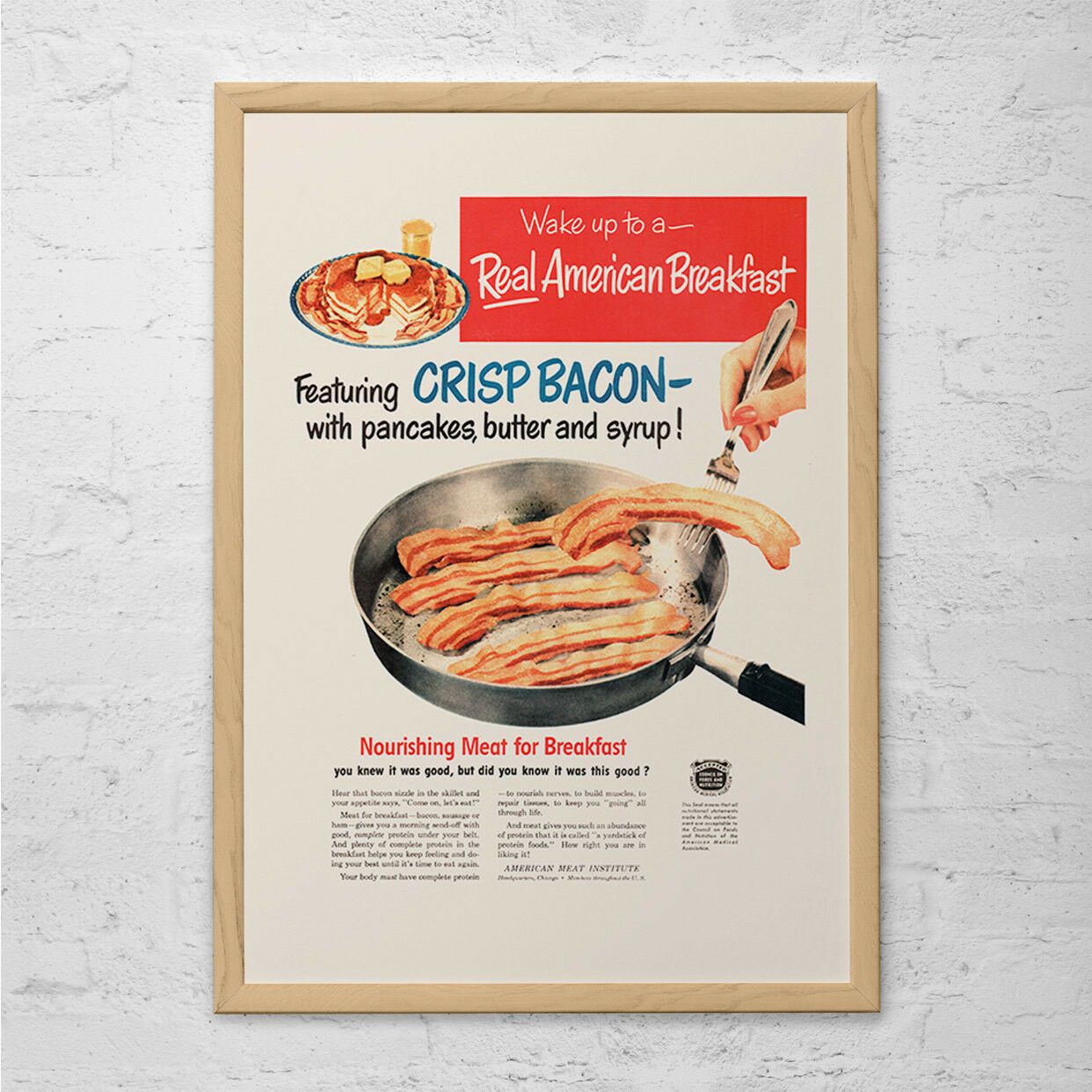
Cost of Bacon: $0.65
Inflation-Adjusted Cost: $7.94
1954
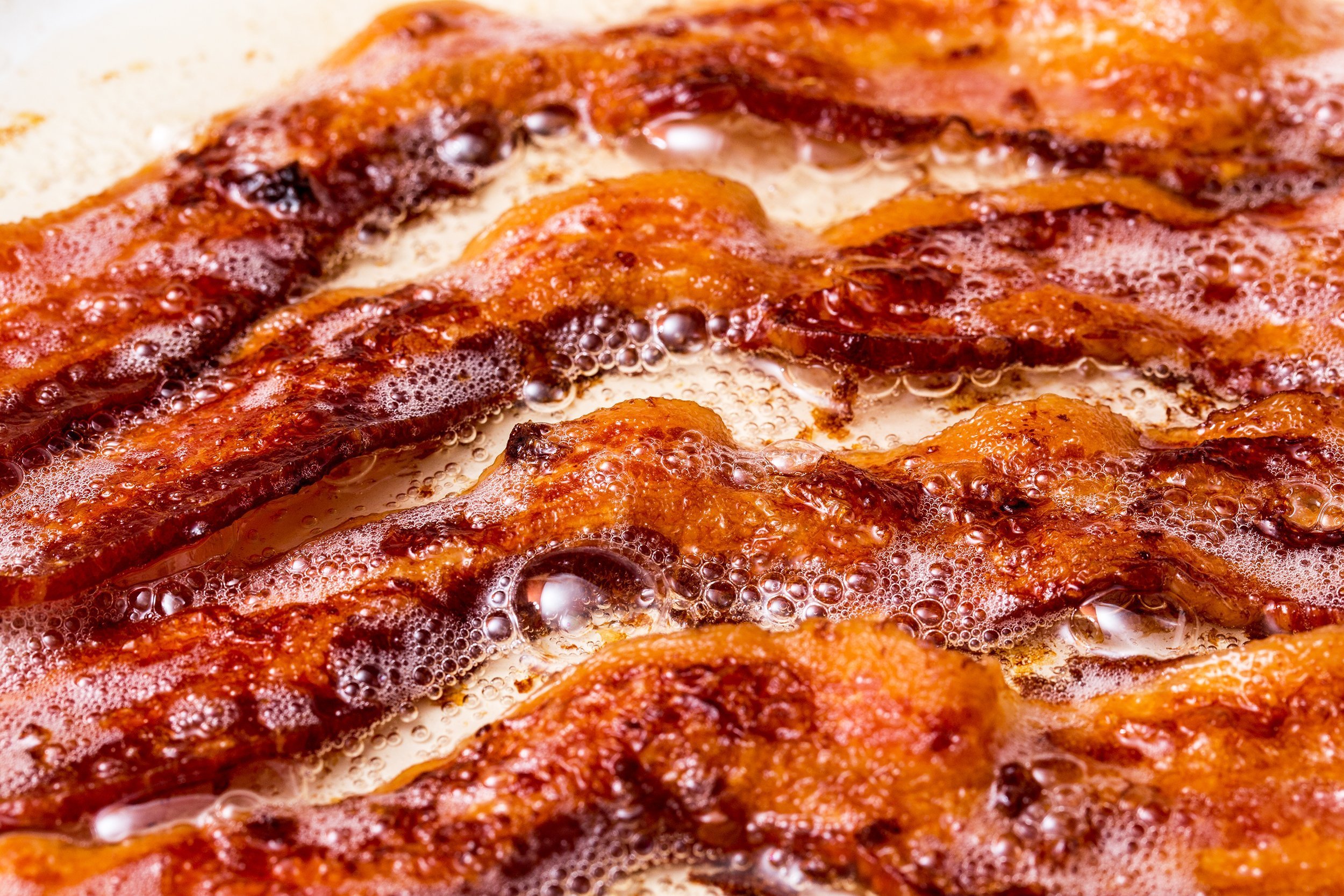
Cost of Bacon: $0.67
Inflation-Adjusted Cost: $8.09
1955
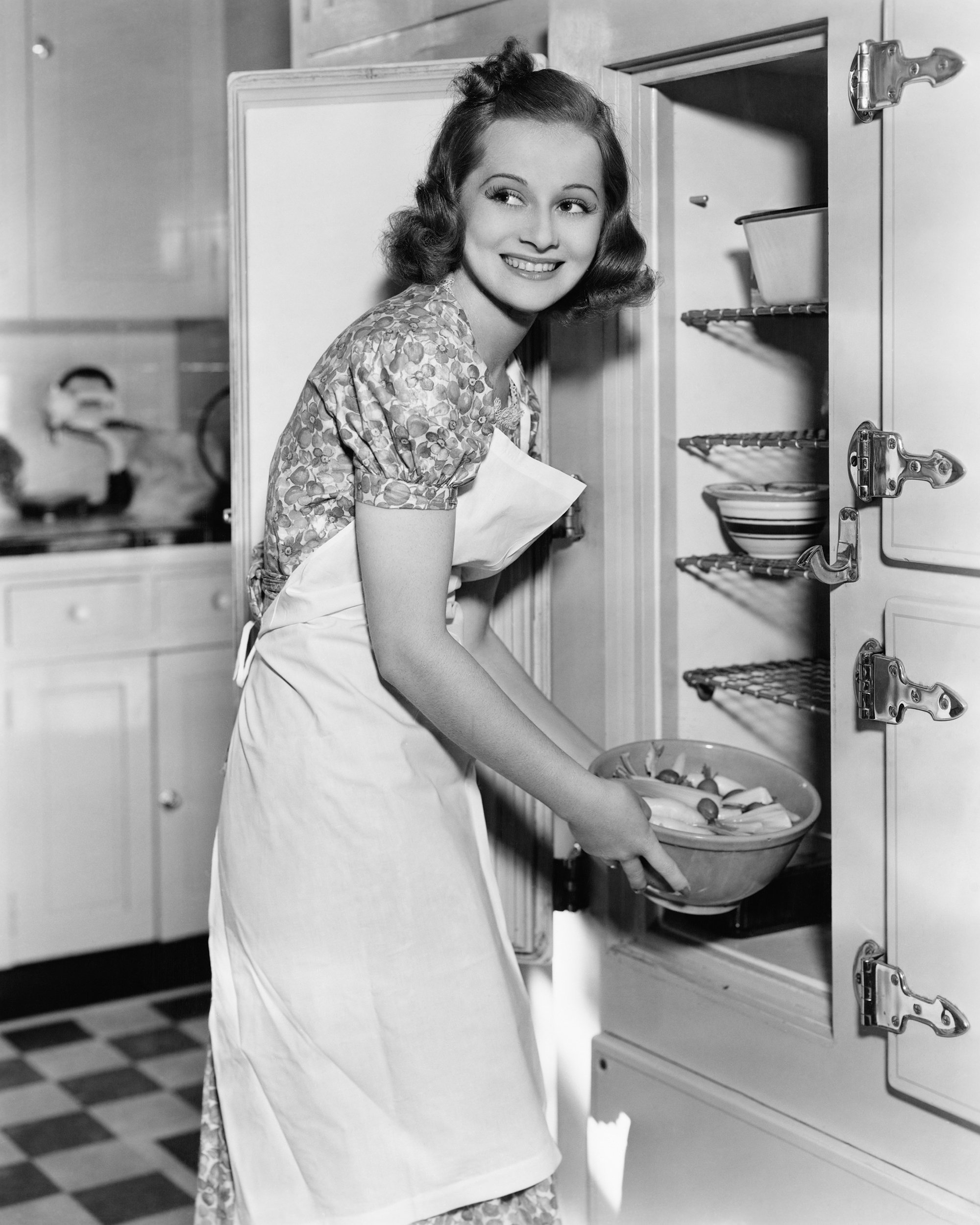
Cost of Bacon: $0.54
Inflation-Adjusted Cost: $6.57
1956
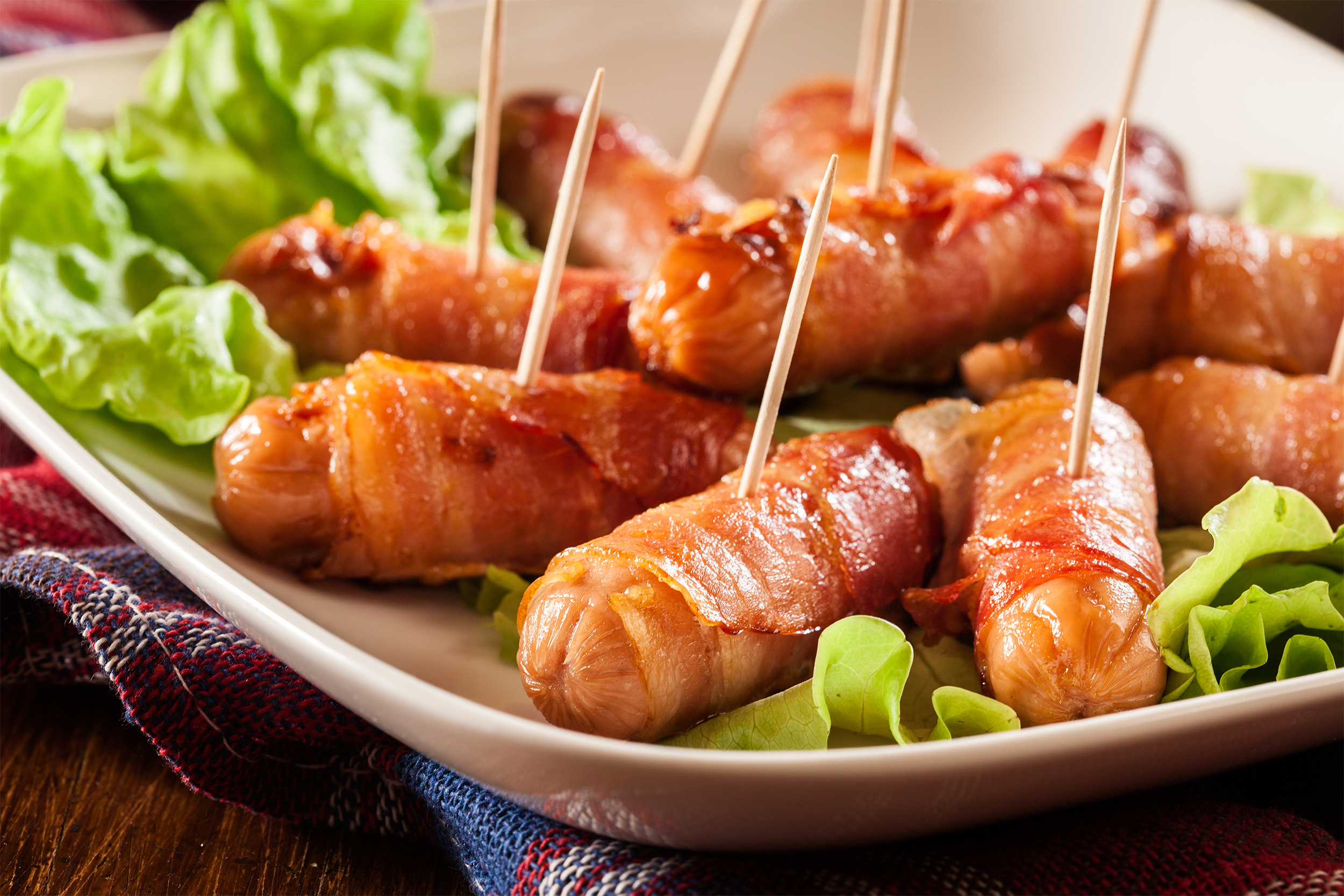
Cost of Bacon: $0.48
Inflation-Adjusted Cost: $5.82
Despite a few spikes in the early ’50s, the young baby boomer generation enjoyed plenty of bacon bought at reasonable prices through the middle of the decade. It was also a time when bacon and cheese balls and items wrapped in bacon became increasingly popular at cocktail parties — more bacon for everyone.
1957
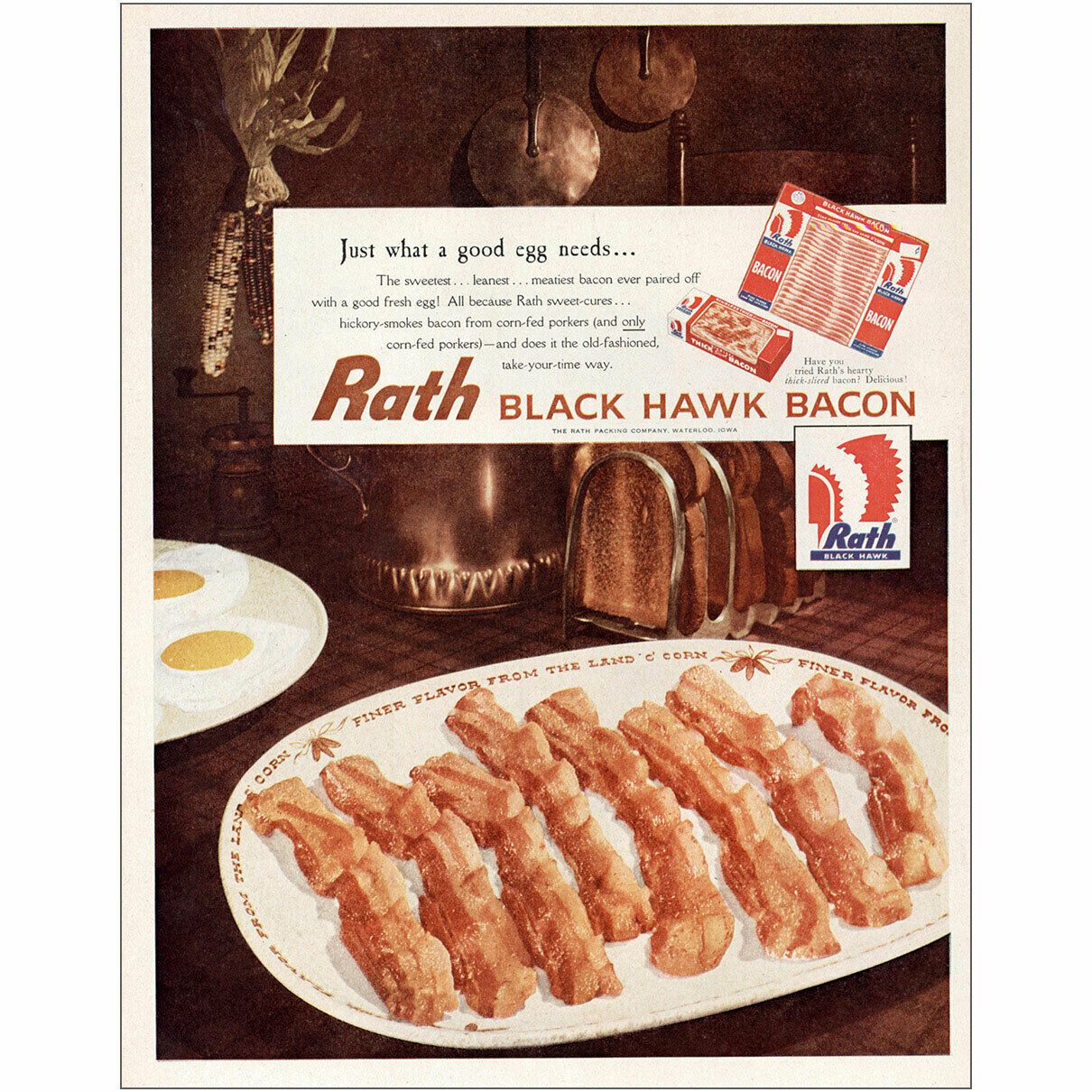
Cost of Bacon: $0.62
Inflation-Adjusted Cost: $7.30
1958
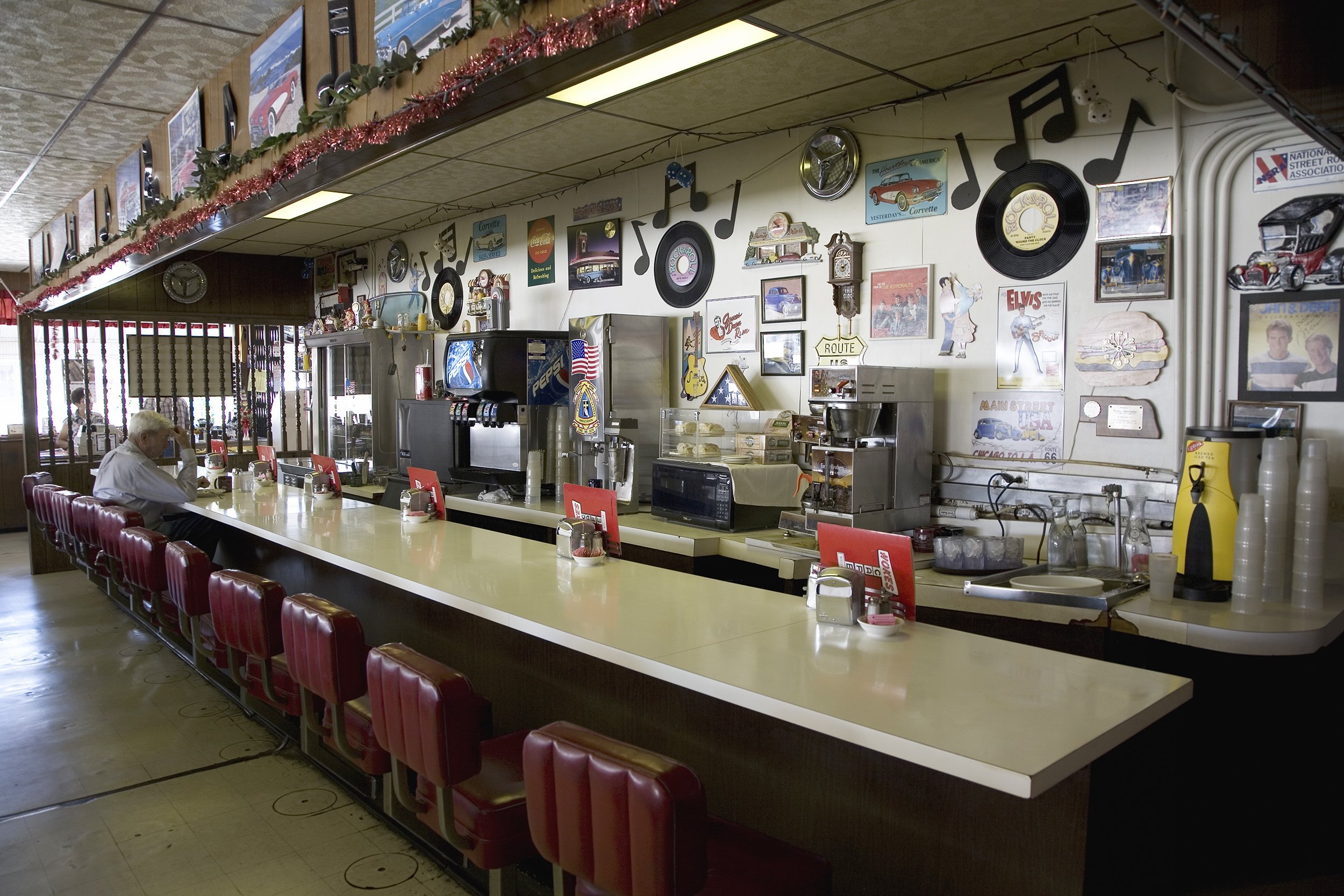
Cost of Bacon: $0.66
Inflation-Adjusted Cost: $7.50
1959
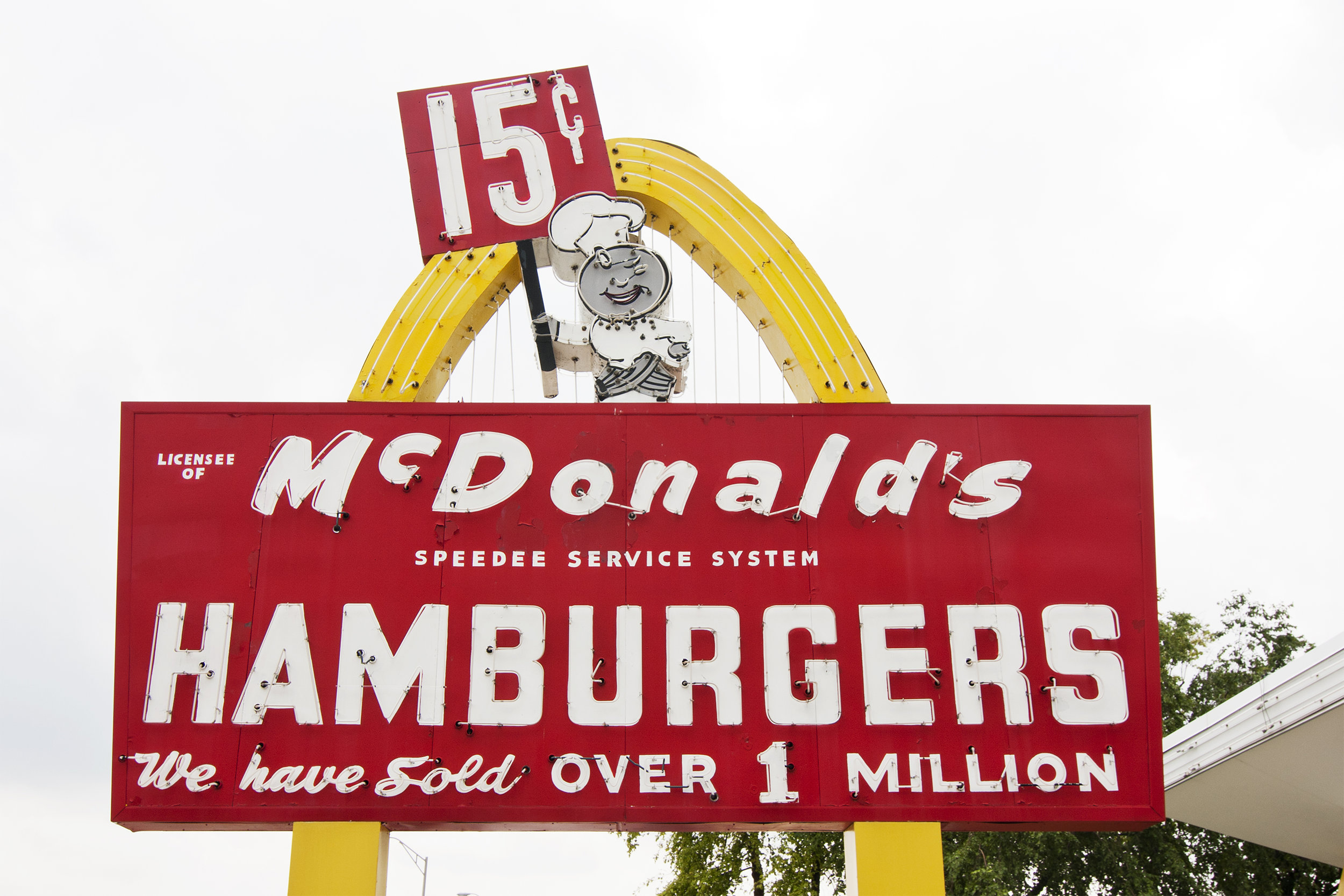
Cost of Bacon: $0.55
Inflation-Adjusted Cost: $6.16
By the end of the 1950s, the economy was booming, and Americans enjoyed low prices on one of their favorite breakfast items. As more people started moving to the suburbs and fast-food companies began to spread across the country, Americans were eating more bacon on the go and at home.
1960
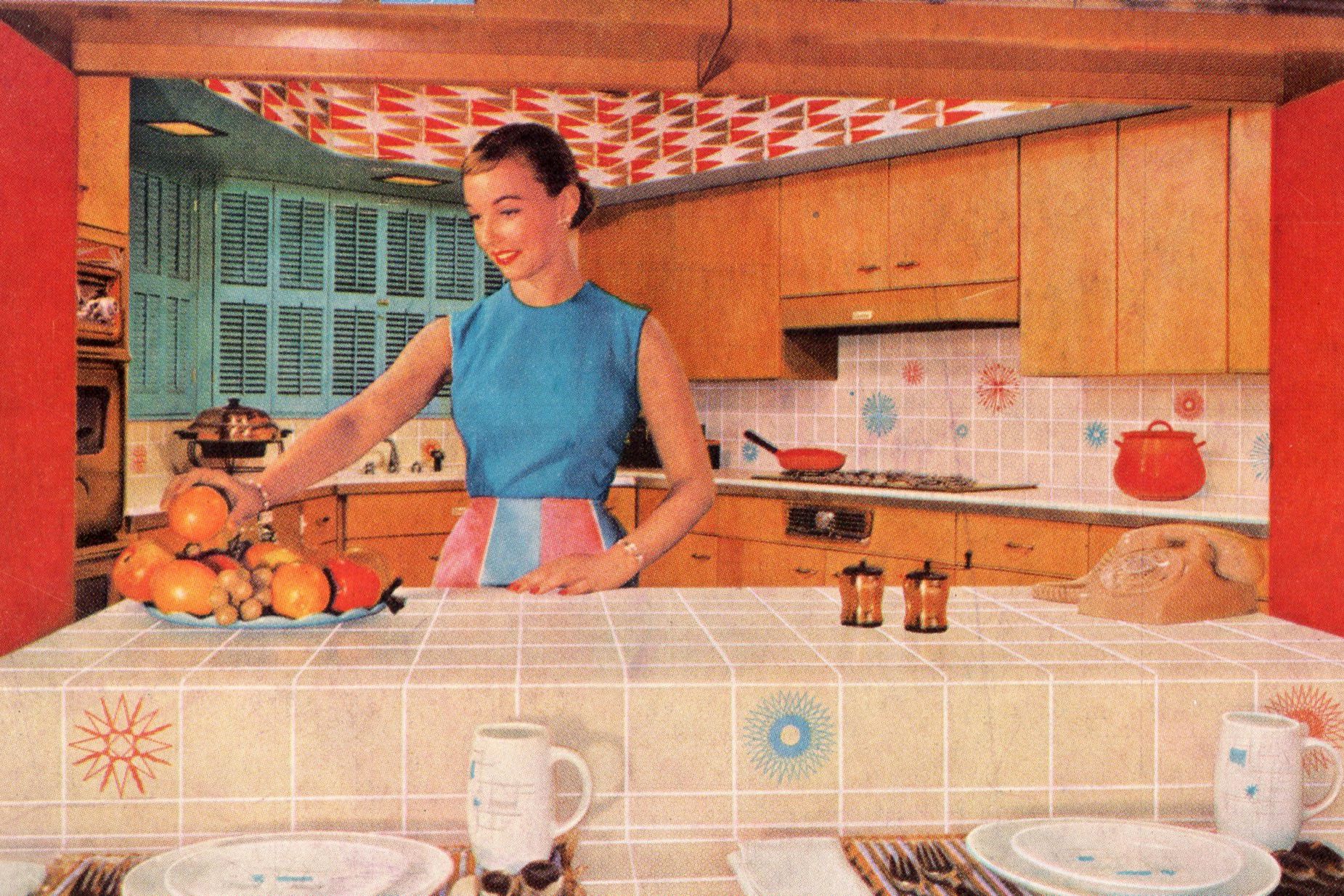
Cost of Bacon: $0.54
Inflation-Adjusted Cost: $5.99
1961
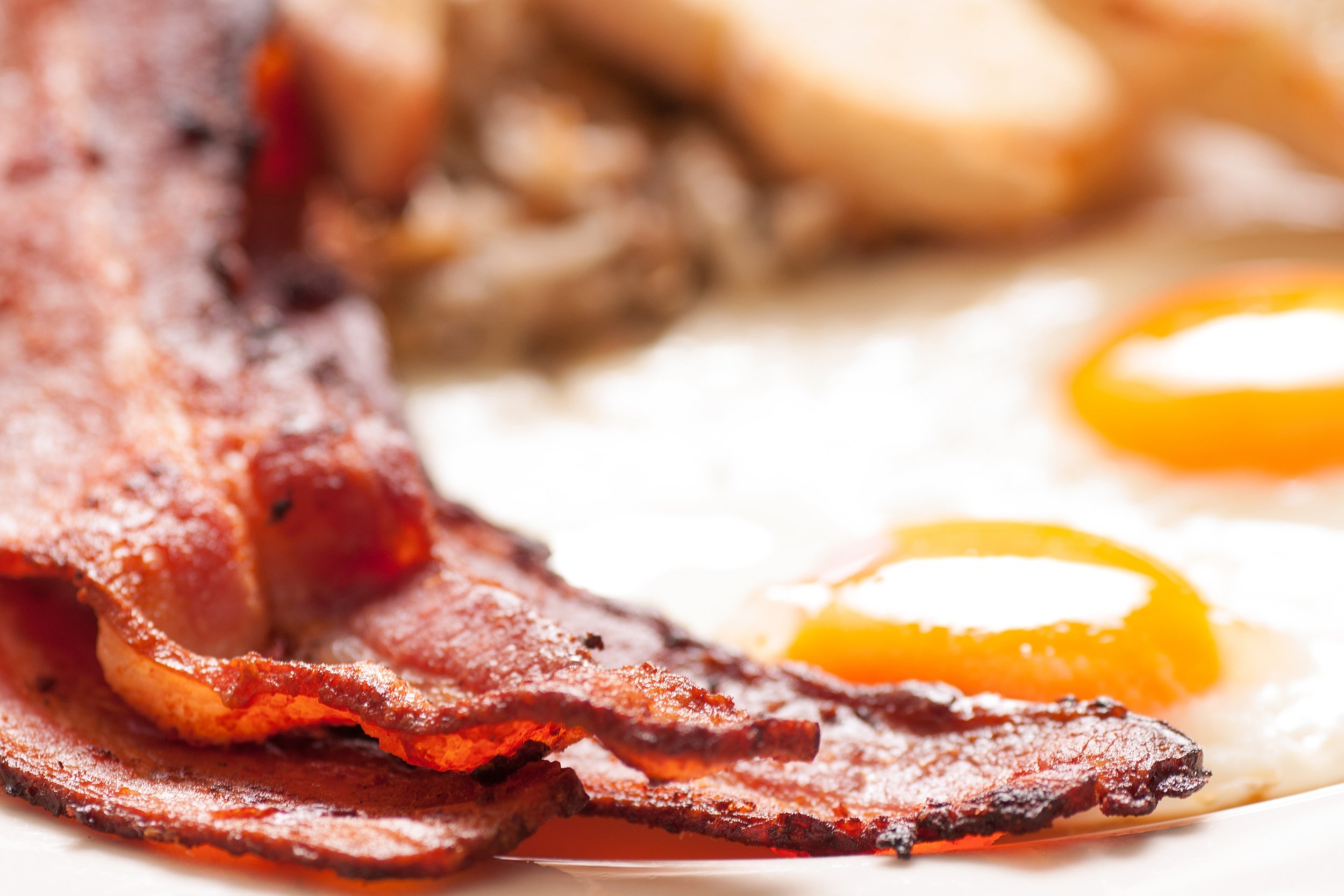
Cost of Bacon: $0.59
Inflation-Adjusted Cost: $6.43
1962
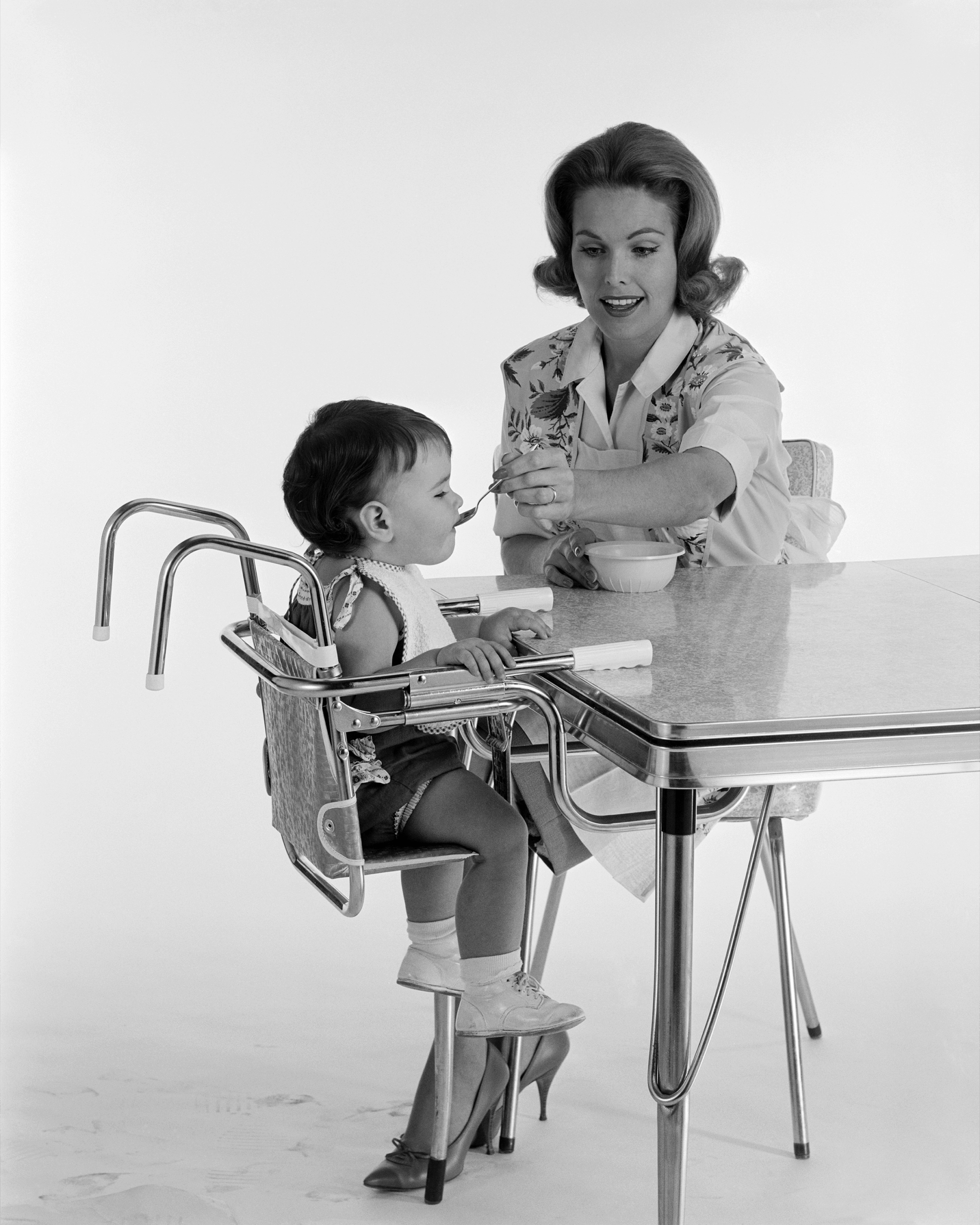
Cost of Bacon: $0.58
Inflation-Adjusted Cost: $6.28
1963
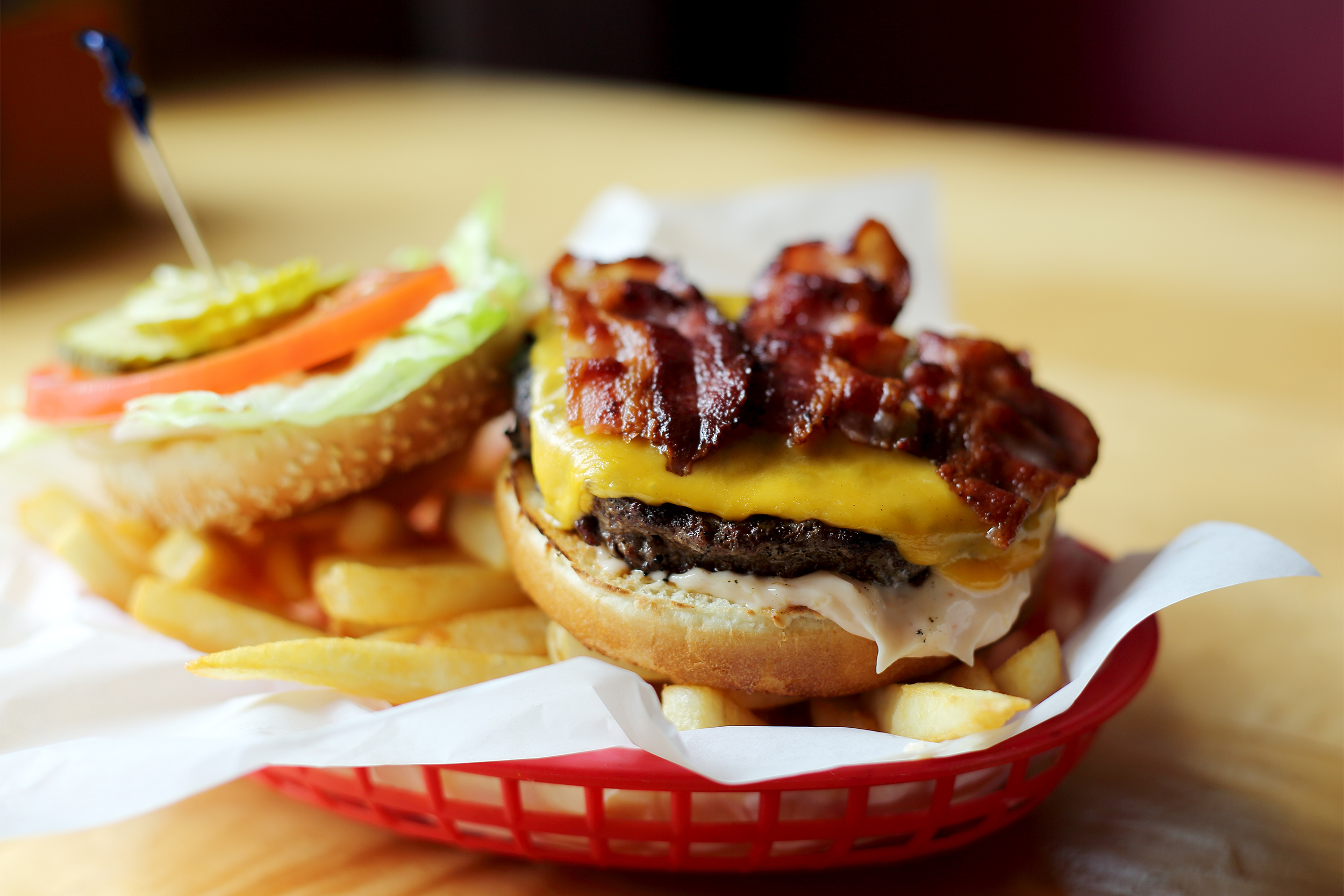
Cost of Bacon: $0.57
Inflation-Adjusted Cost: $6.09
The cost of bacon remained low during the early 1960s, which likely accounts for the rising trend of recipes calling for bacon and big brands suggested bacon-fueled recipes, such as Aunt Jemima’s bacon strip pancakes. This was also the year Dale Mulder, president of A&W restaurants, is credited with inventing the bacon cheeseburger, paving the way for great things to come. Thanks, Dale.
1964
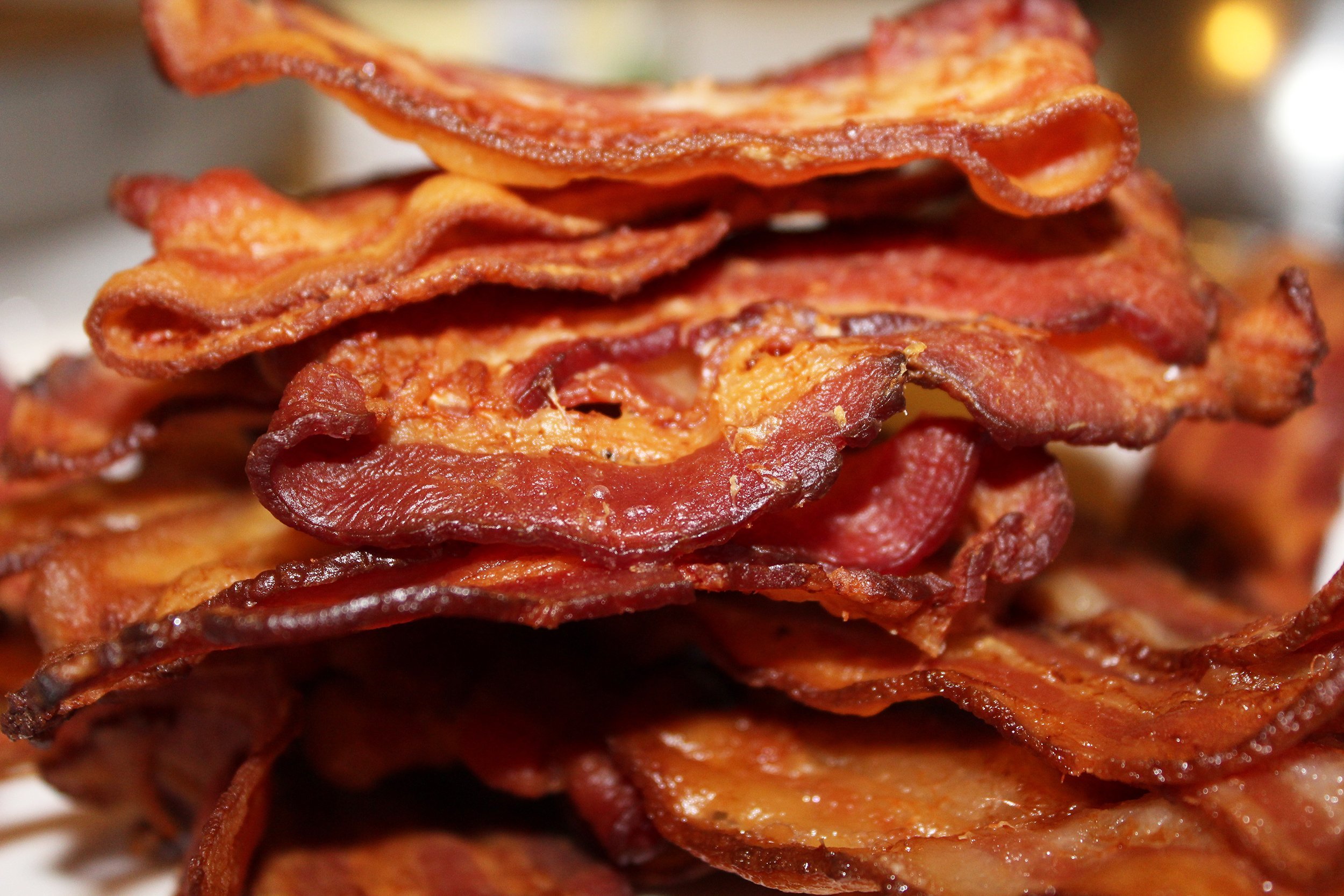
Cost of Bacon: $0.57
Inflation-Adjusted Cost: $5.99
1965
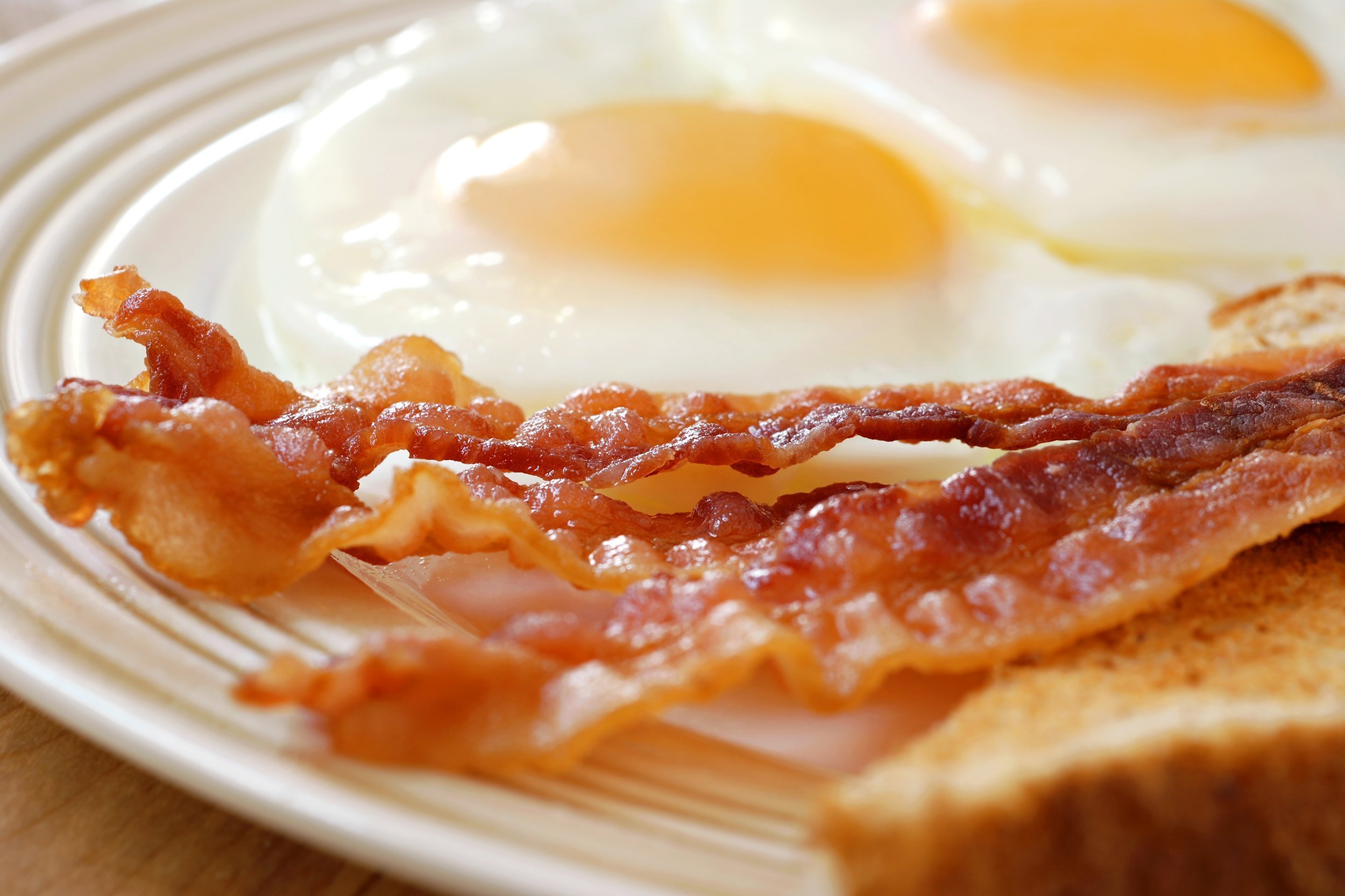
Cost of Bacon: $0.69
Inflation-Adjusted Cost: $7.18
1966
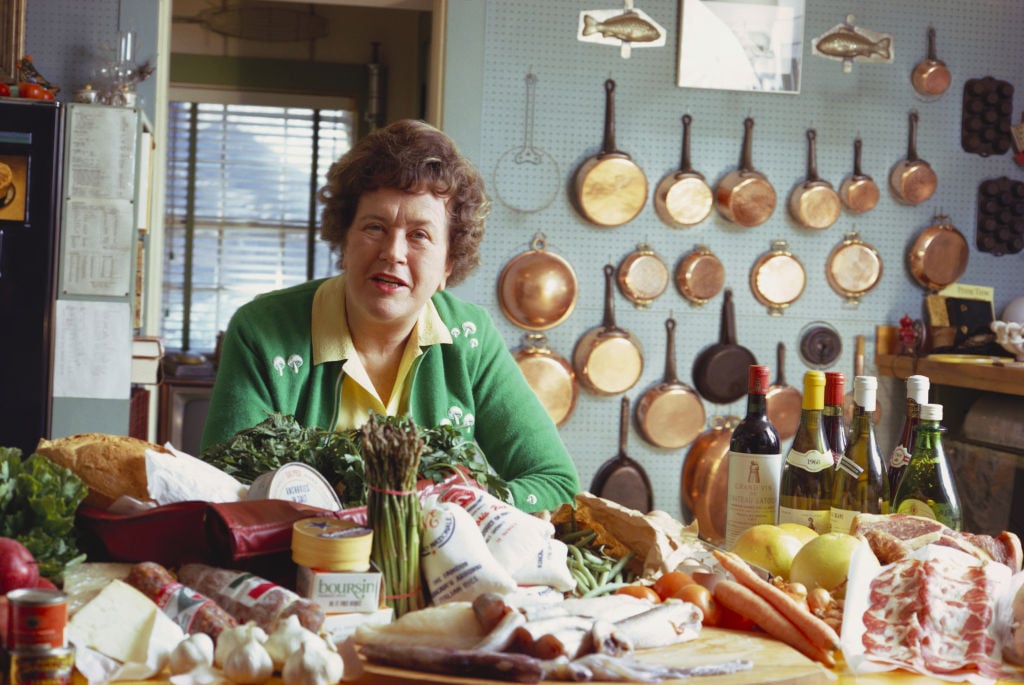
Cost of Bacon: $0.82
Inflation-Adjusted Cost: $8.38
Bacon prices steadily rose to a peak in the late 1960s before declining again. With so many people tuning into Julia Child’s “The French Chef” on TV at the time, perhaps demand and prices went up as everyone tried to imitate her recipes that used bacon and plenty of butter.
1967
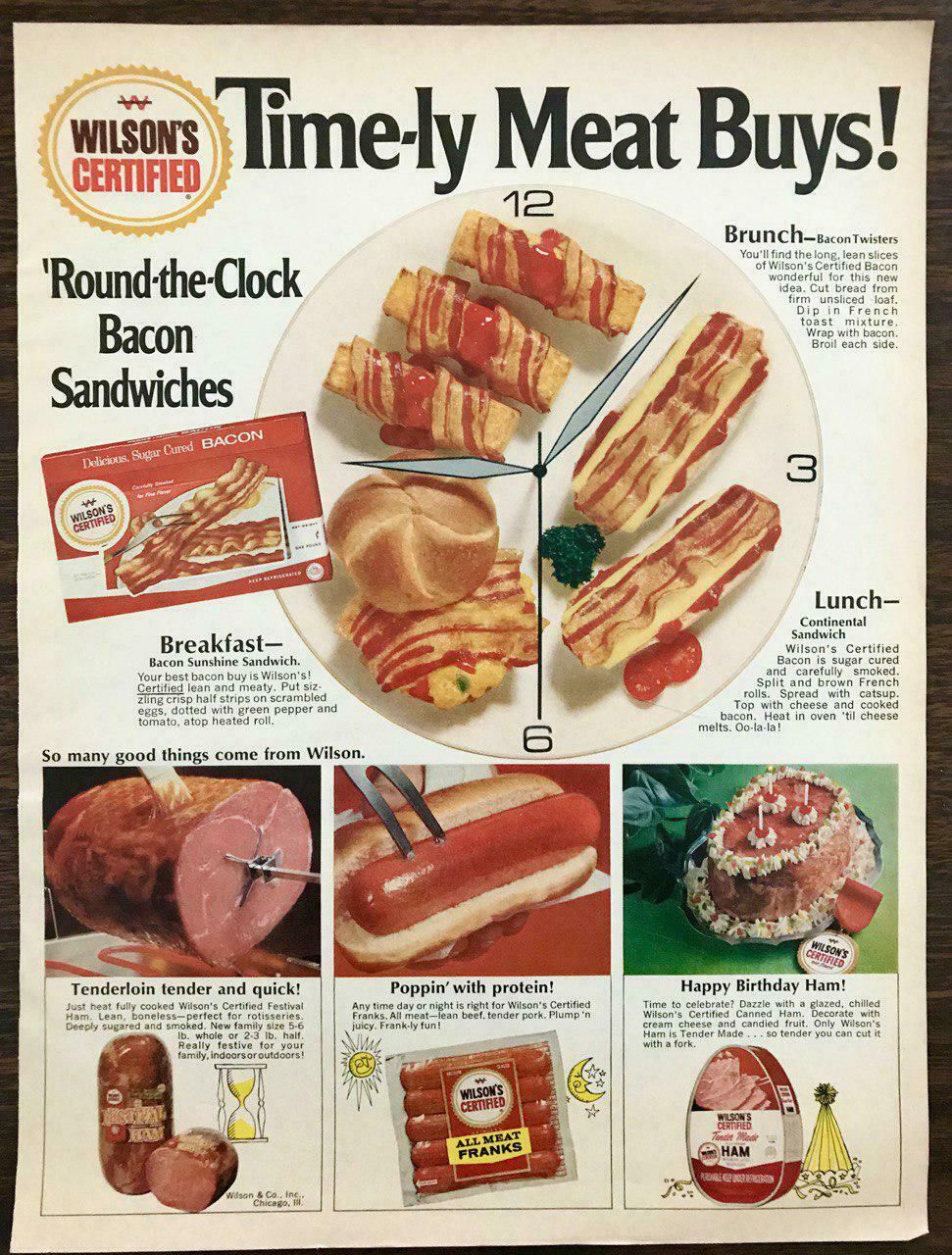
Cost of Bacon: $0.72
Inflation-Adjusted Cost: $7.11
1968

Cost of Bacon: $0.70
Inflation-Adjusted Cost: $6.67
1969
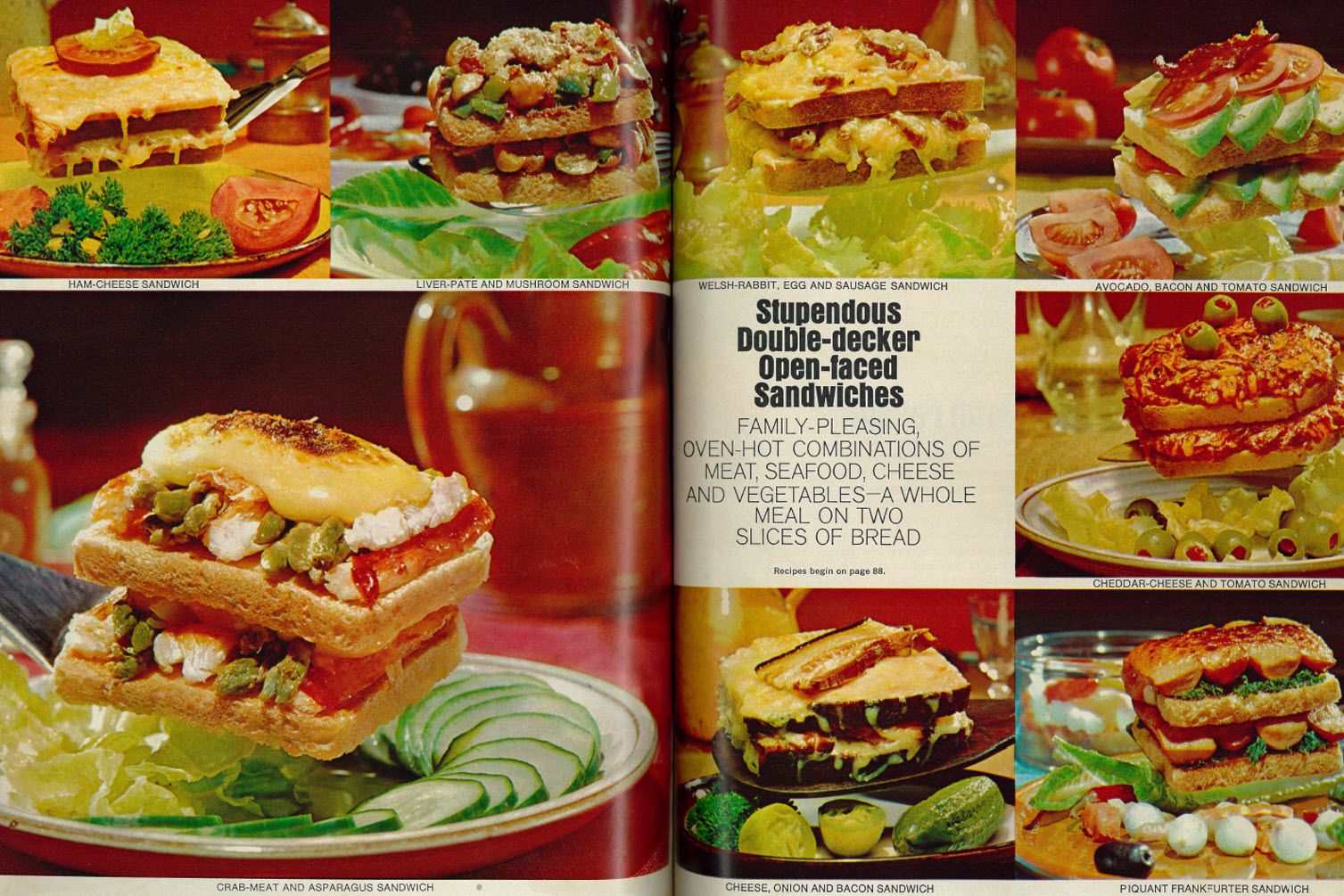
Cost of Bacon: $0.76
Inflation-Adjusted Cost: $6.93
1970

Cost of Bacon: $0.82
Inflation-Adjusted Cost: $7.05
1971
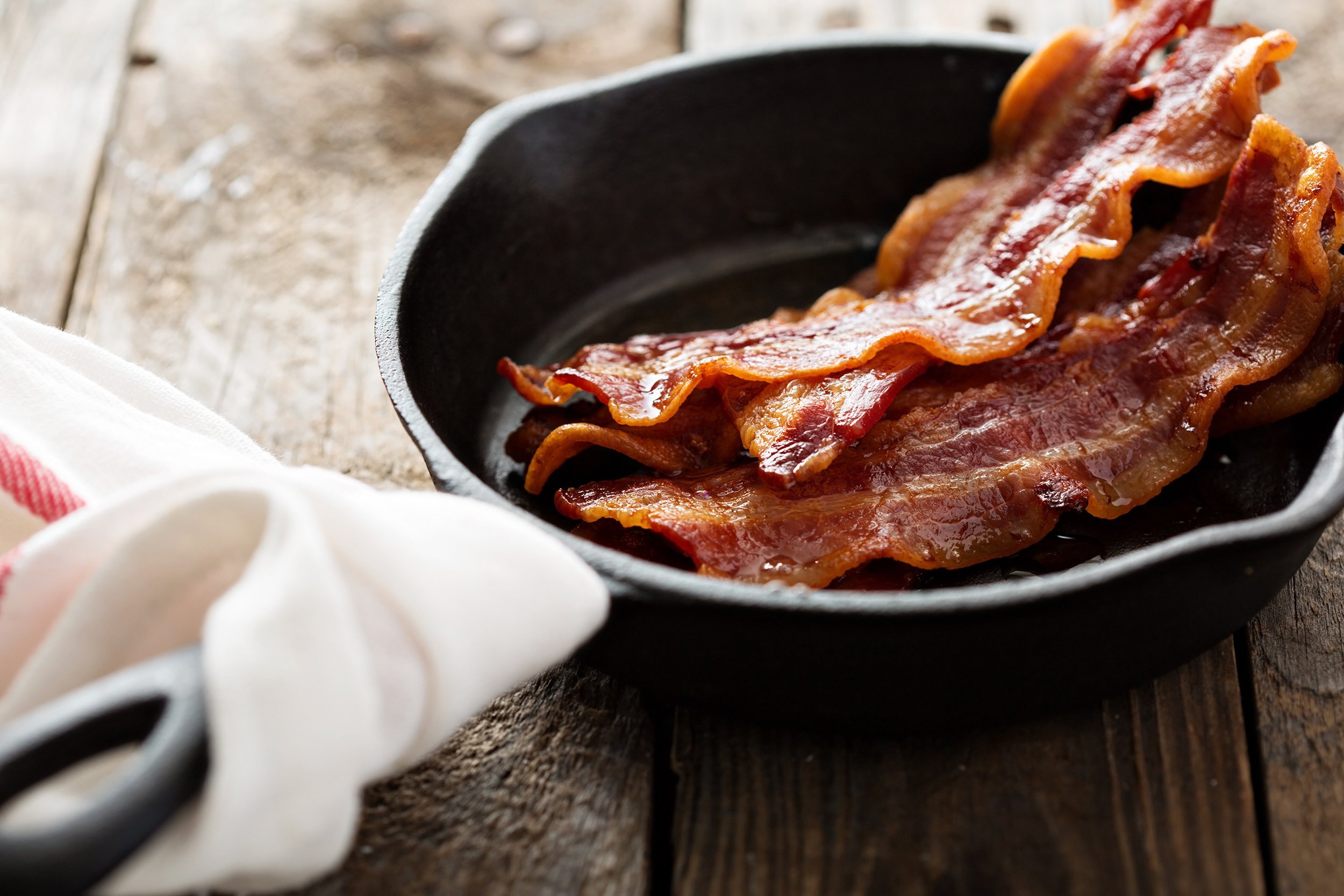
Cost of Bacon: $0.69
Inflation-Adjusted Cost: $5.63
1972
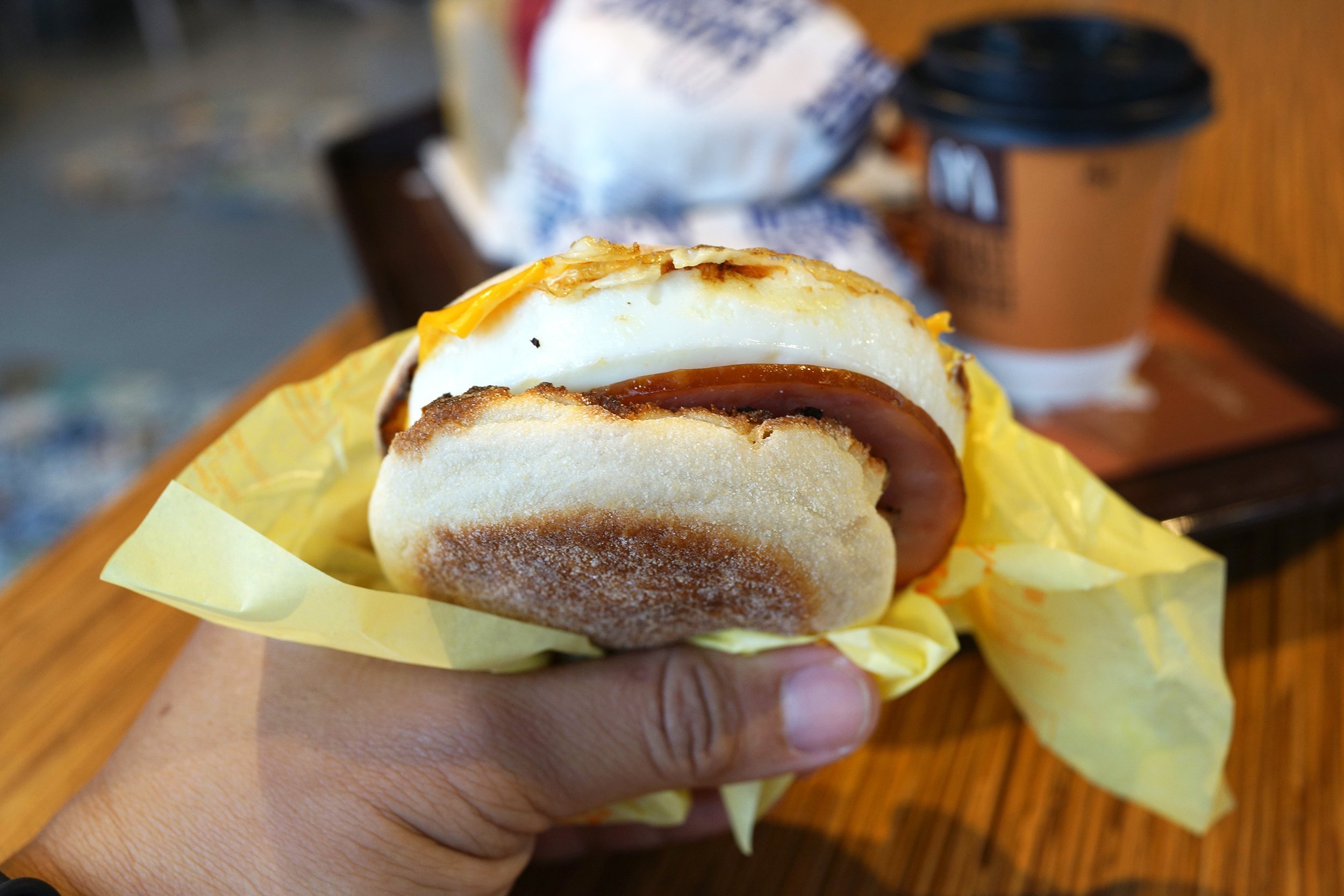
Cost of Bacon: $0.84
Inflation-Adjusted Cost: $6.64
This was the last year that a pound of sliced bacon was less than a dollar — not adjusting for inflation. It’s also the year that the McDonald’s unveiled the Egg McMuffin, which has a bacon variation. It likely led to an increase in bacon popularity, demand, and price in the years to come.
1973
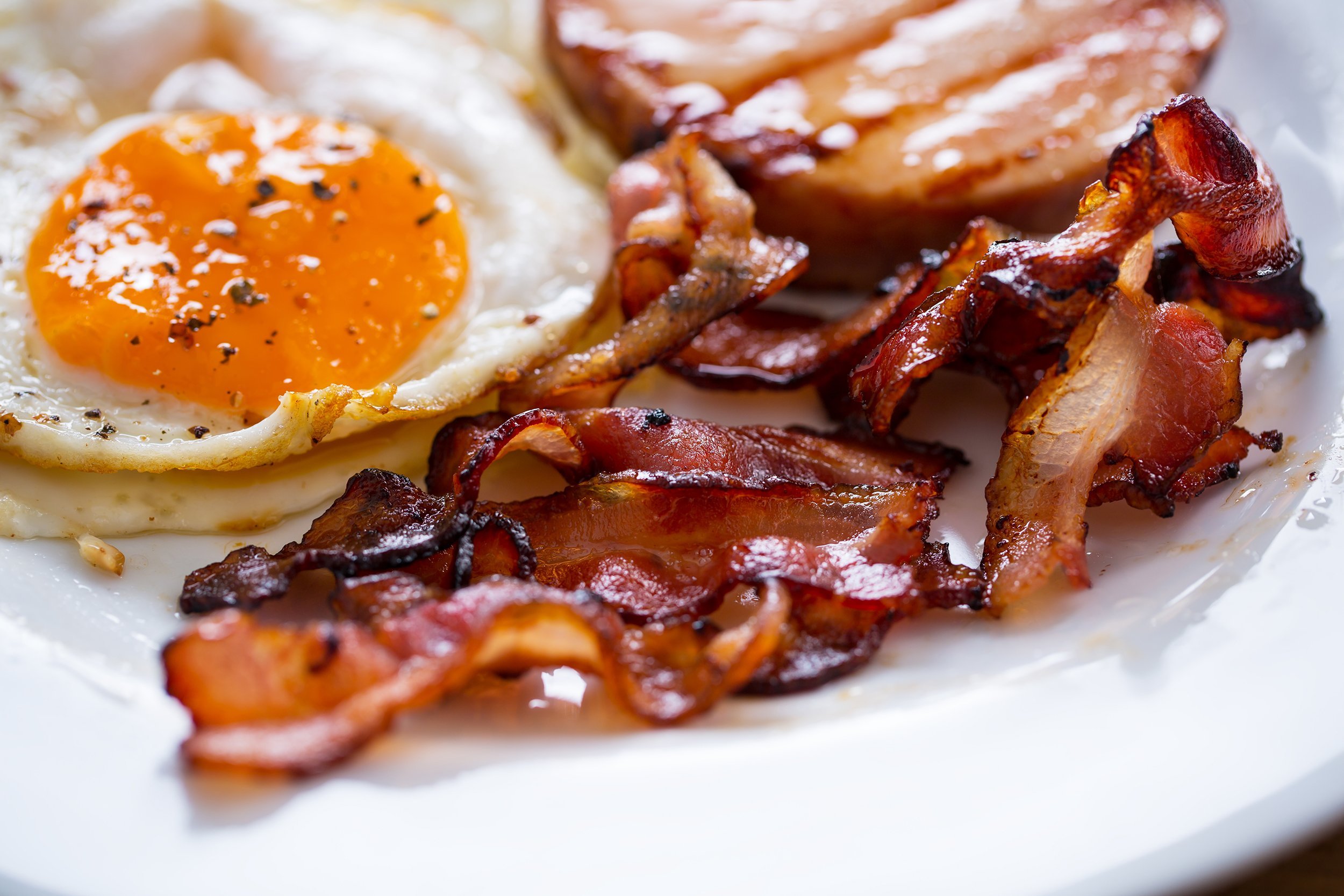
Cost of Bacon: $1.16
Inflation-Adjusted Cost: $8.84
1974
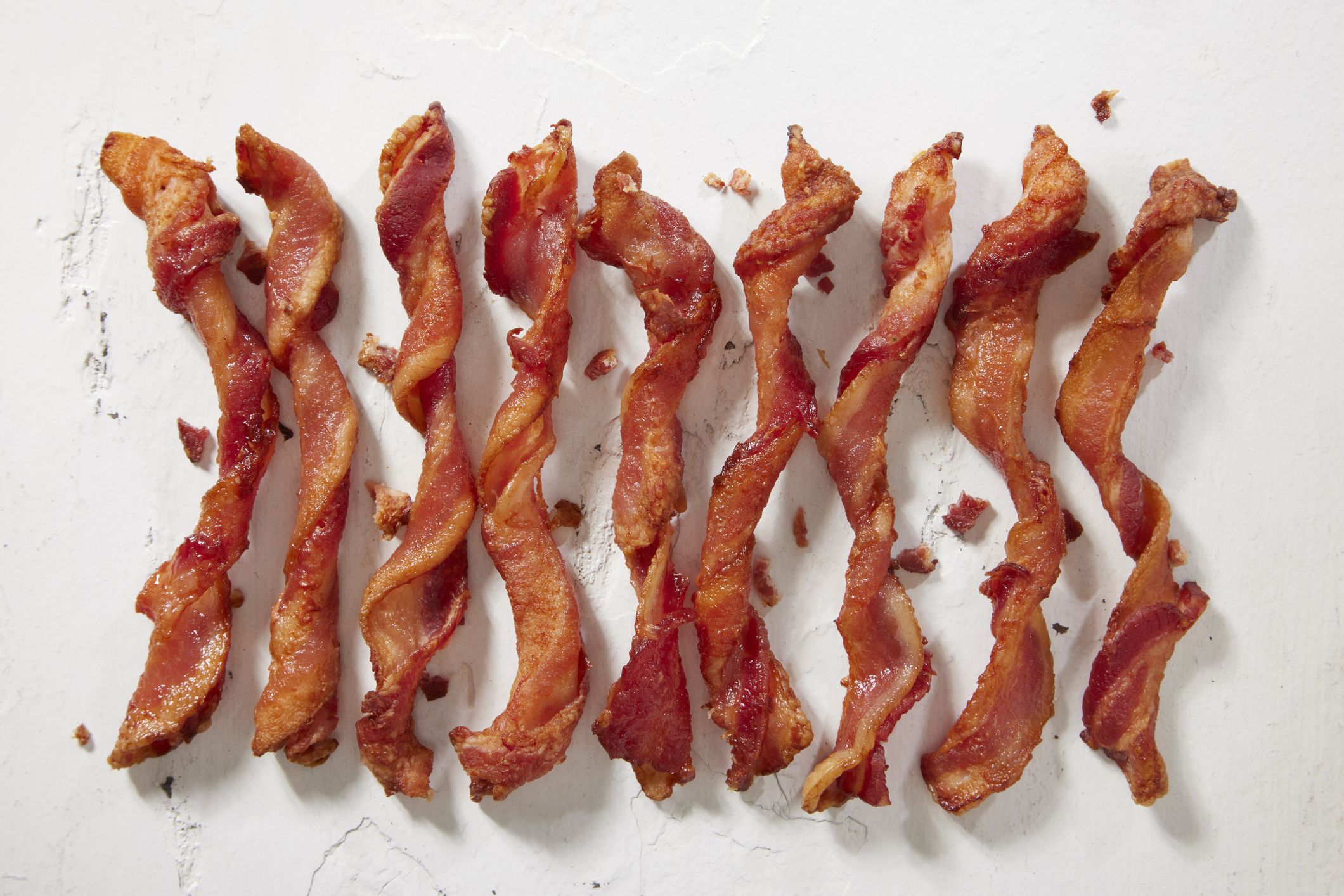
Cost of Bacon: $1.15
Inflation-Adjusted Cost: $8.02
1975

Cost of Bacon: $1.55
Inflation-Adjusted Cost: $9.66
Bacon prices hit a record high in 1975. Inflation during the mid-1970s is likely to blame for the price spike, which also happened for oil and other goods. The price was high even by today’s standards. These were tough times for bacon lovers.
1976
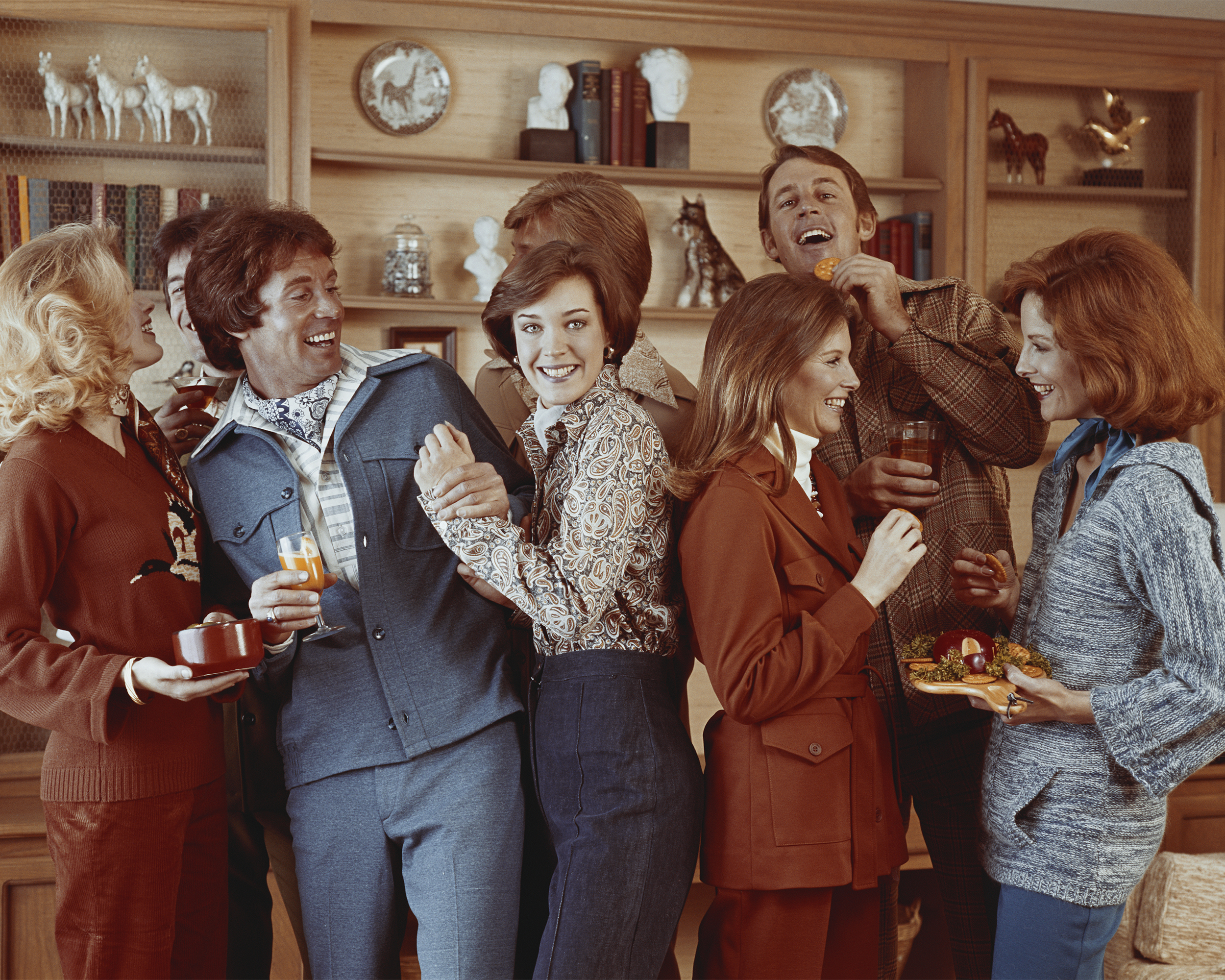
Cost of Bacon: $1.51
Inflation-Adjusted Cost: $8.82
1977
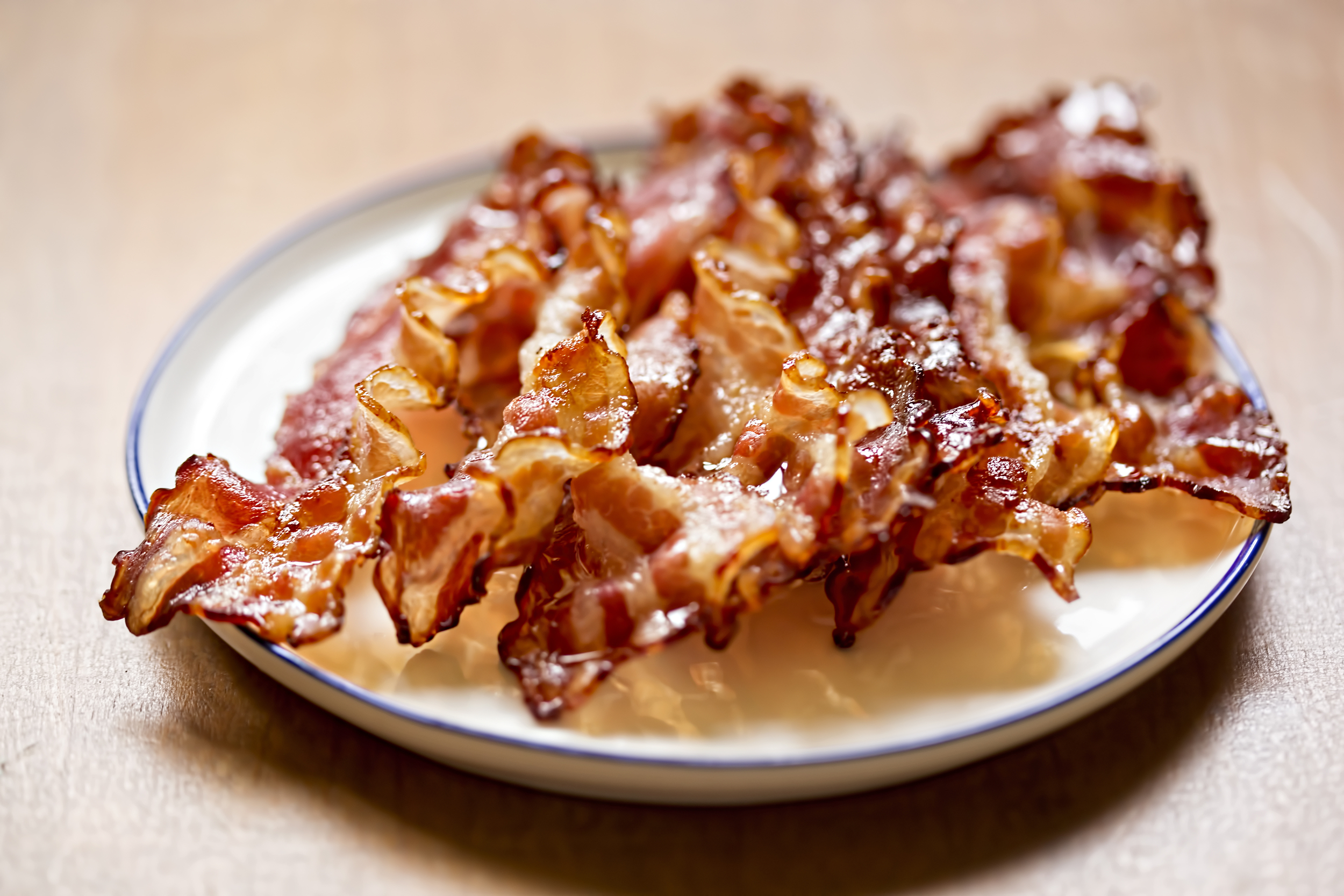
Cost of Bacon: $1.38
Inflation-Adjusted Cost: $7.66
1978
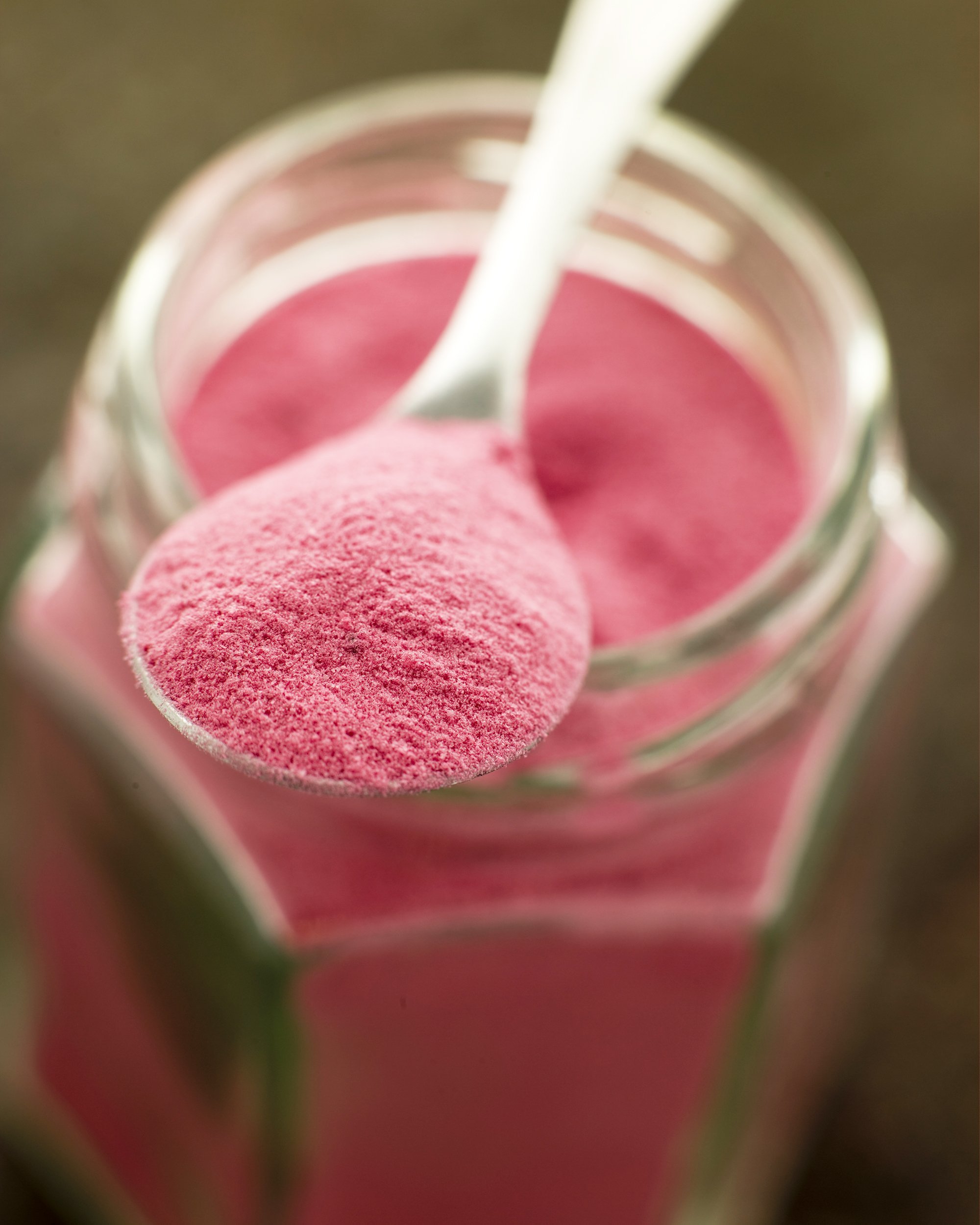
Cost of Bacon: $1.59
Inflation-Adjusted Cost: $8.26
Health concerns over the effects of sodium nitrite — the salt used to preserve, flavor, and color meats such as bacon — rose after studies suggested it could be carcinogenic. The news surely had an impact on bacon sales, but prices wouldn’t dip for another couple of years.
1979
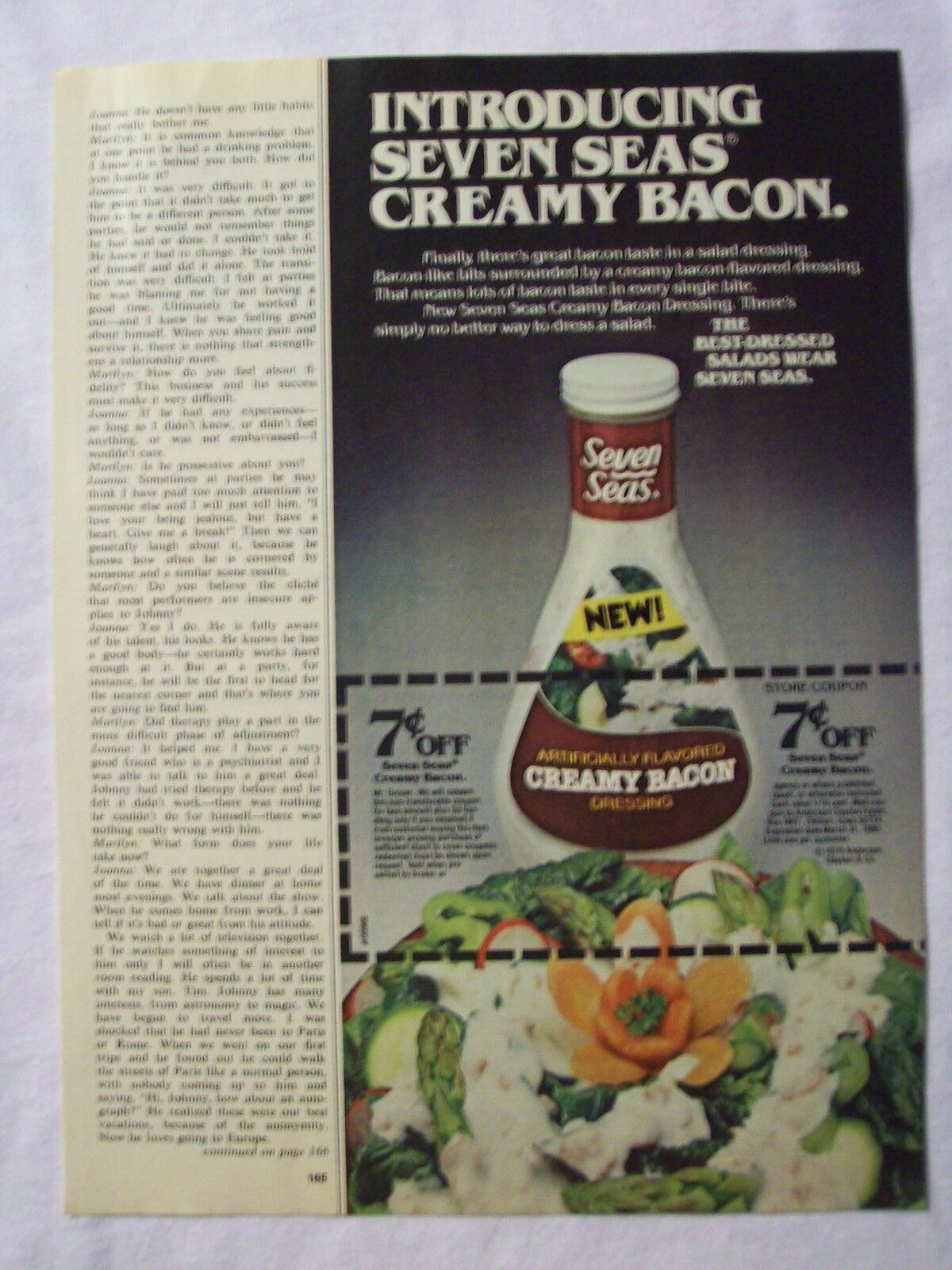
Cost of Bacon: $1.48
Inflation-Adjusted Cost: $7.04
1980

Cost of Bacon: $1.43
Inflation-Adjusted Cost: $5.97
As we entered the 1980s, slimming down with health-conscious diet fads, Tab, and Thighmasters was all the rage, which meant that indulgent treats such as bacon were often shunned or substituted with lower fat options (remember Sizzlean?). As demand declined, so did the price of bacon. Good news for those who skipped the diets and stuck with bacon, though.
1981
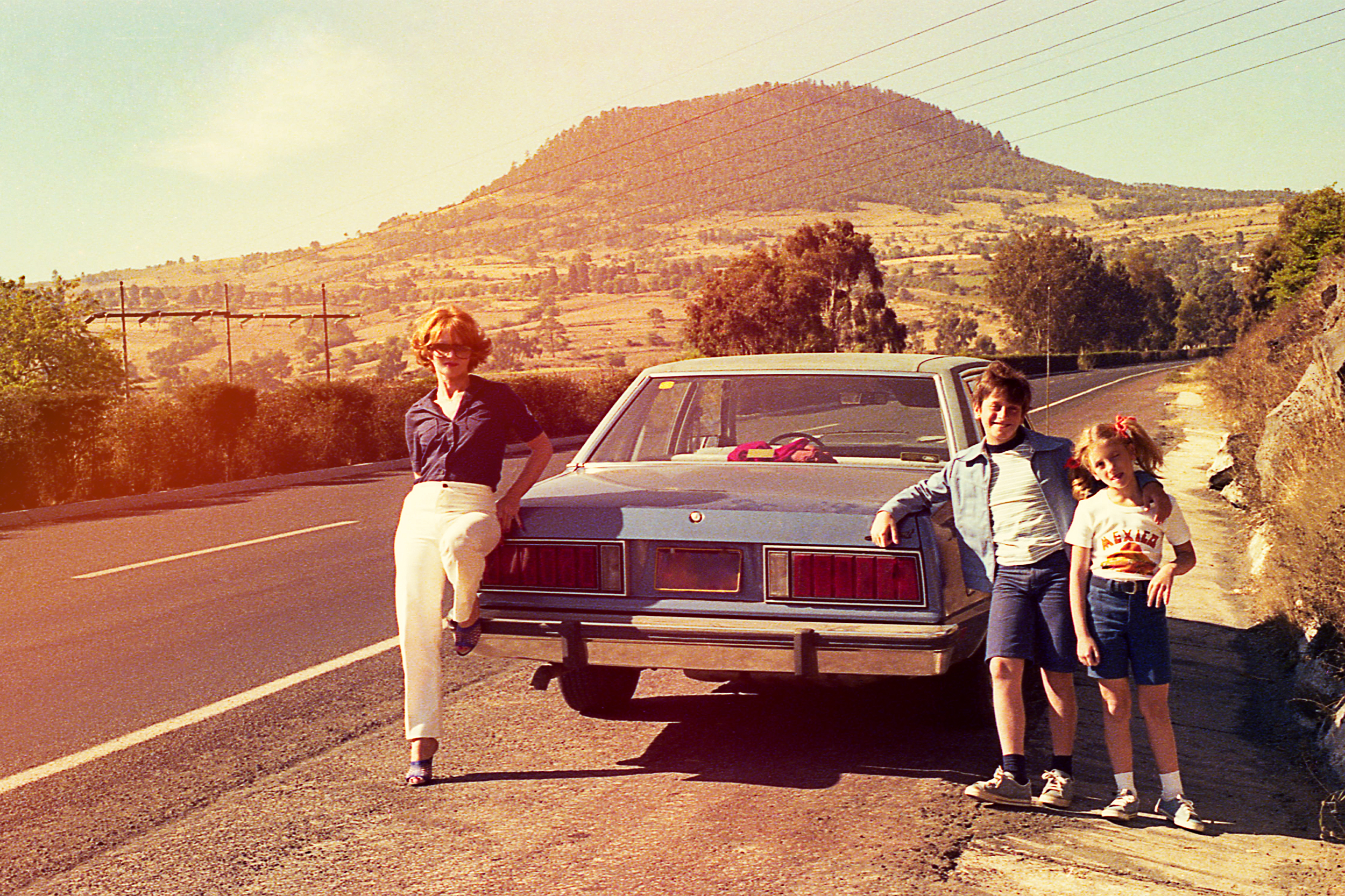
Cost of Bacon: $1.62
Inflation-Adjusted Cost: $6.05
1982

Cost of Bacon: $1.99
Inflation-Adjusted Cost: $6.85
1983
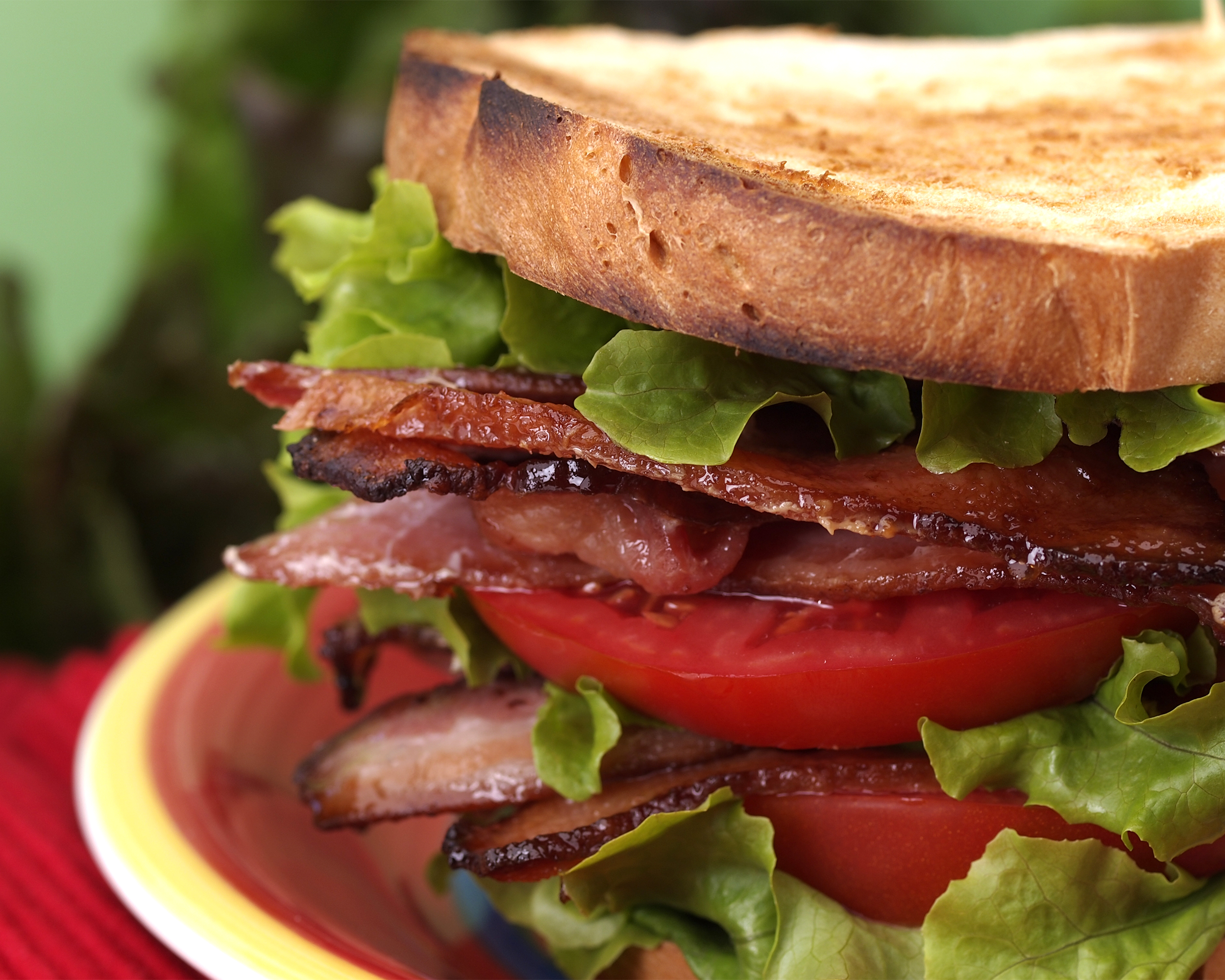
Cost of Bacon: $1.95
Inflation-Adjusted Cost: $6.48
1984
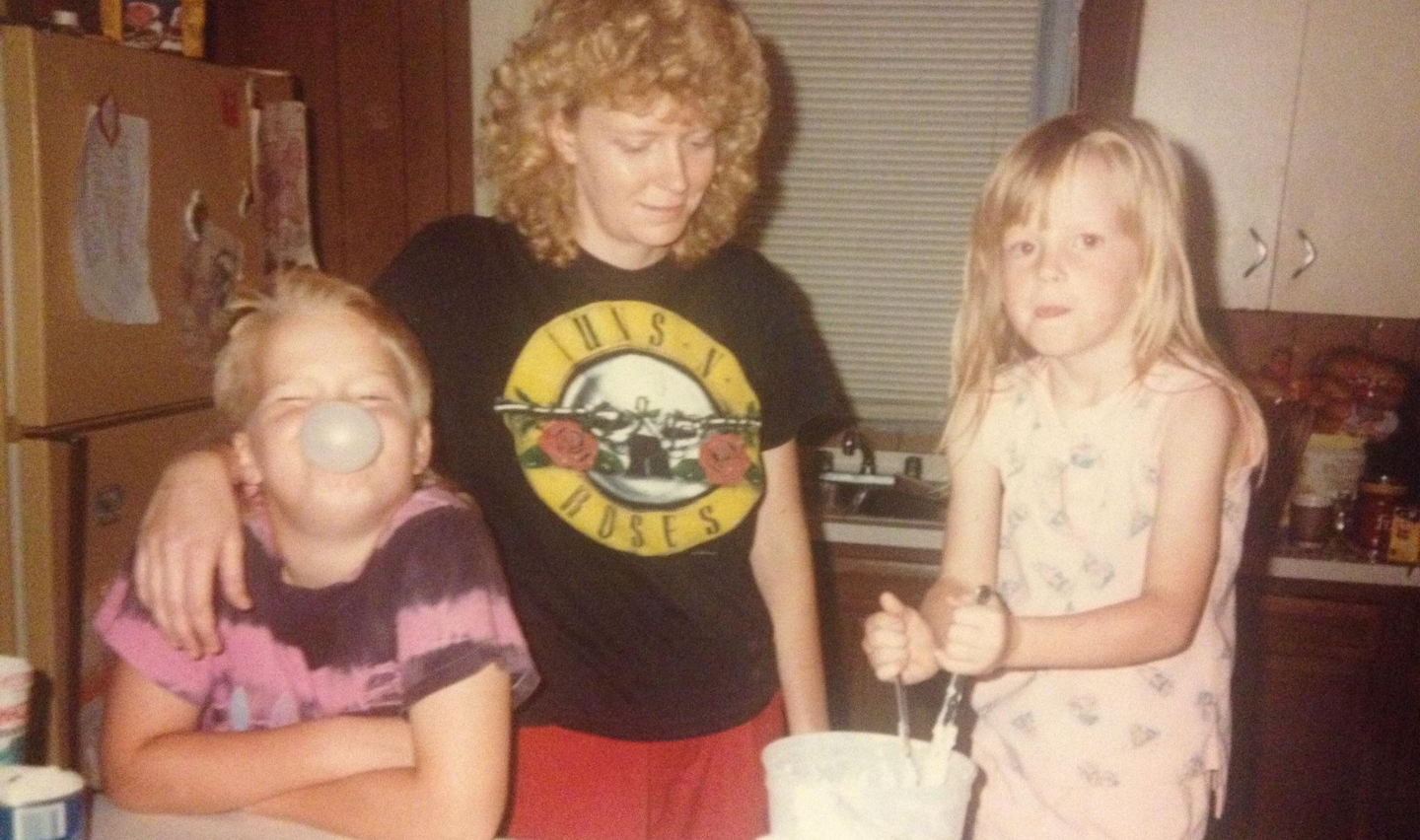
Cost of Bacon: $1.91
Inflation-Adjusted Cost: $6.09
1985
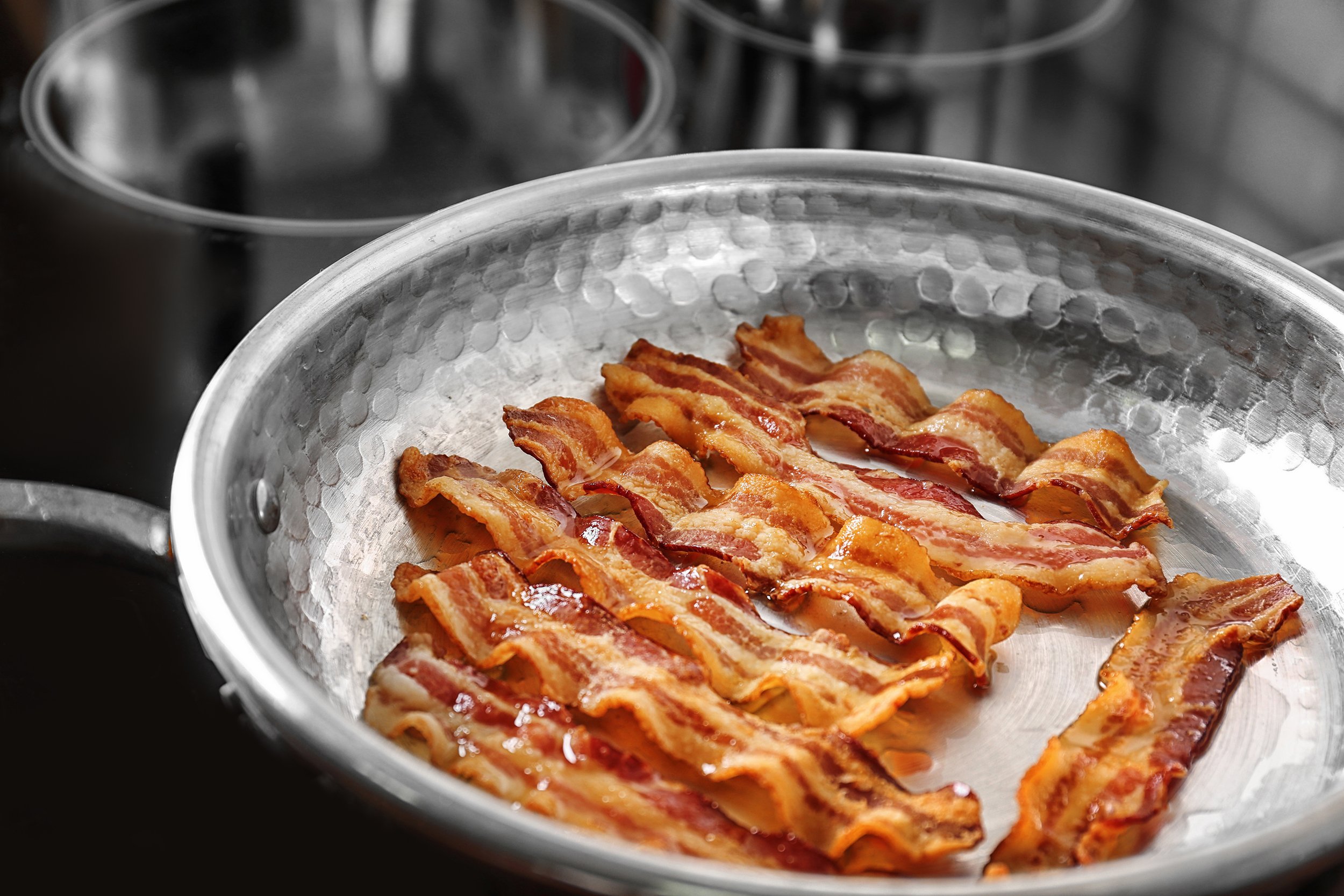
Cost of Bacon: $1.98
Inflation-Adjusted Cost: $6.10
1986
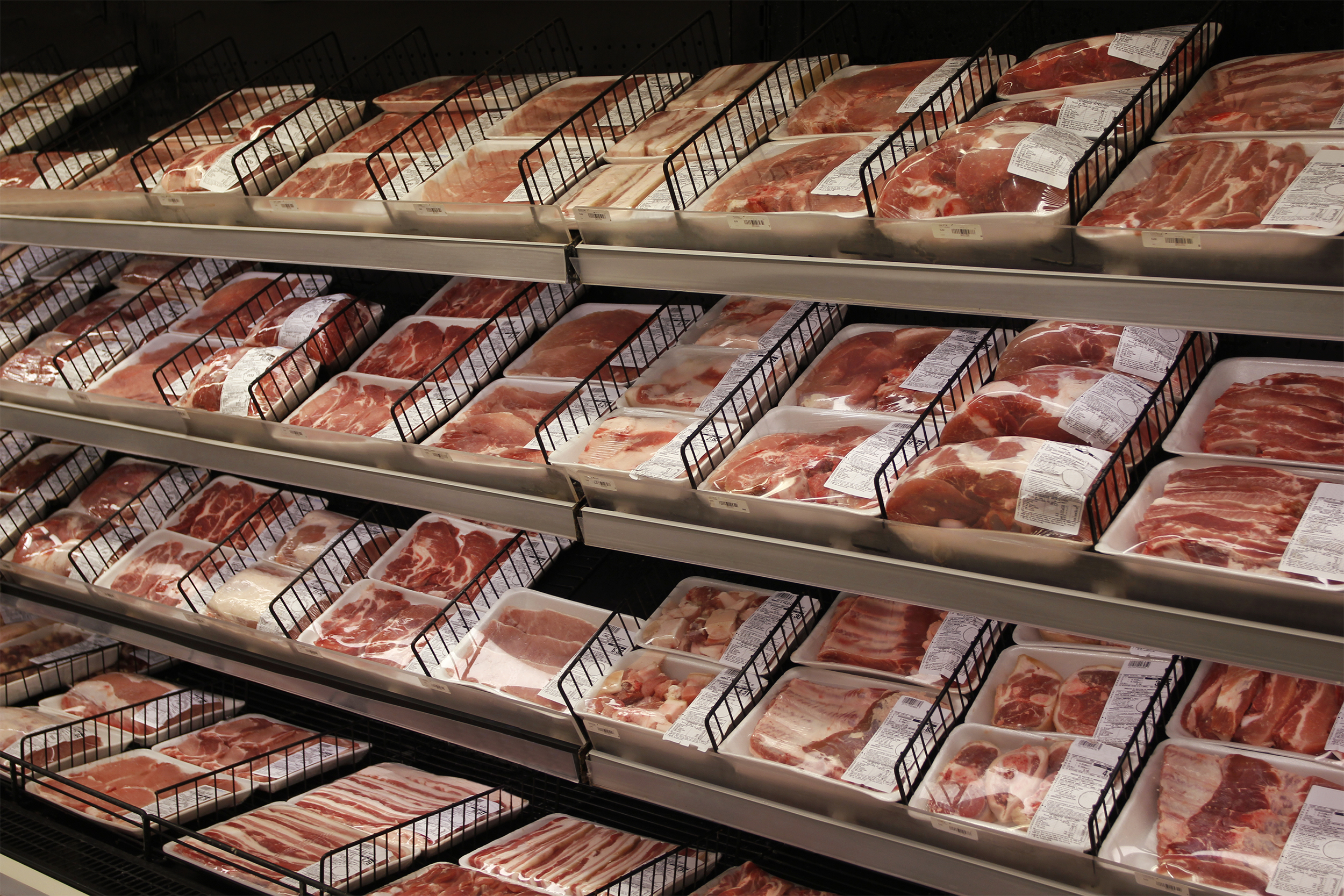
Cost of Bacon: $2.12
Inflation-Adjusted Cost: $6.28
The mid-1980s saw bacon prices finally crest above the $2 mark, which likely accounted for some sticker shock at the supermarket for bacon fans. But did that stop us from buying it? No way.
1987
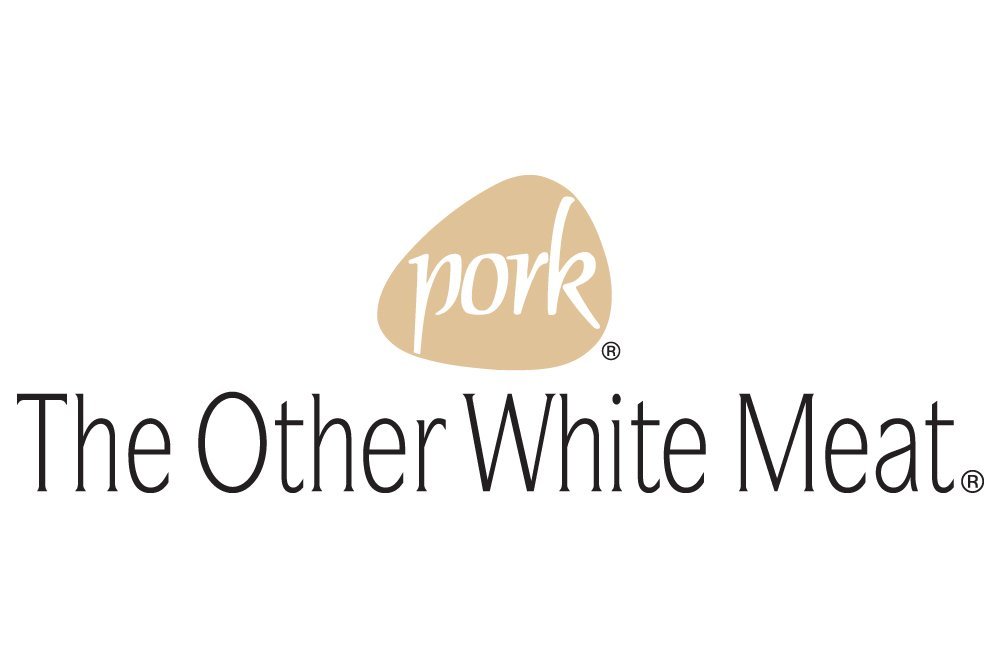
Cost of Bacon: $2.23
Inflation-Adjusted Cost: $6.51
The healthy, low-fat trends of the ’80s were especially hard on the pork industry, so the Pork Marketing Board launched “The Other White Meat” ad campaign to encourage people to eat leaner cuts of meat. The campaign worked, but bacon — still considered too fatty — suffered. Prices dropped dramatically. Meatpackers were even encouraged to sell stockpiled frozen pork bellies as food aid to impoverished countries.
1988
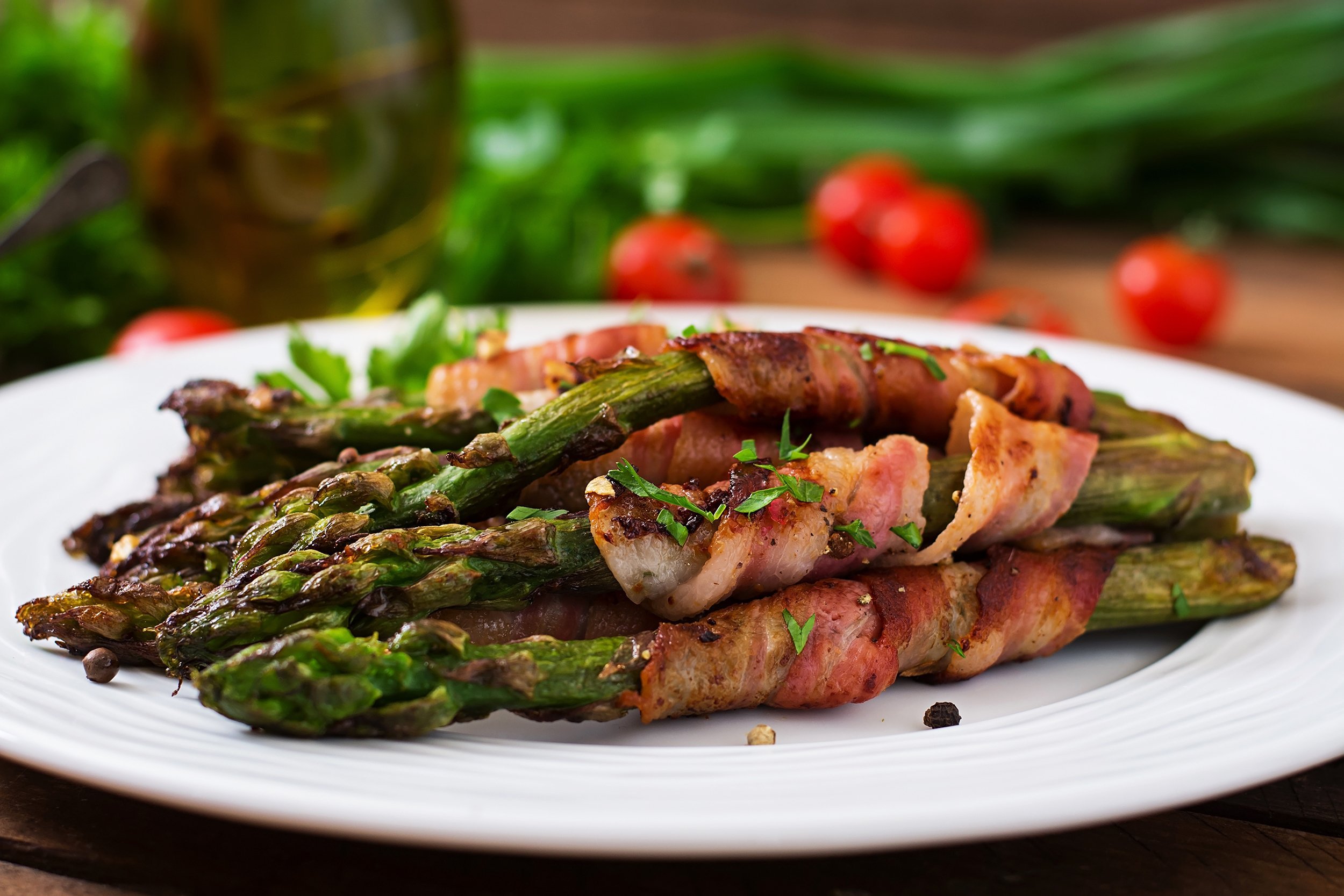
Cost of Bacon: $1.97
Inflation-Adjusted Cost: $5.53
1989
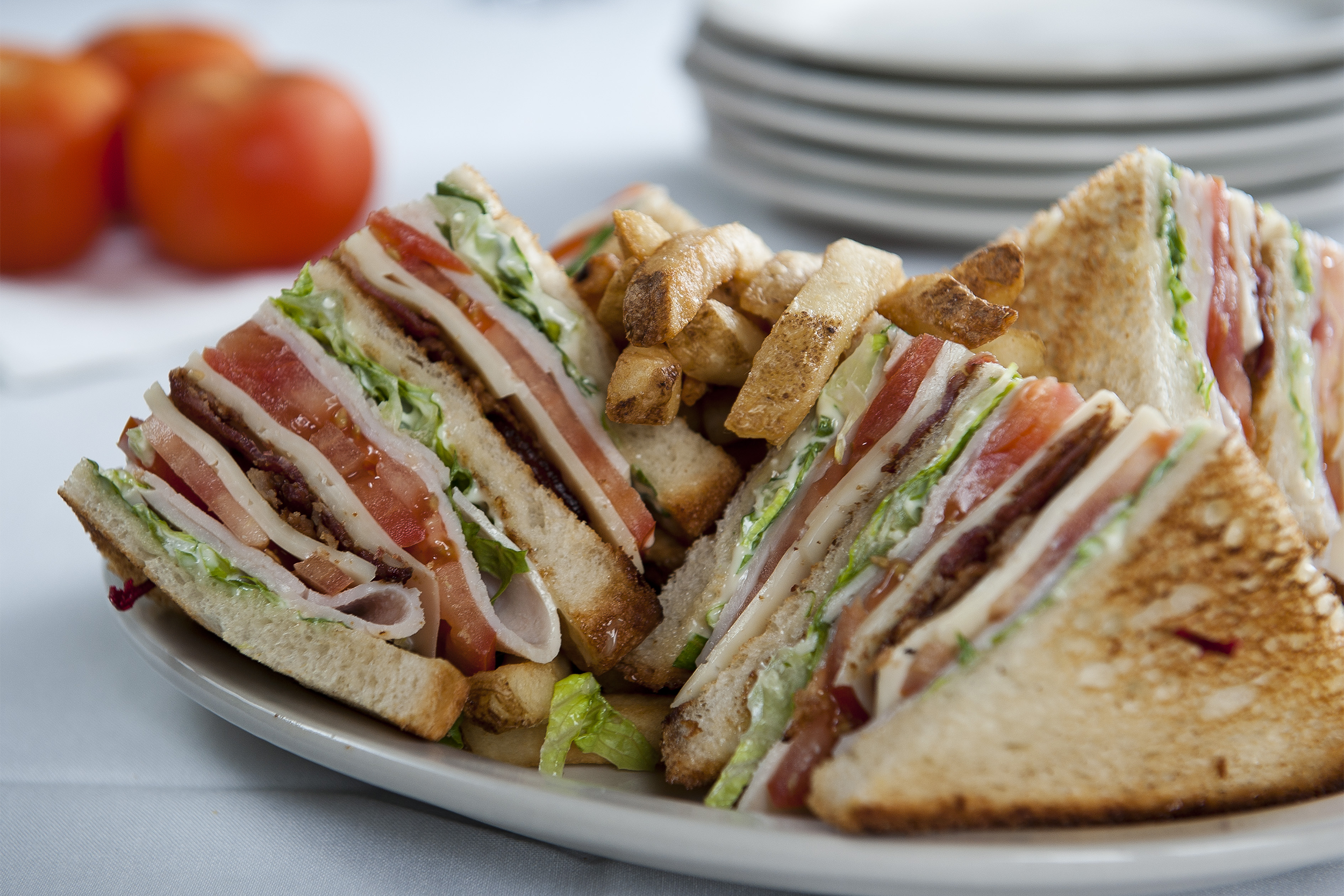
Cost of Bacon: $1.87
Inflation-Adjusted Cost: $5.02
The price of bacon hit a record low in 1989 — good news for eaters, bad news for the industry. Pork producers urged the Pork Board marketers to lend a hand, encouraging restaurants to incorporate more bacon into their menus.
1990
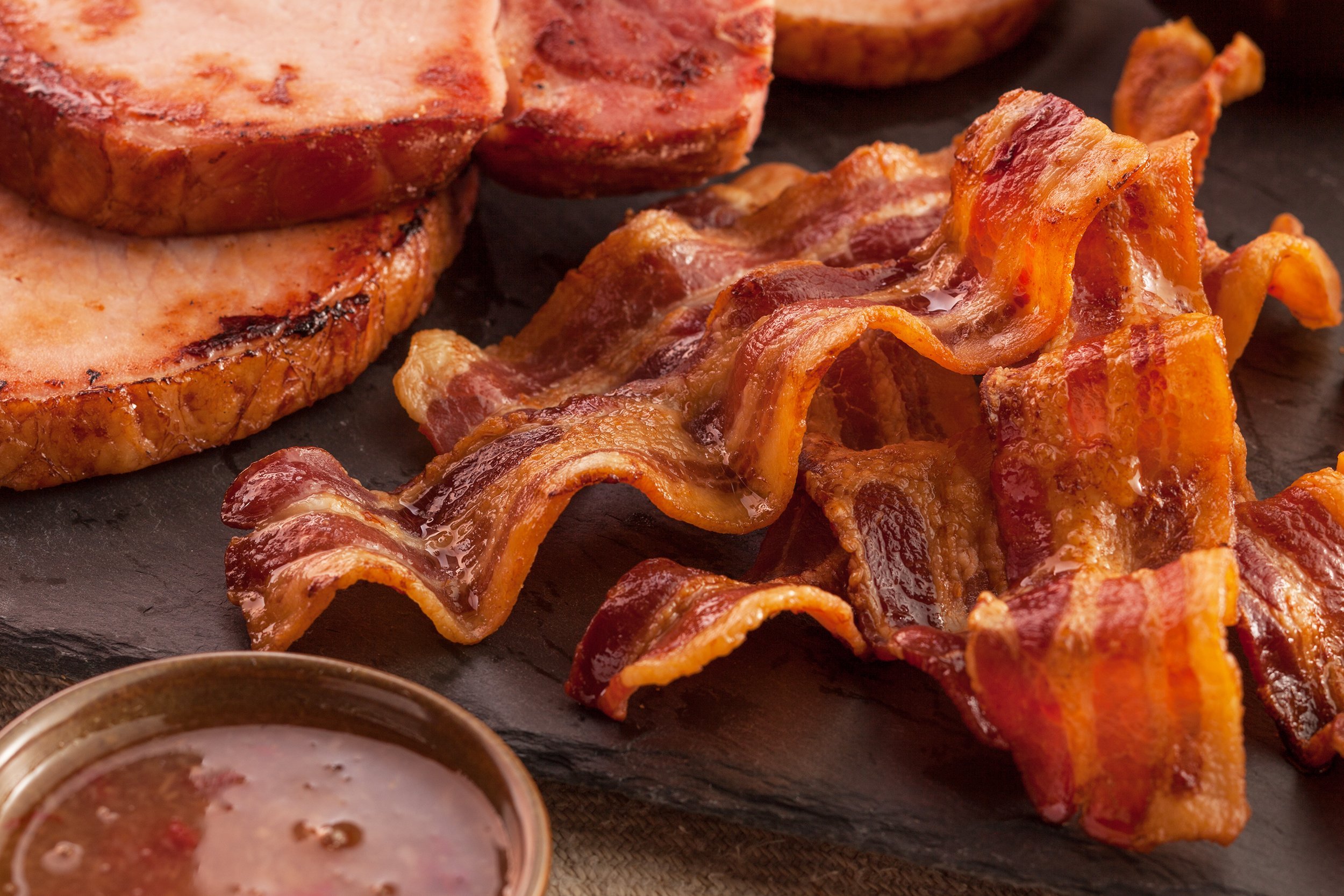
Cost of Bacon: $2.21
Inflation-Adjusted Cost: $5.63
1991
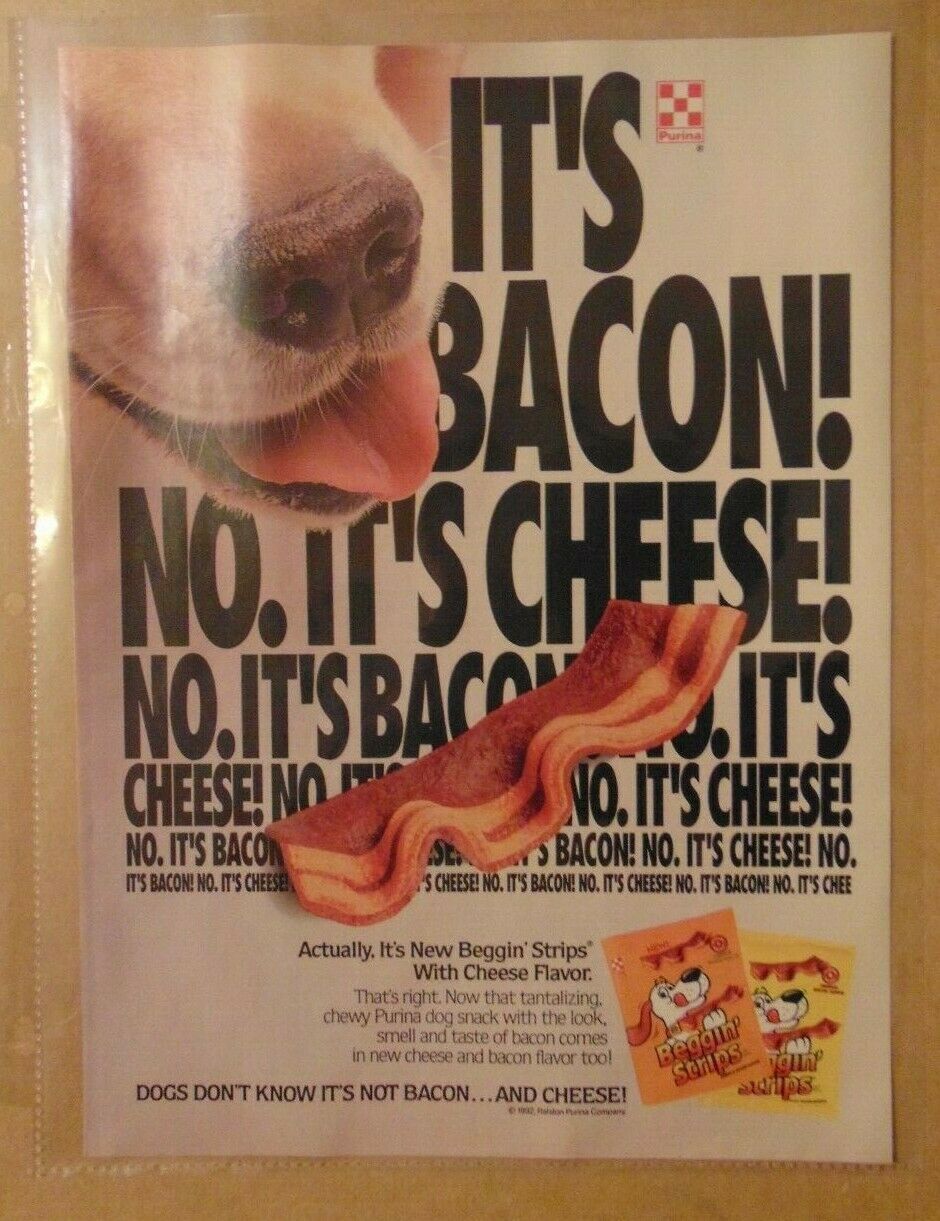
Cost of Bacon: $2.34
Inflation-Adjusted Cost: $5.65
1992

Cost of Bacon: $2.04
Inflation-Adjusted Cost: $4.80
Just as bacon prices dipped low again, fast food giant Hardee’s unveiled the Frisco Burger — a line of San Francisco-inspired sandwiches that all featured bacon. It’s considered the first time a fast food company put bacon on everything. Not surprisingly, it was a hit. Other fast food companies followed Hardee’s lead with more bacon options, but only for limited-time offers, as cooking bacon on-site required costly cleaning and ventilation.
1993
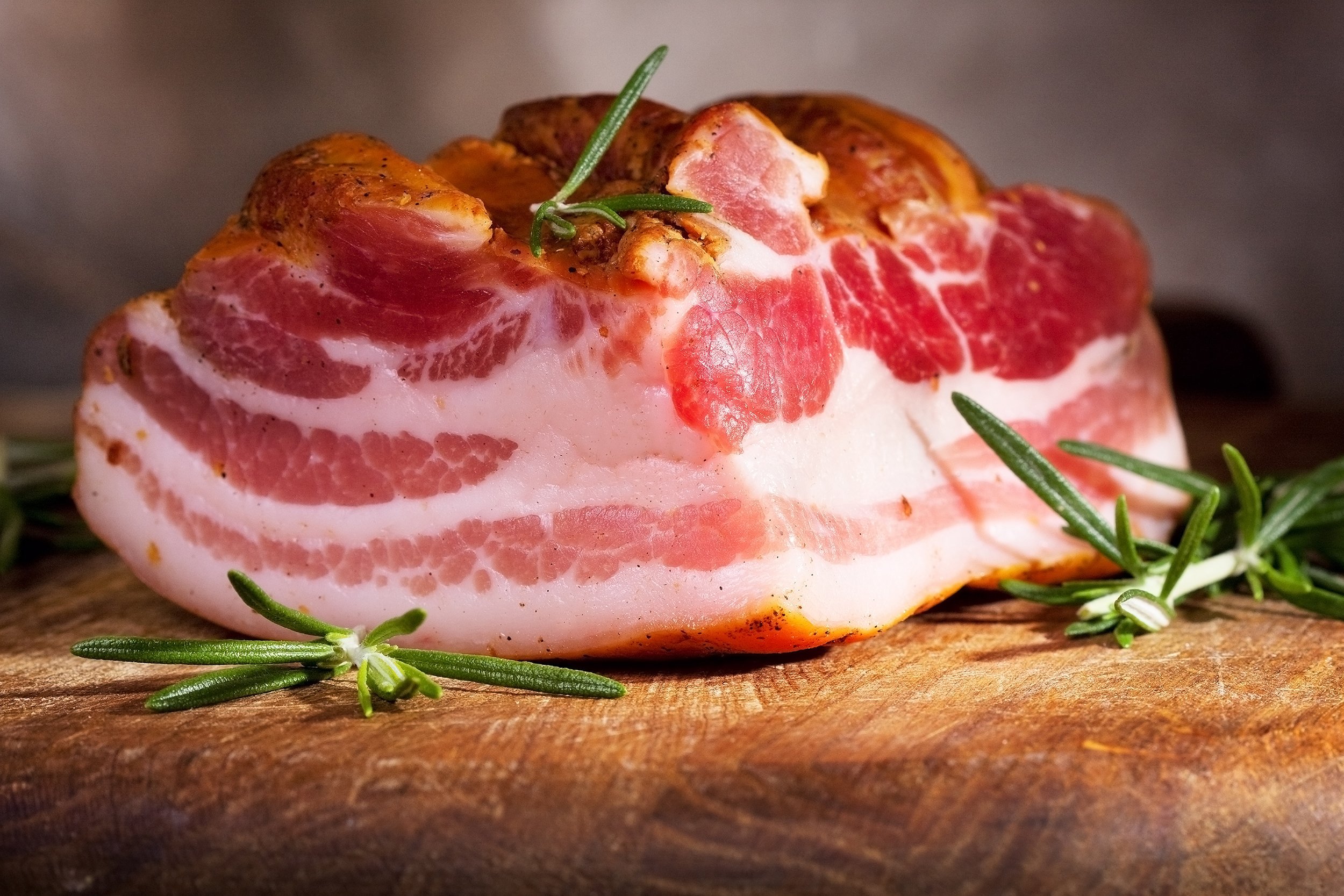
Cost of Bacon: $2.16
Inflation-Adjusted Cost: $4.92
1994
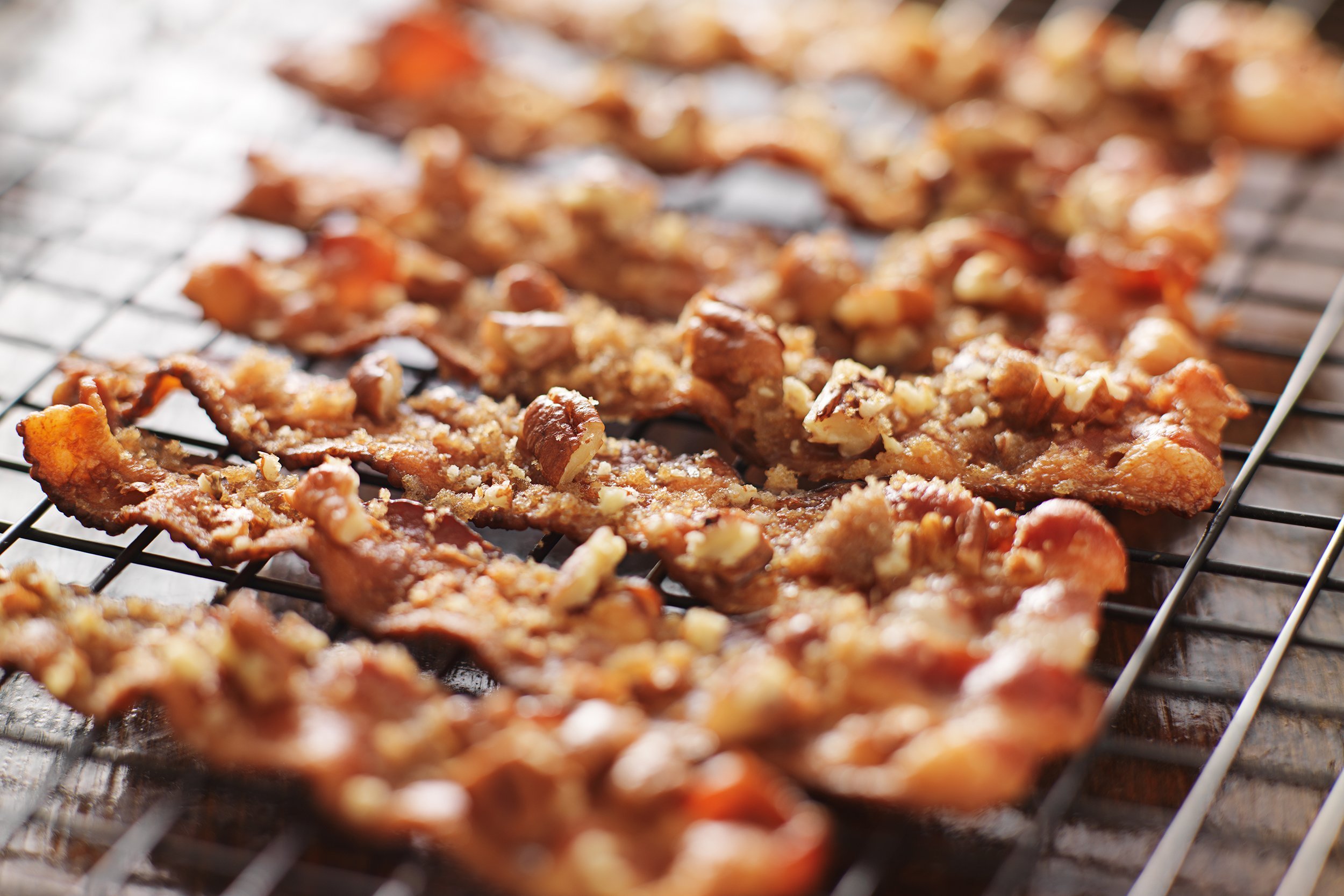
Cost of Bacon: $2.30
Inflation-Adjusted Cost: $5.11
1995
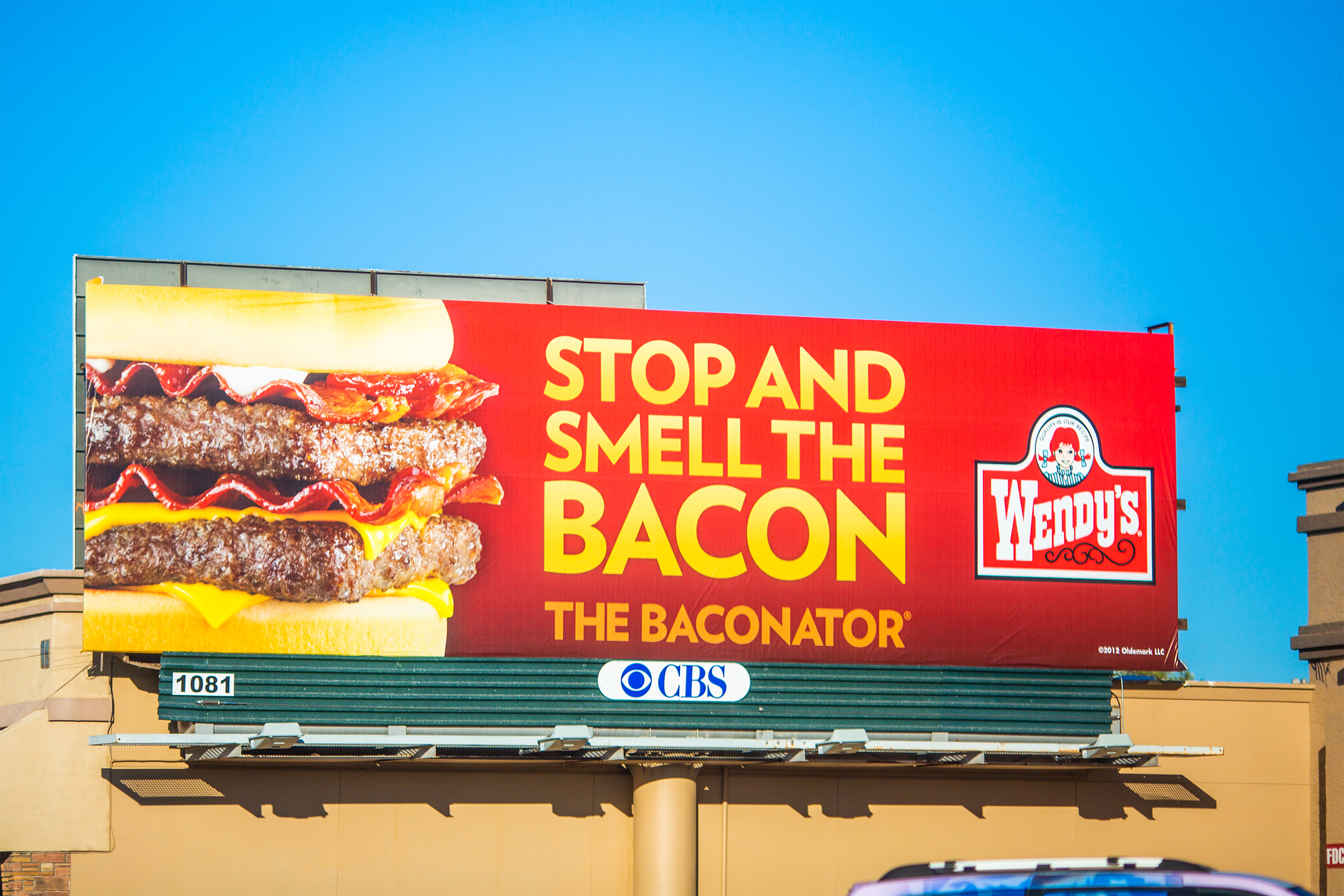
Cost of Bacon: $2.34
Inflation-Adjusted Cost: $5.06
Great strides in precooked-bacon technology during the early ’90s made it much easier for fast food companies to add bacon to their sandwiches. As a result, McDonald’s launched the Bacon Double Cheeseburger and Quarter Pounder BLT, followed by Burger King’s Whopper with bacon and Wendy’s Baconator. The trend set in motion bacon’s rise in popularity and prices increased with demand.
1996
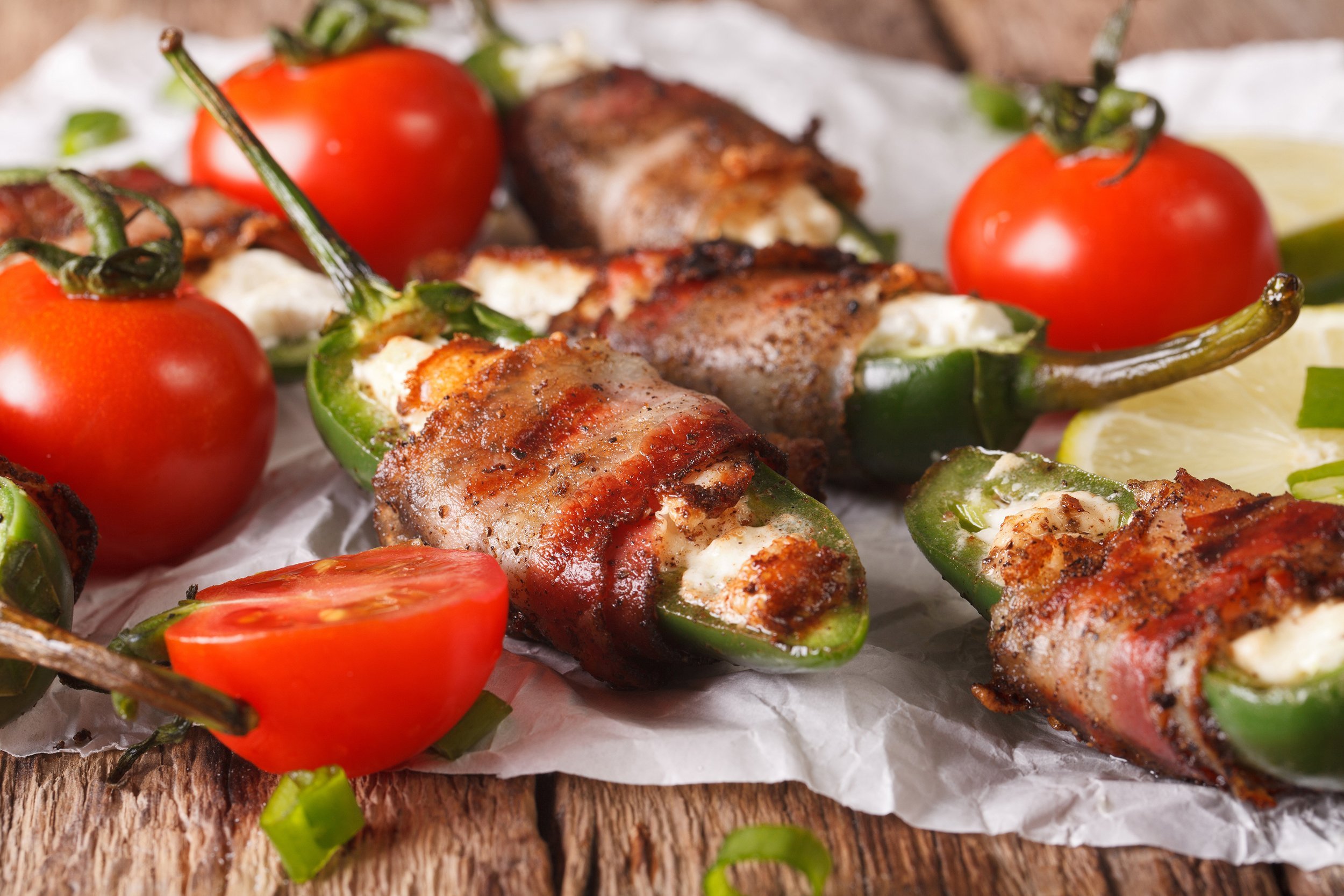
Cost of Bacon: $2.90
Inflation-Adjusted Cost: $6.10
1997
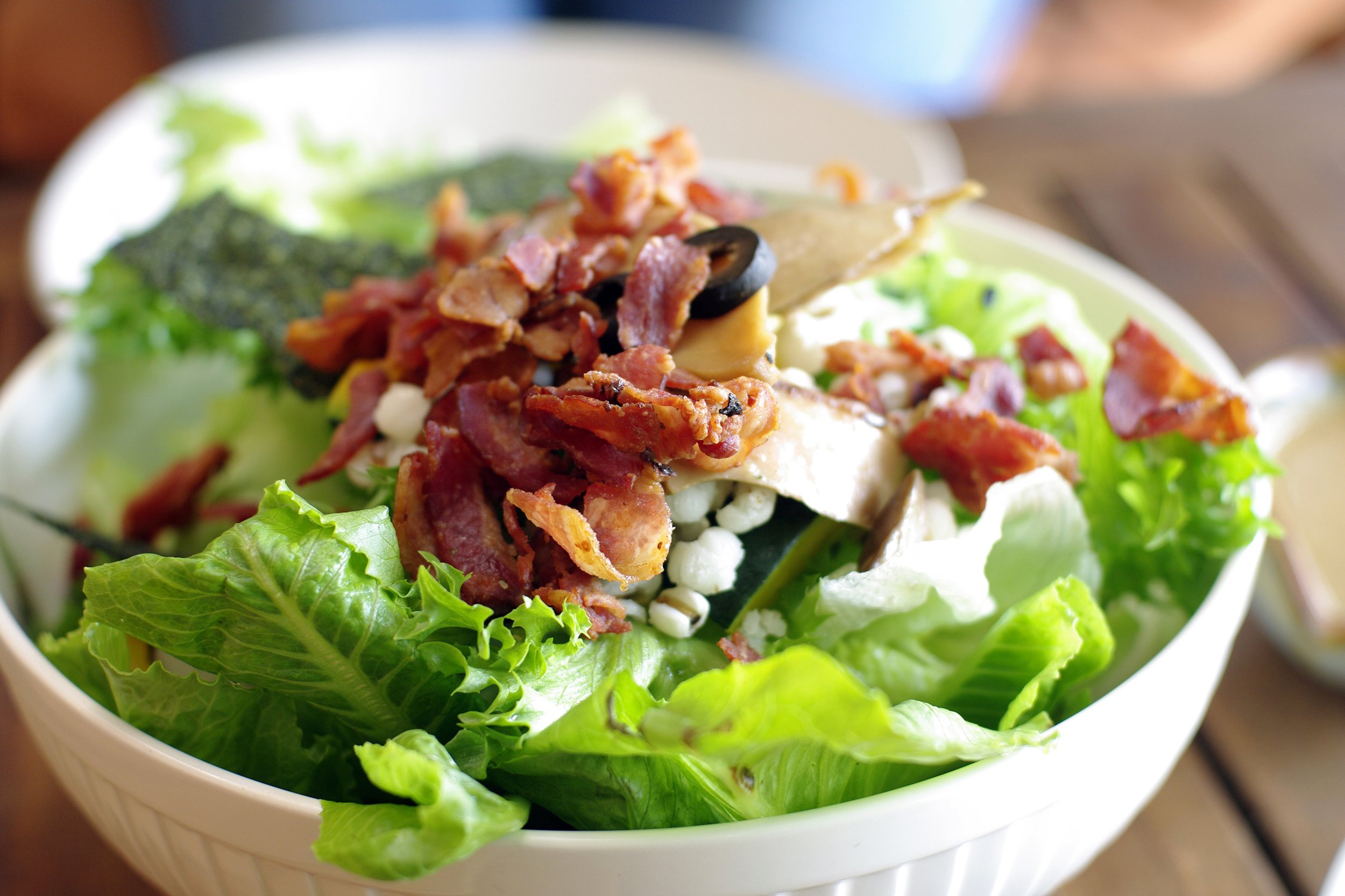
Cost of Bacon: $3.20
Inflation-Adjusted Cost: $6.53
1998
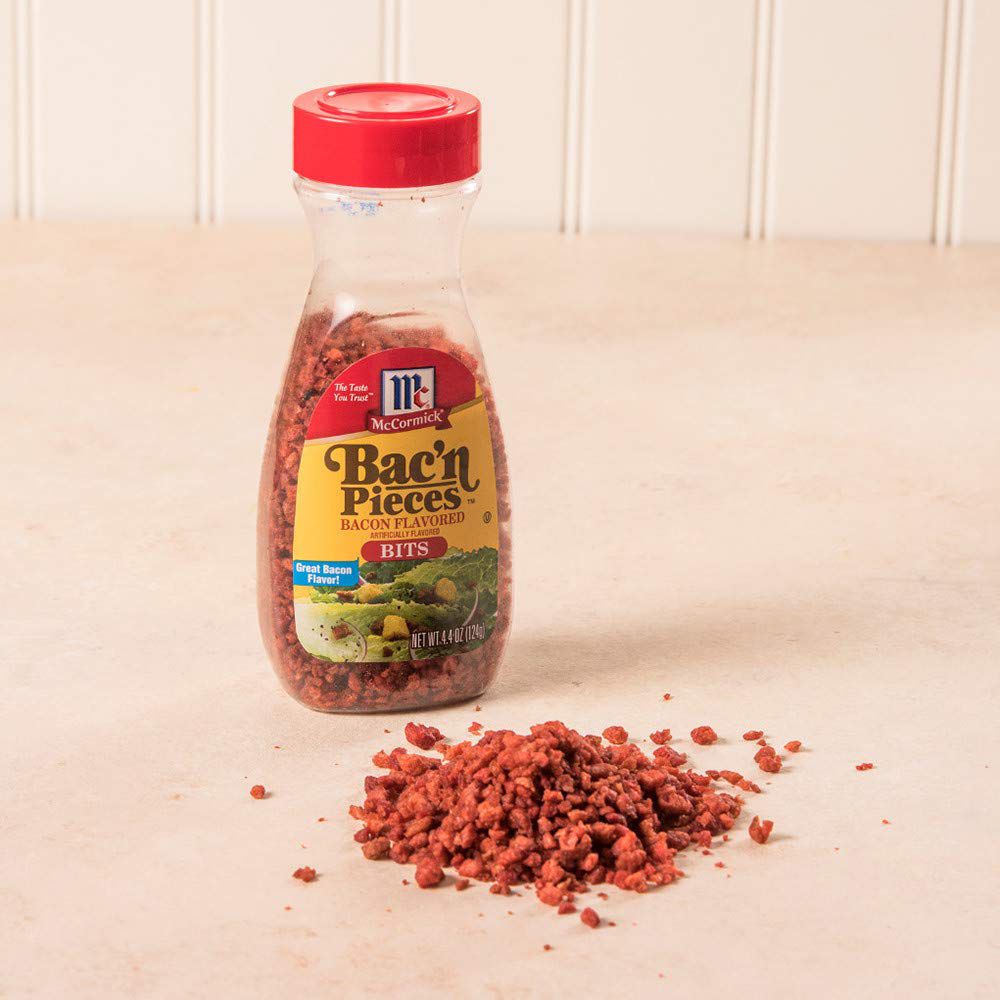
Cost of Bacon: $2.96
Inflation-Adjusted Cost: $5.95
1999
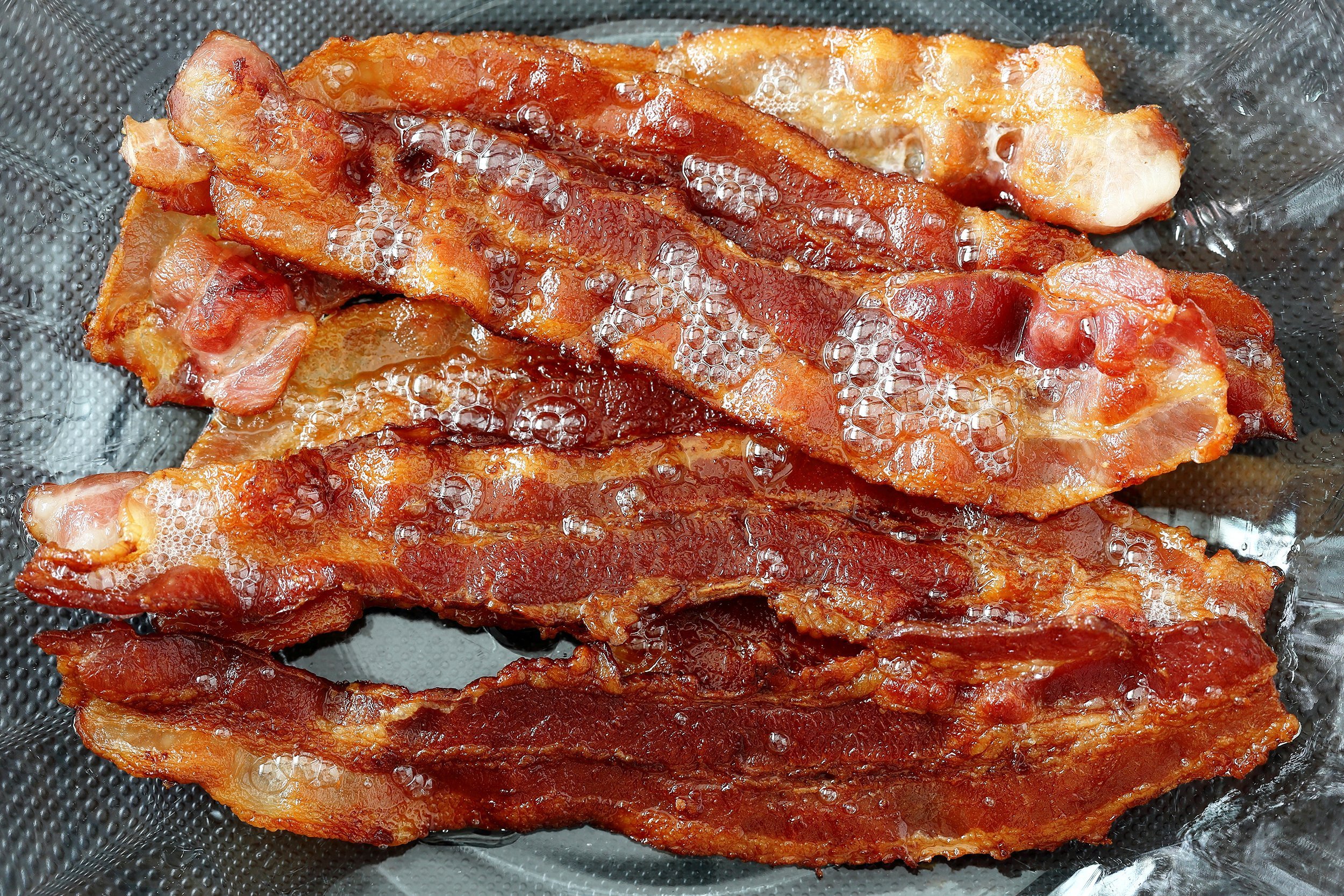
Cost of Bacon: $2.95
Inflation-Adjusted Cost: $5.83
2000
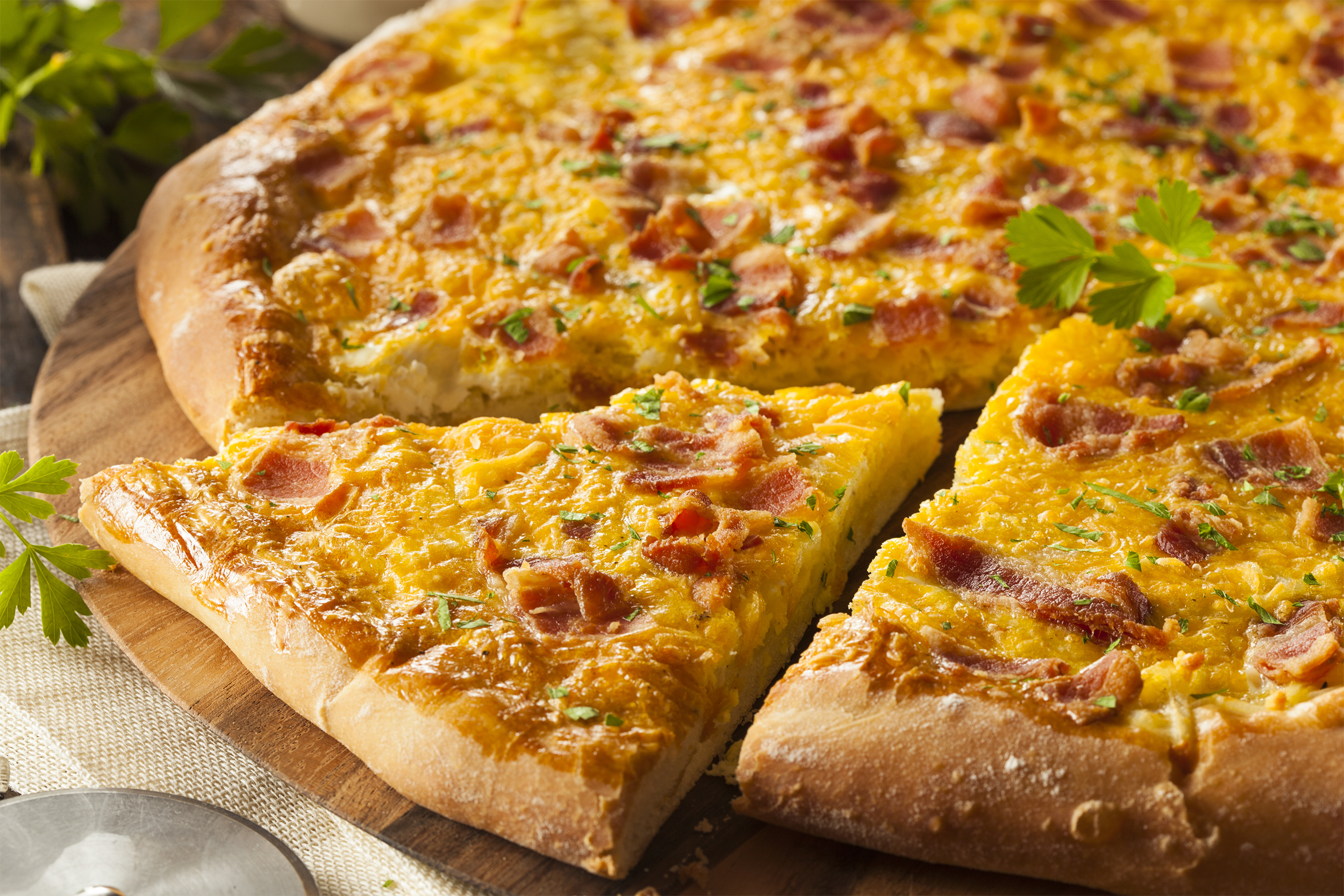
Cost of Bacon: $3.46
Inflation-Adjusted Cost: $6.66
After a few years of lower prices, bacon returned to its status as America’s favorite topping. At the same time, kale and healthy smoothies became increasingly popular, which prompted a counter-trend of bacon-lovers looking to indulge with even more bacon.
2001
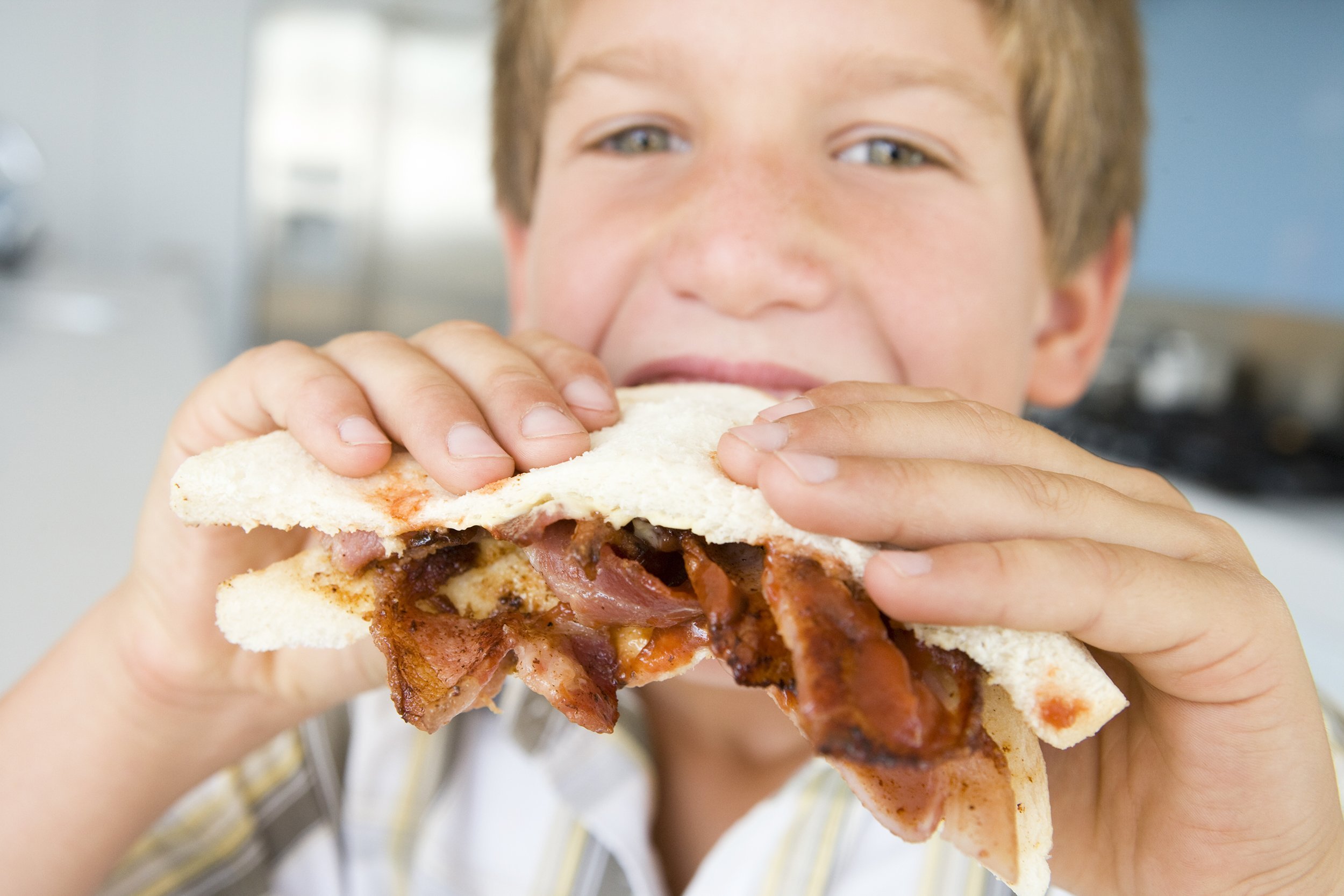
Cost of Bacon: $3.60
Inflation-Adjusted Cost: $6.68
2002
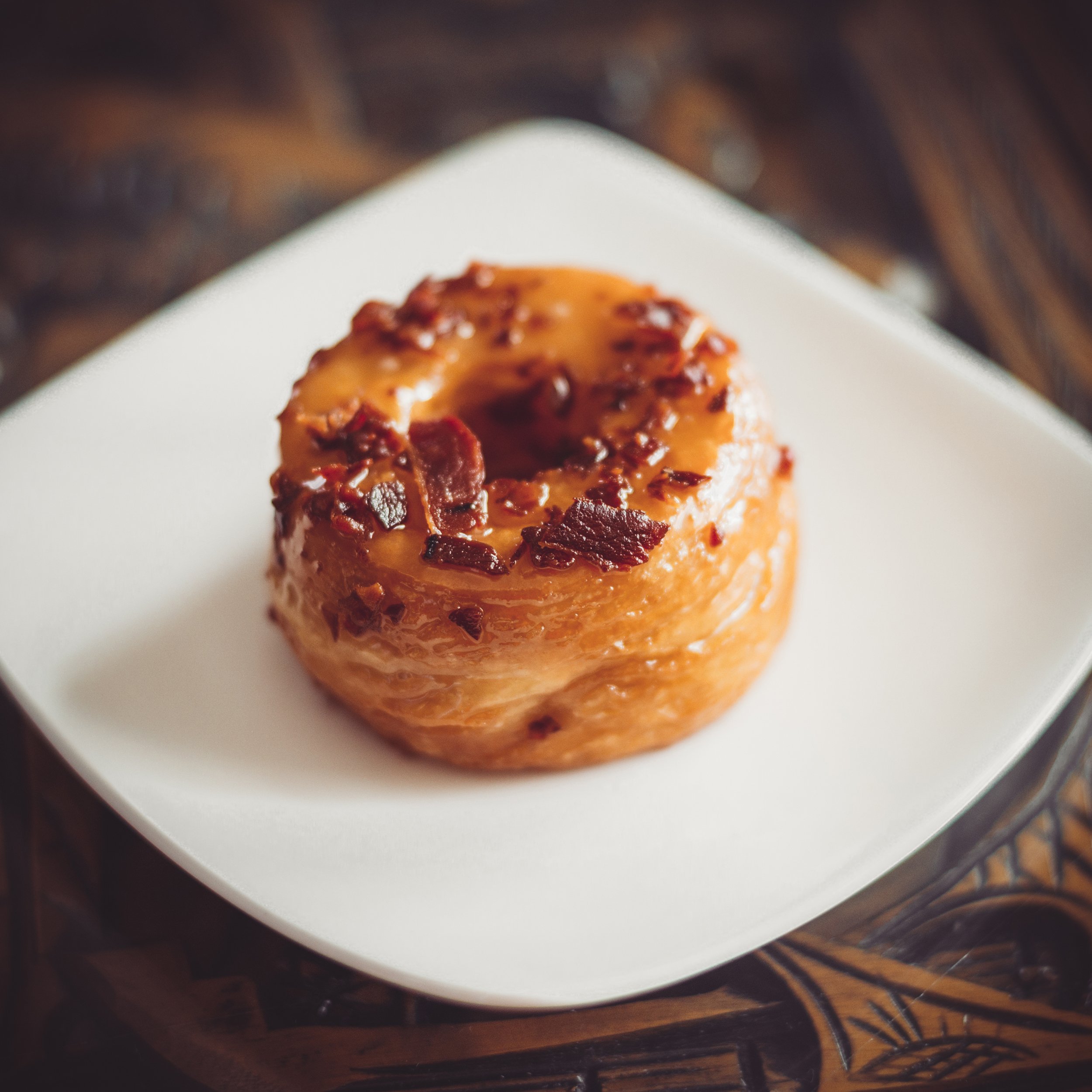
Cost of Bacon: $3.63
Inflation-Adjusted Cost: $6.66
Cookbook author Sara Perry releases “Everything Tastes Better With Bacon,” in May, and America agrees in a big way, seeming to take the title as a call to action. Despite the continued rising cost of bacon, we begin to see bacon everywhere — from bacon ice cream to bacon-topped doughnuts.
2003
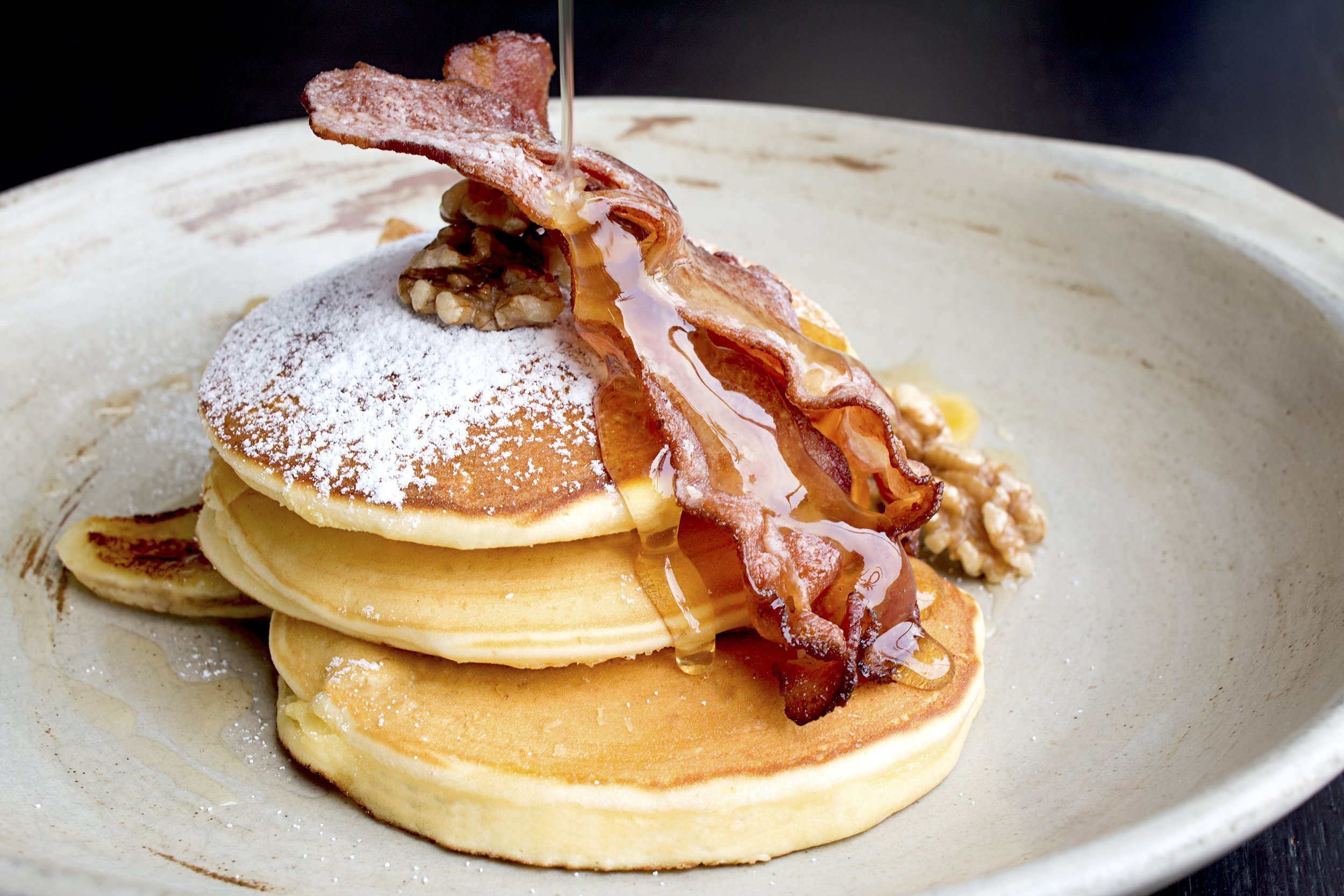
Cost of Bacon: $3.83
Inflation-Adjusted Cost: $6.85
More On Cheapism:
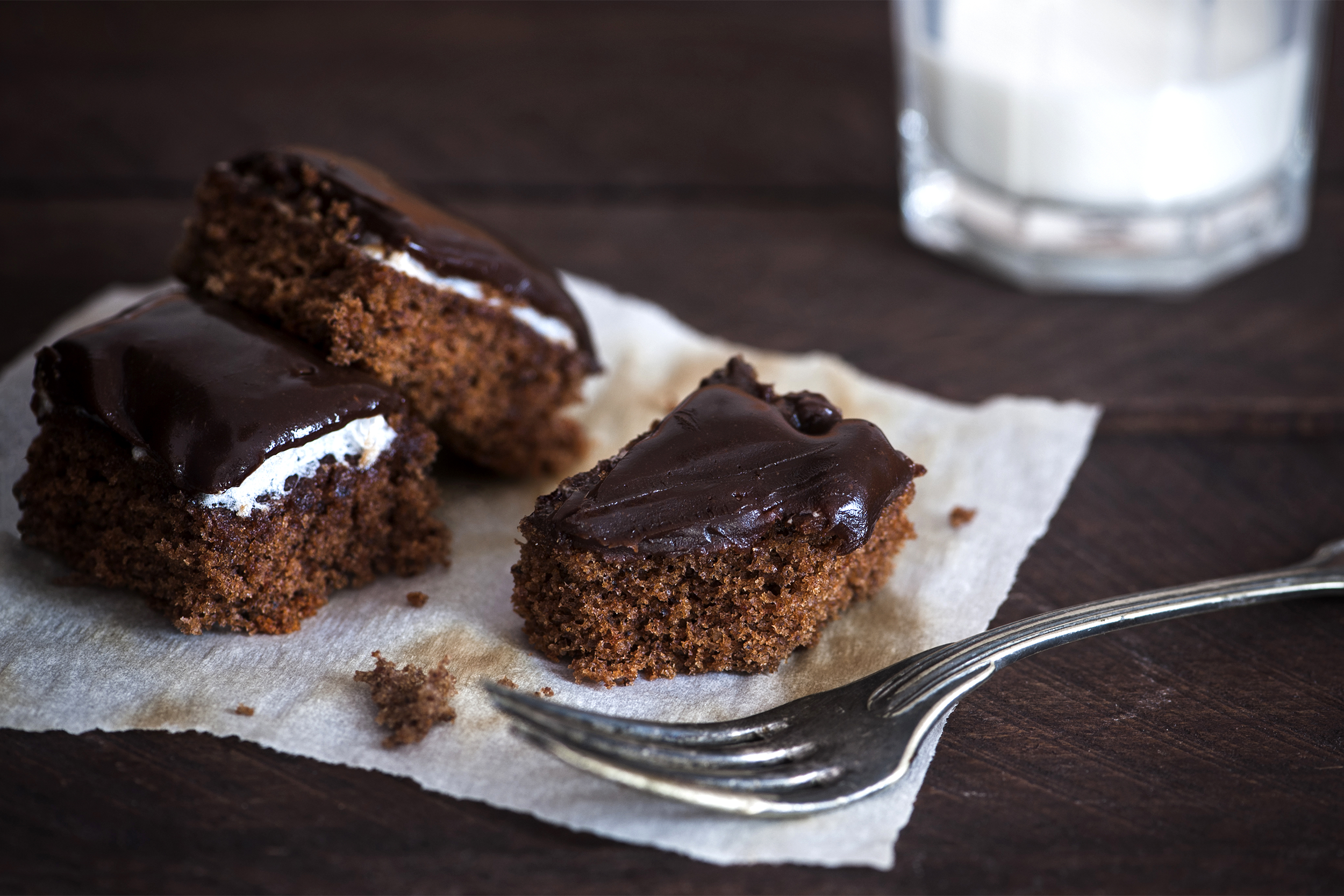
- 24 Depression-Era Desserts Worth Making Today — Classic recipes born from thrift and creativity during the hard times of the 1930s show how simple ingredients and resourceful cooks still deliver sweet comfort worthy of revival.
- 12 Things We Can Learn From the Great Depression — A dozen lasting lessons from the 1930s highlight how frugality, DIY skills and community solidarity still matter when budgets get squeezed.
- 25 Old-Fashioned Holiday Recipes That Boomers Absolutely Love — From deviled eggs to chiffon cake, these ’50s–’70s party staples are cheap to make and rich in nostalgic flavor—time to dust off the retro holiday favourites.
